When is the best time to visit Kenya?

Nov 17, 2023 • 7 min read
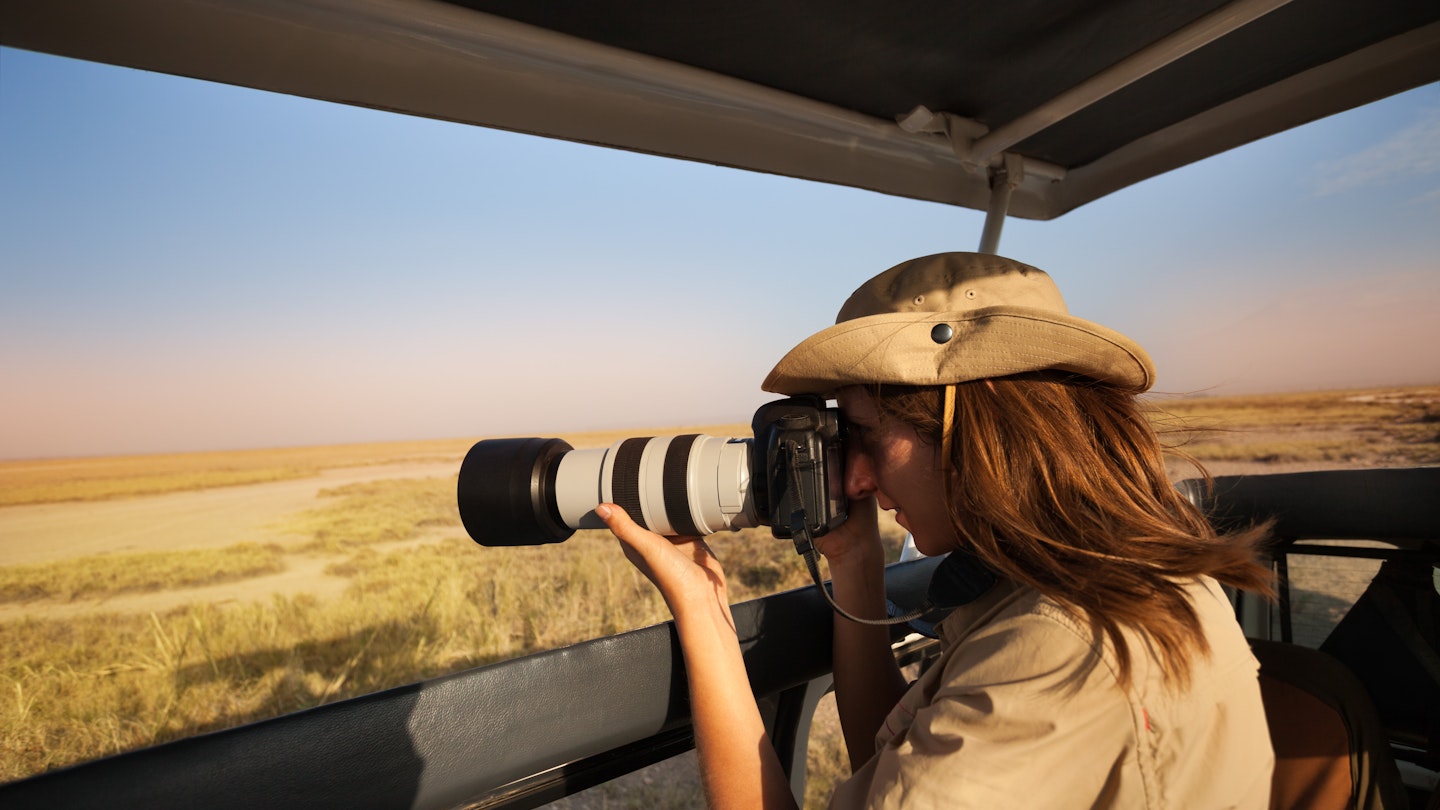
May is a good time for wildlife photography in Kenya, with incredible light and colors © SerrNovik / Getty Images
With about half the country on either side of the equator, Kenya ’s climate isn’t a straightforward split of dry and wet seasons. In fact, its dry season has a short wet season, and its wet season is interrupted by a dry one – clear as mud, right?
What this means practically is there’s not exactly a single best time to visit Kenya. There is somewhere ideal to visit at any time of year, but for the Great Migration, bird migration or quality diving, you’ll need to pick specific months.
For climbers, the dry season is prime time for safety and visibility. Temperatures are generally consistent across Kenya, with the coast hotter – but humidity can vary. It can get cold in the mountains, and Kenya’s highest peak, Mt Kenya , is always covered in snow.
This East African nation counts more than 42 Indigenous communities in its population of nearly 54 million people, and many festivals and events explore this diversity – from the Lamu Cultural Festival celebrating the archipelago’s Swahili heritage and the exuberant Mombasa Carnival to the diverse gathering that is the Lake Turkana Festival.


July to October and January to February are the best times to see the Great Migration
If the wildebeest migration is on your must-see list, head to the Masai Mara from July onward to observe one of nature’s greatest sights – thousands of wildebeest, zebras and giraffes making the move across the Serengeti.
These high-season months are an enjoyable time to visit any of Kenya’s parks because the grass is thin, there’s little rainfall and sightings are easier as animals congregate around waterholes; they're also climber-friendly because of good visibility and lack of rain. July is also a good time to spot huge flocks of pink flamingos at Lake Nakuru .
Much like July, August is one of the best all-around months to visit Kenya, but it’s a busy time. The Great Migration is well and truly underway, and wildebeest are filling the plains of the Masai Mara. If you’re not in the Mara, August is an excellent time to visit other national parks and conservancies around Kenya .
You can also visit Nairobi without the humid stickiness that makes urban exploring harder work. The capital’s food scene is popping, and Nairobi Restaurant Week is a chance to get your fill. For a hyper-local experience in Samburu County in northern Kenya, the one-day Maralal Camel Derby is a colorful display of camels, costumes and culture.
September offers the best of July and August in terms of weather and wildlife but with slightly fewer crowds, especially in the latter part of the month. You can still catch the migration as hot, dry weather sets in, and there’s almost no chance of rain. It's also when the East African Community Arts Festival JAMAFEST takes place. It’s every two years and rotates between East African nations.
Nairobi hosts the Tusker Safari Sevens in October, an annual Rugby Sevens tournament open to international teams, creating a buzz in the city. October 20 is Mashujaa Day, also known as Heroes Day, honoring those involved in Kenya’s independence movement. It’s a public holiday, and Nairobi and coastal areas are buzzing as Kenyans head to the beaches and parks.
Hot and dry, the high season beckons as the new year begins. January is a popular and busy time for everything: safari, hiking, city exploring, diving, snorkeling and beach stays. Dry season is particularly good (and safe) for climbing Mt Kenya and other peaks and for hiking in places such as Hell’s Gate National Park .
You can usually benefit from low season prices at Masai Mara because the big migration is over, and migratory birds fly into the Mara instead. Celebrate the dawn of a new year on a Mombasa beach ; the city hosts major celebrations.
February sees both the high and dry seasons in Kenya. The lack of rain makes it a popular choice for safari, with minimal muddy terrain and plenty of wildlife to see. It’s also a top time for climbing and hiking , although as it's peak season, crowds and prices can both increase.

November, December and March are the best times for lush landscapes and underwater adventures
November is a fun month for festival lovers, with both Mombasa Carnival and Lamu Cultural Festival celebrating the rich heritage of Kenya’s ethnic groups and communities.
Floats, music and dance epitomize Mombasa’s street party while on the archipelago of Lamu off the northern coast, Lamu Cultural Festival includes traditional dancing called ngoma and centuries-old skills such as dhow (sailboat) building, donkey racing, fish-trap making and dhow regattas.
For Kenya’s South Asian population, Diwali/New Year celebrations take place (sometimes in October), so the temples are buzzing, decorations are up and there’s an above-average production of Indian mithai (sweets). Weather is mixed with sun and rain, but November remains a good bet for safari.
If you like your landscapes lush and abundant, December in Kenya is magical. The rains tend to stop around the middle of the month, and Kenya’s parks take on a gorgeous green hue ahead of the upcoming second “high season” of January and February. Water visibility is optimal during the shoulder season too, so this is a great time for divers and snorkelers.
December 12 marks Jamhuri Day. Jamhuri means republic in Swahili, and this day is when Kenya marks its 1963 independence from Britain and its constitution as a republic a year later, with cultural events, dances and music.
The two-day Rusinga Cultural Festival on Lake Victoria celebrates the threatened culture of the Abasuba people, while the Beneath the Baobabs Festival in Kilifi is one of the country’s best music festivals, with East African and international performers, giant art and cool costumes.
It's getting hotter and more humid as the rainy season beckons, but March remains a particularly enjoyable time to be in Kenya. Prices can be in the traveler’s favor , and often the rains arrive later in the month, so you should be fine in the earlier half.
Diving and snorkeling are rewarding in March, with clear water and good visibility, and beach parties are especially welcome on these balmy evenings as the hot, dry season begins to give way to the rains. Muslim Kenyans observe the holy month of Ramadan, while for walkers, climbers and outdoors types, the Mount Kenya Festival is a celebration of the country’s highest peak.

April to June is the best time for smaller crowds and lower prices
The “long rains” hit in April and May, and sometimes in March too. While the rainy season can be off-putting for some travelers, this time of year can be incredibly rewarding, and the Mara remains accessible in March. Crowds thin out, and you can enjoy the quietness and solitude of nature.
Some safari lodges and camps close during this time because constant rain can hamper visibility in some parks, and the humidity can be uncomfortable. It’s still a great time to be by the coast, but heavy rains can reduce visibility for divers and snorkelers.
But don't dismiss May for safari or wildlife viewings! Yes, the grasses are longer, and sightings are trickier, but the light and colors can be extraordinary for photography. Samburu National Reserve in northern Kenya is a good choice as wildlife gathers on the riverbanks of the Ewaso Ngiro River.
June is a wonderful time to experience Kenya’s highlands, and with low humidity, walking and climbing become a little easier. This shoulder-season month is a lovely time for wildlife viewing, especially in northern Kenya after the long rains, and it’s also the start of the migration. The coast is mostly dry, and prices are a little lower before the high season kicks off in July.
Parades, singing and dancing take place on Madaraka Day on June 1 – the anniversary of Kenya’s move to self rule. The visually spectacular Lake Turkana Festival in the Rift Valley brings together different ethnic groups in the region, to both celebrate their diverse cultures and promote peace.
If you’re into off-road racing or want to watch, the Rhino Charge , a 4x4 race that raises funds to conserve mountain ecosystems, is quite a spectacle.
This article was first published July 2022 and updated November 2023
Explore related stories
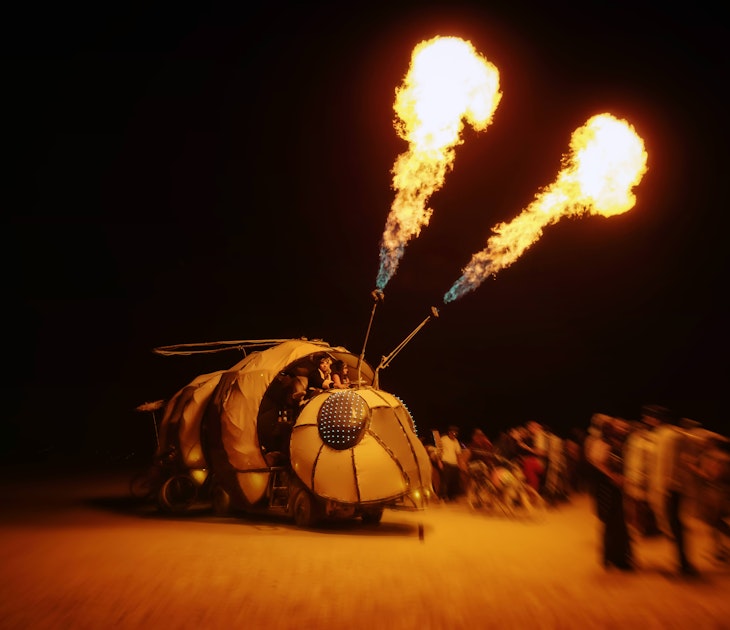
Jan 2, 2023 • 12 min read
Want to start planning for the year ahead? Featuring sports events, natural phenomena and more, these are 20 amazing trips to consider taking in 2023.

Feb 20, 2024 • 17 min read

Jan 2, 2024 • 11 min read
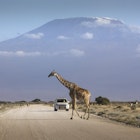
Dec 13, 2023 • 9 min read
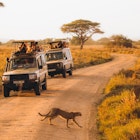
Dec 8, 2023 • 4 min read

Nov 30, 2023 • 9 min read

Nov 29, 2023 • 4 min read
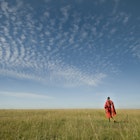
Nov 28, 2023 • 8 min read
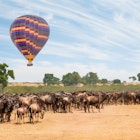
Nov 23, 2023 • 8 min read
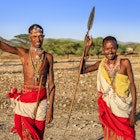
Nov 21, 2023 • 7 min read
- You are here:
- Kenya Tours
Your Safari
Tour length, rates in usd $ – change currency, starting from.
- Nairobi (1798)
- Mombasa (46)
- Diani Beach (9)
- Entebbe (5)
- Johannesburg (0)
- Zanzibar (0)
- Dar es Salaam (0)
- Kampala (0)
- Victoria Falls Town (0)
- Windhoek (0)
- Addis Ababa (1)
- Cape Town (0)
- Livingstone (0)
- Hoedspruit (0)
- Port Elizabeth (0)
- Antananarivo (0)
- Pretoria (0)
- Nelspruit (0)
- Bujumbura (0)
- Hazyview (0)
- Blantyre (0)
- Upington (0)
- Lilongwe (0)
Comfort Level
- Luxury+ (19)
- Luxury (490)
- Mid-range (952)
- Budget (321)
Private or Shared Tour
- Private tour (1,525)
- Shared tour (346)
Safari Type
- Lodge, tented camp or hotel (1,825)
- Camping (46)
Operator Rating
- & up (1,787)
Specialized Tours
- Fly-in safaris (68)
- Family (945)
- Beach time (128)
- Honeymoon (509)
- Gorilla trekking (25)
- Photographic safaris (3)
- Mountain climbing (34)
- Walking safaris (6)
- Self-drive (0)
- Guided self-drive (0)
- Chimp trekking (16)
- Overland tours (0)
- Cycling safaris (2)
- Canoe safaris (0)
- Horseback safaris (1)
- Birding tours (2)
- Accessible safaris (0)
- Golf & Wildlife (1)
Other Tour Features
- Airport transfer is included (1,848)
- Itinerary can be customized (1,615)
Filter by Operator
Filter by accommodation, operators from.
- Kenya (1,729)
- South Africa (13)
- Tanzania (59)
- United Kingdom (14)
- United States (73)
- Australia (0)
- Belgium (0)
- Botswana (0)
- Comoros (0)
- Denmark (0)
- Ethiopia (32)
- Eswatini (0)
- Germany (0)
- Ireland (0)
- Lesotho (0)
- Madagascar (0)
- Mauritius (0)
- Mayotte (0)
- Mozambique (0)
- Namibia (0)
- Netherlands (0)
- New Zealand (0)
- Nigeria (0)
- Portugal (10)
- Reunion (0)
- Seychelles (0)
- Singapore (0)
- Switzerland (3)
- Uganda (49)
- United Arab Emirates (0)
- Zimbabwe (0)
Kenya Safari Tours - Compare 1,871 Packages
Kenya is the historical home of the East African safari, a land of sweeping savannah grasslands inhabited by charismatic megafauna, including big cats, the Big Five (elephant, buffalo, lion, leopard and rhino) and just about everything in between. Elsewhere, landscapes here stir the soul with deserts in the north, dense forests in the west, Rift Valley lakes in the center and tropical coast out east. The result for those on safari is an experienced safari industry ready to show you a seemingly endless parade of wildlife against one of the most beautiful backdrops in Africa.

8-Day Best of Kenya Luxury Safari
$2,530 to $3,795 pp (USD)
Kenya: Private tour Luxury Lodge & Tented Camp
You Visit: Nairobi (Start) , Ol Pejeta (Laikipia) , Lake Nakuru NP, Masai Mara NR, Lake Naivasha (Naivasha) , Amboseli NP, Nairobi Airport (End)
Amazing Memories Safaris Tour operator has an office in Kenya
5.0 /5 – 184 Reviews

4-Day Wonder Safari
$994 to $1,592 pp (USD)
Kenya: Private tour Mid-range Lodge & Hotel
You Visit: Nairobi (Start) , Lake Naivasha (Naivasha) , Masai Mara NR, Nairobi (End)
Kameraz of Afrika Tour operator has an office in Kenya
4.8 /5 – 98 Reviews

4-Day Taste of Kenya - Mid-Range
$1,100 to $1,590 pp (USD)
Kenya: Private tour Mid-range Lodge & Tented Camp
You Visit: Nairobi (Start) , Masai Mara NR, Lake Nakuru NP, Nairobi (End)
Spirit of Kenya Tour operator has an office in Kenya
4.9 /5 – 483 Reviews
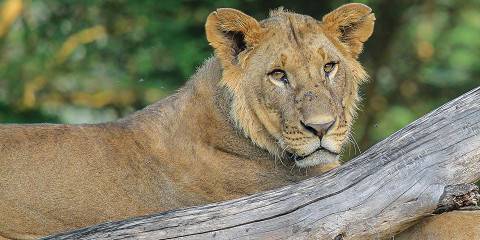
3-Day Masai Mara Kenya Safari Tour
$550 to $842 pp (USD)
Kenya: Shared tour (max 7 people per vehicle) Budget Tented Camp
You Visit: Nairobi (Start) , Masai Mara NR, Mara River, Nairobi (End)
Let's Venture Africa Safaris Tour operator has an office in Kenya
5.0 /5 – 25 Reviews

4-Day Masai Mara, Lake Nakuru National Park Lodge Safari
$1,188 to $1,320 pp (USD)
Kenya: Shared tour (max 6 people per vehicle) Mid-range Lodge
Madukha Tours and Safaris Tour operator has an office in Kenya
4.7 /5 – 26 Reviews

4-Day Masai Mara - Nakuru Private Tour(Mid -Range)
$1,078 to $1,342 pp (USD)
Kenya: Private tour Mid-range Tented Camp & Hotel
Jocky Tours and Safaris Tour operator has an office in Kenya
4.9 /5 – 1307 Reviews

3-Day Masai Mara Shared Budget Safari Tour 2024 - 2025
$365 to $585 pp (USD)
Kenya: Shared tour (max 8 people per vehicle) Budget Tented Camp
You Visit: Nairobi (Start) , Masai Mara NR, Nairobi (End)
Bienvenido Kenya Tours and Safaris Tour operator has an office in Kenya
4.3 /5 – 76 Reviews

3-Day Masai Mara Private Budget Jeep Safari
$660 to $935 pp (USD)
Kenya: Private tour Budget Tented Camp
Hyrax Safaris Tour operator has an office in Kenya
4.9 /5 – 251 Reviews

9-Day Luxury Spectacle Safari- Majestic Kenya Wonderland
$2,918 to $3,957 pp (USD)
Kenya: Private tour Luxury Lodge & Hotel
You Visit: Nairobi (Start) , Tsavo West NP, Amboseli NP, Lake Naivasha (Naivasha) , Lake Nakuru NP, Masai Mara NR, Nairobi (End)
Apodiformes Adventures Tour operator has an office in Kenya
4.8 /5 – 174 Reviews

10-Day Luxury Kenya Safari Tour
$7,657 to $9,262 pp (USD)
You Visit: Nairobi (Start) , Samburu NR, Mara North (Greater Masai Mara) , Diani Beach, Nairobi (End)

4.9 /5 – 149 Reviews

8-Day Amboseli, Naivasha, Hells Gate, Nakuru, Masai Mara
$2,035 to $2,915 pp (USD)
You Visit: Nairobi (Start) , Amboseli NP, Lake Naivasha (Naivasha) , Hell’s Gate NP, Masai Mara NR, Nairobi (End)
Meektrails Safaris Tour operator has an office in Kenya
4.8 /5 – 117 Reviews
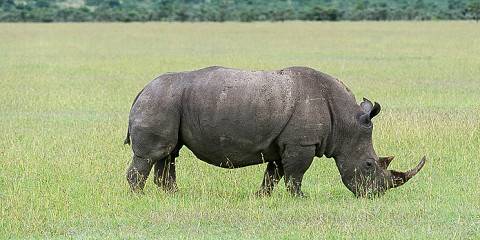
3-Day Safari Landcruiser Masai Mara Joining Group
$374 to $594 pp (USD)
Axis Africa Expedition & Safaris Tour operator has an office in Kenya
4.9 /5 – 1089 Reviews

7-Day Off the Beaten Path
$2,541 to $3,454 pp (USD)
You Visit: Nairobi (Start) , Samburu NR, Aberdare NP, Lake Nakuru NP, Masai Mara NR, Nairobi (End)
Trav-Interactive Tour operator has an office in Kenya
4.9 /5 – 20 Reviews
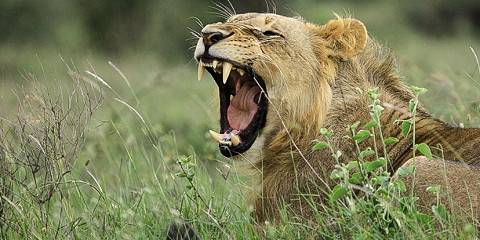
4-Day High End Super Luxury Migration Safari
$1,920 to $3,069 pp (USD)
Kenya: Private tour Luxury+ Tented Camp
Right Choice Tours & Safaris Tour operator has an office in Kenya
5.0 /5 – 237 Reviews
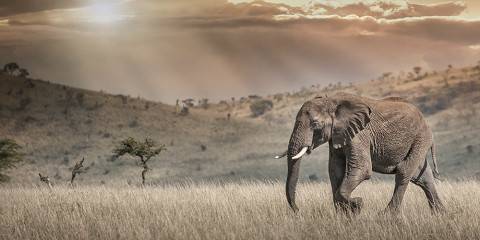
3-Day Little Governors' Camp Flying Package
$1,716 to $3,234 pp (USD)
Kenya: Shared tour (max 8 people per vehicle) Luxury Tented Camp
Kenya Tulia Safari Holiday Arcade Tour operator has an office in Kenya
5.0 /5 – 48 Reviews

3-Day Masai Mara Group Safari - Emayian Luxury Camp
$880 to $1,353 pp (USD)
Kenya: Shared tour (max 7 people per vehicle) Tented Camp
5.0 /5 – 16 Reviews
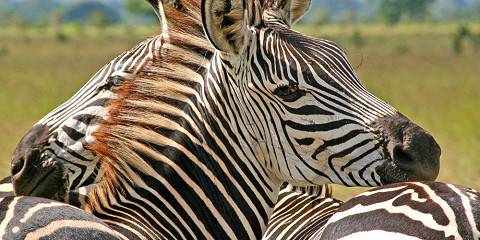
13-Day From Kenya to Tanzania and Zanzibar
$5,070 to $6,590 pp (USD)
Kenya & Tanzania: Private tour Mid-range Lodge & Tented Camp
You Visit: Nairobi (Start) , Lake Nakuru NP, Masai Mara NR, Serengeti NP, Ngorongoro Crater, Lake Manyara NP, Zanzibar (End)
Unlimited Expeditions: The Soul of Tanzania
4.9 /5 – 438 Reviews

4-Day Tsavo West, Amboseli & Tsavo East National Parks
$990 pp (USD)
Kenya: Private tour Mid-range Lodge
You Visit: Mombasa (Start) , Tsavo West NP, Amboseli NP, Tsavo East NP, Mombasa (End)
Kenya Bush Expeditions Tour operator has an office in Kenya
4.6 /5 – 64 Reviews

3-Day Masai Mara Game Reserve Safari
$825 to $957 pp (USD)
Kenya: Private tour Mid-range Tented Camp
You Visit: Nairobi (Start) , Masai Mara NR, Nairobi Airport (End)
White Plains Safaris Tour operator has an office in Kenya
5.0 /5 – 31 Reviews

3-Day Safari from Mombasa Tsavo East, Saltlick Lodge
$946 to $990 pp (USD)
You Visit: Mombasa (Start) , Tsavo East NP, Taita Hills WS, Mombasa (End)
Back of Africa Adventure Tour operator has an office in Kenya
4.8 /5 – 84 Reviews
Related Searches
- Kenya Tour Operators
- Cheap Kenya Safari Holidays
- All Inclusive Kenya Safaris
- Kenya Honeymoon Safaris
- Kenya Family Tours
- Kenya Camping Safaris
- Masai Mara Safari Holidays
- Amboseli Safari Holidays
- Tsavo East Safaris
- Tsavo West Safari Tours
- Kenya Safari & Mombasa
- Diani Beach Beach Holidays
8 Questions About Kenya Safaris

Answered by
Anthony ham.

When is the best time to visit Kenya?
“June to October is an excellent time for Kenya tours. During these months, the weather is generally dry (although it can get really hot in October and at the tail end of September) and most trails are open. This also coincides with the wildebeest and zebra migration in the Masai Mara National Reserve. This is the Dry season, and as it progresses, water sources for animals tend to dry up and become fewer, drawing animals in numbers to those that remain. One downside is that high-season prices apply during the Dry season months. Crowds are also larger – in some parks, the queue of safari vehicles can take away something from your experience, and some areas of the Masai Mara can be completely overwhelmed with vehicles during the migration. In the Dry season, June is one of my favorite months to visit. Visiting from November to February also has its devotees. At this time, migrating birds arrive, the rains rarely disrupt travel, and the country is transformed into a lovely shade of green. Most travelers avoid March to May because heavy rains are always possible and can transform safari trails into muddy bogs. That said, prices are lower and I visited once in April and was lucky to find very few other visitors (except for local visitors around Easter) and clear skies.”
Why visit Kenya? What are the major attractions?
“Outstanding wildlife is the main reason to visit Kenya. While many visitors come for the migration, Kenya is excellent year-round, with a large number of world-class national parks – apart from the Masai Mara, there’s Amboseli, Lake Nakuru, Tsavo East and Tsavo West National Parks and Samburu National Reserve – where superb wildlife viewing is almost guaranteed. It all adds up to Kenyan safari possibilities of great variety. Kenya is Big Five territory, with healthy populations of elephant, buffalo, lion, leopard and rhino, but the birdlife is also outstanding, as is the cultural element – this is the land of the Maasai, Samburu, Turkana and others. The sheer number of habitats, too, make for wonderful scenery – endless horizons in the Masai Mara, tropical forests in Kakamega Forest National Reserve, the starkly beautiful parks of the north, and peerless Kilimanjaro views from Amboseli.”
What does a Kenyan safari cost?
“It all depends on what sort of safari you want and can afford. Kenya has more variety than most other African safari destinations, with excellent options from the lower end of the pricing scale (from US$200 per person per day) to luxury Kenya safaris (up to US$1,000). While accommodation is partly what will determine the price for many travelers, it can also depend on how you wish to travel between the various parks. Air transfers, usually via Nairobi, can be expensive, but dramatically reduce the amount of time you’ll spend on the road, thereby maximizing the amount of time you’ll get to spend in the parks themselves. Remember also that most Kenya safari packages will include transport, accommodation, all meals and activities (including game drives).”
How is the wildlife viewing?
“It can vary from park to park. Most of the more popular parks that you can visit on a Kenya tour – Amboseli, Masai Mara, Samburu and Lake Nakuru – have fabulous wildlife-viewing opportunities. Dense wildlife populations in all of these parks make them good all-round safari destinations that enable you to see as many animals (and different species) as you can in a short period of time. Other parks are more specialist – such as the birds and primates of Kakamega, and the sitatunga in Saiwa Swamp National Park – allowing you to tick off a hard-to-find species, usually without the crowds. And a more exclusive Kenyan safari experience is possible in the conservancies of Laikipia Plateau – you pay more, but, with the exception of Ol Pejeta Conservancy, crowds are non-existent and wildlife viewing is excellent. At most of these conservancies, you can get off-road as well, meaning that you’ll get a lot closer to the animals than you will in a national park.”
How safe is Kenya for tourists?
“For the most part, a Kenya safari is safe, but there are some important things to know. Nairobi and, to a lesser extent, some other Kenyan cities have a reputation for violent crime. I’ve spent a significant amount of time in Nairobi and elsewhere and have never once had a problem, but it does happen often enough to mean that you should always be careful and follow local advice when it comes to these cities. Another potential danger comes from traveling on the country’s roads – the accident rate is extremely high. You can minimize the danger by spending as little time as you can in Nairobi and other cities (in any case, Kenya’s charm rarely resides in its major urban centers), by never traveling at night and by flying between the parks. The danger from wild animals is minimal; most Kenya safari trips and operators have excellent safety records, and you should be fine if you follow the safety briefings and instructions from guides.”
How do I select a reliable tour operator for a Kenyan safari?
“The best way to choose a Kenya safari is to read all about the safari experiences of other travelers at SafariBookings.com – chances are that their reviews will answer many of your questions (before you’ve asked them), as well as speak to the professionalism of the various operators with whom they’ve traveled. Otherwise, it’s extremely important that you contact any tour companies with whom you are considering traveling before you make a booking, and ask any questions you may have. This could be anything from the mode of transport, frequency of meals or daily safari schedules to the languages spoken by your guide or how many other travelers will be in your vehicle. Be as specific as you can. Not all operators offer customized Kenya tours, it’s true, but there’s no substitute for being informed. The operator’s willingness to answer questions can be a good guide to their dealings with people on safari.”
What type of accommodation can I expect?
“As a general rule, the higher your Kenya safari prices, the better you can expect your accommodation to be. At the lower end, campsites are usually basic, sometimes crowded and not always in the best locations within the national parks or reserves, but they are well priced and often have ample facilities such as showers and toilets. Lodges are the mainstays of the Kenya safari scene and the quality varies considerably. Many lodges within the reserves and national parks have excellent locations but are aging and in need of renovation, while others are luxurious and recently overhauled. In tented camps, including mobile camps, you’ll sleep in large, walk-in tents – they’re like lodge rooms in terms of size but with canvas for walls and floor. Canvas tents mean that you can hear the sounds of the African night. Hopefully you won’t hear the sounds of your neighboring guests if the tents are nicely spaced. Most lodge rooms and tents of this kind have comfortable (not camp) beds, sometimes a desk and usually a private bathroom; some even have an outdoor shower with no roof but walls that protect your modesty. Particularly in tented camps, you’ll most likely need to recharge your devices not in your room but at a power station in the main public area.”
What can I expect from a safari in Kenya?
“Most days out on safari begin with a quiet African voice waking you well before sunrise. After dressing quickly, and having a coffee or tea, you head out for a few hours in a safari vehicle (with other guests, a driver, guide and sometimes a tracker) looking for wildlife – this time, and the last hours before sunset, are ideal for viewing wildlife. You’ll return to the lodge or camp mid- to late morning for a proper sit-down breakfast. A few hours of relaxation, followed by lunch, then a few hours more doing very little occupies the hottest part of the day, when even animals retreat into the shade. Afternoon tea, often known as High Tea in a nod to colonial-era safari traditions, happens around 3 PM or 3:30 PM, then it’s back out looking for wildlife until after dark. Just before sunset, you’ll stop for another safari institution, the ‘Sundowner’, when you’ll watch the sunset while nursing the drink of your choice. You arrive back in camp in time to freshen up, then it’s dinner and off to bed, before it all starts again very early the next morning.”
Kenya Safari Reviews

Stuart is a travel writer and author of numerous Lonely Planet guidebooks, including 'Kenya', 'Rwanda' and 'Tanzania'.
East Africa’s Most varied Nation
Kenya is the original home of the safari. This is the land of the world renowned Masai Mara National Reserve where tawny coloured lions feast off the hundreds of thousands of wildebeest that annually migrate into the country from...
Full Review

Alan is a travel writer and author of over 20 Lonely Planet guidebooks, including the guides to Southern Africa and Zambia & Malawi.
A Safari Behemoth
In some ways, Kenya rates as the best country for safaris in Africa. That is a contentious statement and many would argue that Tanzania should be given that title. Whichever way you go, Kenya is undeniably a destination which will fulfill...

Excellent Safari Experince
I booked a trip with Leisure Escape Safari. They did an excellent job. The trip to Kenya was very good. Hospitable people. I visited four national parks. I started in Nairobi and first visited Amboseli, then Naivasha Lake, Nakuru Lake and...

It was simply beautiful
We really enjoyed the tour. The vastness of the parks is impressive. There is something to discover everywhere. The landscape alone is fantastic. Watching the animals makes it even more exciting. Our driver Maromaro was very friendly and...
Great sights on the Mara
I had a great stay in Masaai Mara. It was my second time and there are so many incredible sights. We got very close to a group of elephants and saw an interesting encounter with a pack of hyenas following a big cheetah. I really enjoyed it!...
It's amazing journey in Kenya!
It was my first time to be Kenya, didn't get much impression about Nairobi because only stayed there for one night. However, the following tour with Beacon Safaris was really fantastic. What surprised me was that the country looked so...
This website uses cookies to ensure you get the best experience on our website. Learn more
- Australian Dollars
- British Pounds
- Canadian Dollars
- New Zealand Dollars
- South African Rands
- Swiss Francs
- U.S. Dollars
Talk to an expert 1-800-242-2434 Lines open now
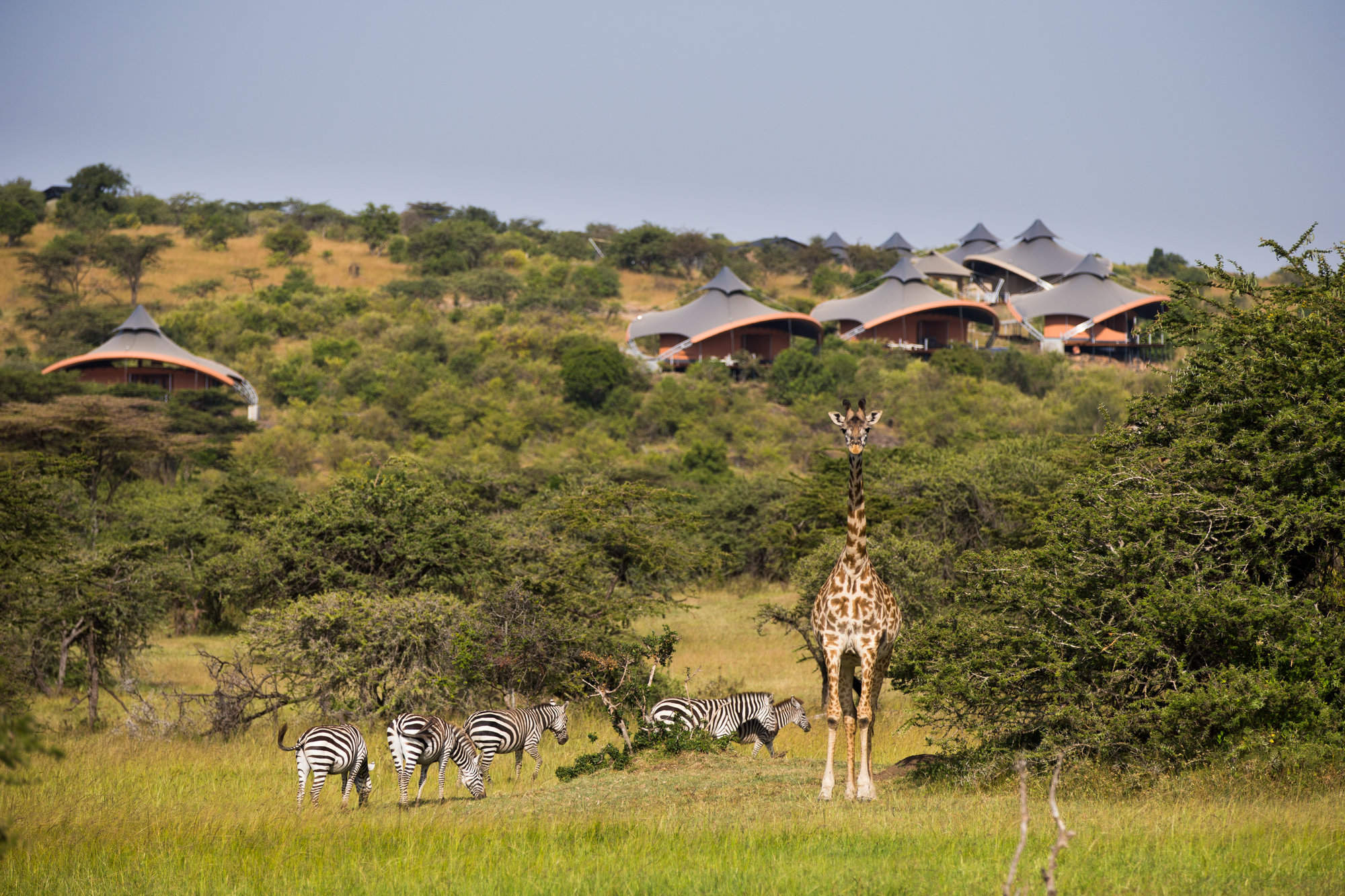
Weather & climate
Kenya: Weather & climate
The best time to visit kenya, kenya through the year, staying warm on safari, sea conditions, the great migration, weather through the year, weather in other african countries.
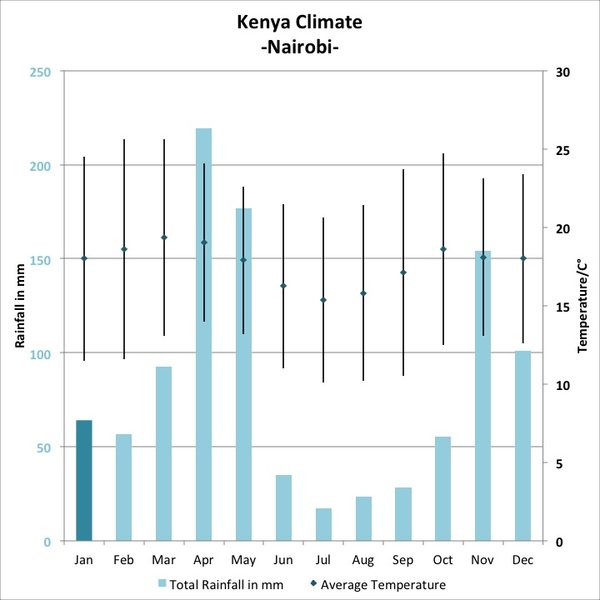
January: Clear, hot days and warm nights make this high season popular for safaris and diving.
February: With the wildlife seeking water points, this is a good safari season.
March: Hot, increasingly humid weather gives way to rains and lower rates.
April: You may have facilities to yourself in this more affordable low – or 'green' – season
May: As vegetation runs riot, the colours and light are great for photography at this time.
June: Cloudy, cooler weather makes for more comfortable conditions, especially higher up.
July: Kenya’s 'cool' season sets in and migrating wildebeest start arriving from the Serengeti.
August: The Great Migration fills the Mara plains – and school's out, making for busy parks.
September: The clearing skies signal the start of hot, dry weather with little chance of rain.
October: Hot, mostly dry and not too busy, this is many people’s preferred month for a safari.
November: The 'short rains' usually start in the second half, so this is low season.
December: The short rains usually finish by mid-month, and landscapes often look their best.

Need inspiration?
Let our trip chooser narrow down the options for you
Login to Expert Africa
Sign in with password
Sign in with email link
New to Expert Africa? Create an account
Forgotten your details?
It's free & quick to set up
- Save your wish-list
- Send us an enquiry
- Pay online for your trip
- Subscribe to our newsletter
- Give us feedback on your trip
- Full site benefits of the site
Need some help? Talk to our team

- Kenya safaris
Kenya safari guide – where & when to go, and what to see
Kenya safaris rock! Kenya is one of East Africa’s premier safari destinations, with massive open savannah regions hosting a huge breadth and depth of African wildlife. Over 10% of the country is protected in some form or other, and national parks in Kenya rate as some of the best in the world. A safari in Kenya almost guarantees you a sighting of the big five African animals of lion , buffalo , elephant , rhino , and leopard . Alongside these big-hitters are hundreds of other species of African animals, and some of the world’s most diverse bird-life.
Straddling the equator, Kenya is dominated by the Rift Valley – a huge range of valleys strung along a 5,000 km crack in the earth’s crust that runs through East Africa. Within the Rift Valley are Africa’s highest peaks – in Kenya these are the volcanoes of Mount Kenya and Mount Elgon. East of the Rift Valley are the coastal plains, whilst the north of Kenya is made up of arid wastelands. The prime Kenya safari destinations are the Central Highlands and areas within the Rift Valley. The south of the country hosts the great migration of plains animals and their predators each year between June and November. In short, Kenya safaris are up there with the very best in terms of wildlife and scenery.
Self-drive safaris are an option in many national parks in Kenya, though to enjoy full access to the most remote (and tourist-free) areas you’ll need a 4WD car or jeep. If you fancy taking a tour or arranging your own guide and/or driver have a look at our list of safari tour companies in Kenya before arrival in the country.
Alongside safaris and wildlife spotting, a visit to Kenya allows you to easily extend your safari with a visit to a resort on the Indian Ocean coast, or with activities such as trekking, hiking, sailing or diving .
Useful resources
- Book a Kenya Safari
- Kenyan Ministry of Tourism
- Kenya Wildlife Service
Kenya safari highlights
Experience maasai culture.
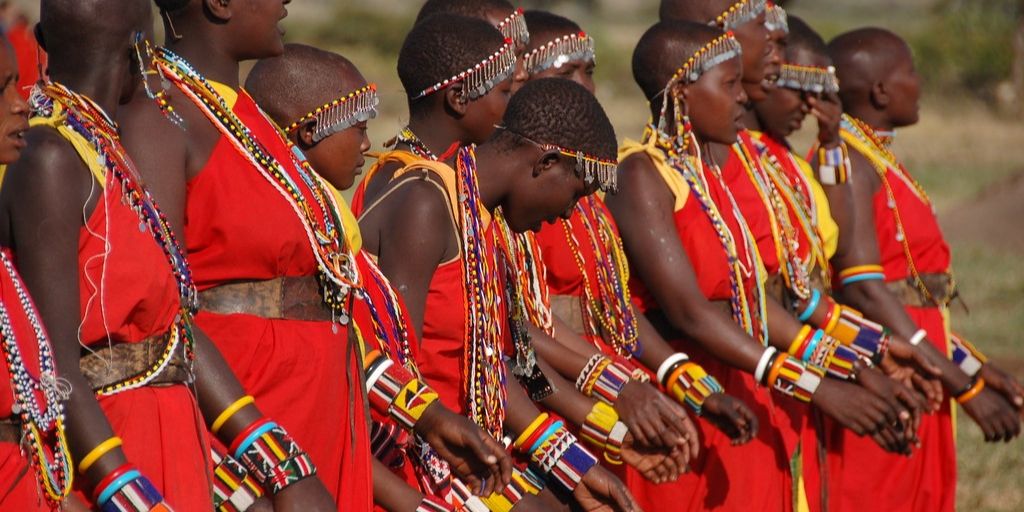
The Maasai are one of the few African tribes who have retained most of their traditions, lifestyle, and lore – along with their distinctive red robes. Many safari lodges and operators work with local Maasai on community projects. Experiencing some time in a Maasai village whilst in Kenya is a unique cultural experience that will help put your visit in context.
Big five spotting

Big five spotting in Kenya is high on most visitor’s safari checklist, and with Kenya’s superb network of national park gems seeing Africa’s biggest beasts up close and personal is a realistic goal. Destinations rich in lion, leopard, elephant, rhino, and buffalo are clustered in the south of the country, particularly Amboseli, Masai Mara and East and West Tsavo (for the Tsavo lions !) national parks.
Watch the ‘Great Wildebeest Migration’

Indian ocean beach perfection

Best time to safari in Kenya
The peak tourist season in Kenya is January and February when the weather is consistently warm and dry, with wildlife easy to spot in large concentrations. If you take a Kenya safari in peak season expect to be in company with crowds of tourists, and paying top dollar for your safari. If you’re specifically after catching sight of the annual great migration, June to October is the time to head to the Masai Mara National Park in southern Kenya.
The long rains hit Kenya through March, April and May, and the short rains from October to December. During the short rains, it generally rains only for short periods at a time, meaning your wildlife viewing will not be too disrupted. This is the time you can get some great deals on safari tours, or safari lodges if you’re travelling independently.
Flights To Kenya
Search, track and book flights to Kenya, from anywhere in the world.
Kenya Accommodation
Find safari accommodation in Kenya – from budget campsites to luxury lodges.
Kenya Car Hire
Considering a self-drive safari? Research and book car hire in Kenya.
Activities in Kenya
Search and book things to do in Kenya – tours, excursions and activities.
National parks in Kenya
With a stunning array of wildlife and more than 10% of the country given over to national parks and reserves, Kenya is undoubtedly one of the world’s best safari destinations. Whilst the world-famous Kenyan national parks such as Masai Mara and Amboseli National Parks can be uncomfortably heaving with tourists in January and February, Kenya has plenty of smaller, out of the way national parks that see only a trickle of visitors year-round. As such it’s well worth taking the time to consider whereabouts in Kenya to go on safari if you’re visiting during peak season.
Top Kenya national park picks
Masai mara national reserve.
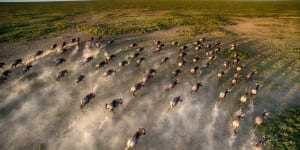
Situated in southwest Kenya, the Masai Mara is part of the northern section of the Serengeti National Park, and is generally recognised as one of the greatest wildlife reserves in Africa. The reserve is famous for the abundance of predators – particularly big cats – and the great wildebeest migration to feed these predators, as well as the Maasai people themselves.
- Lake Nakuru National Park
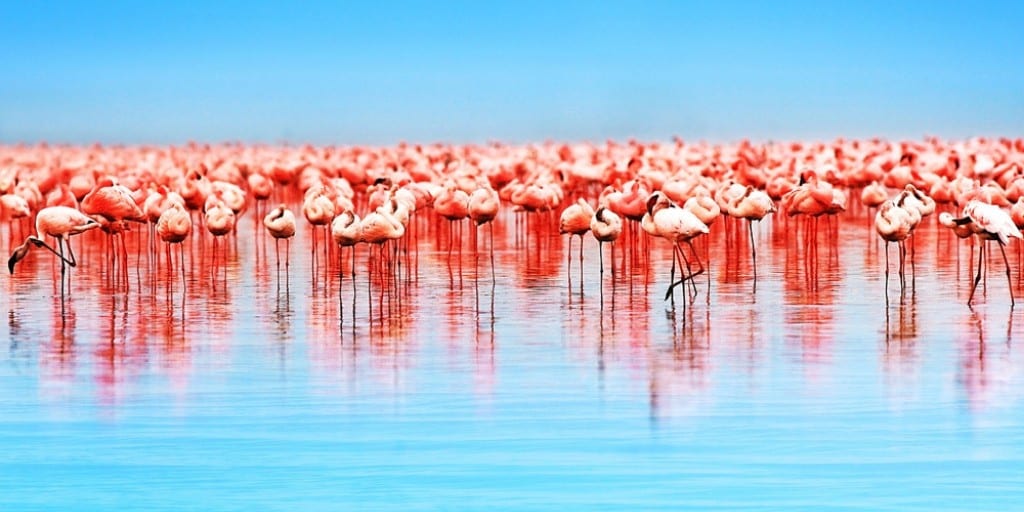
The stunning Lake Nakuru National Park is on the floor of the Great Rift Valley, surrounded by bushy grasslands and woods. There are 56 species of mammal in the park, but the star show are the thousands of flamingos, arriving in their millions some years.
- Amboseli National Park

Crowned by Africa’s highest peak, Mount Kilimanjaro, Amboseli is one of Kenya’s most popular parks . The name ‘Amboseli’ comes from the Maasai language and means ‘salty dust’… perfect for the large herds of elephants that roam the park.
- Meru National Park
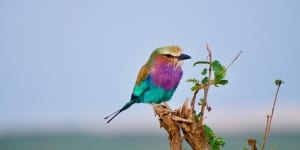
Meru National Park is a Kenyan park is located 350 km from Nairobi, featuring multiple landscapes including grasslands, swamp, jungle and rivers. It’s a birders paradise with over 427 recorded bird species, in addition to the big five .
All national parks in Kenya
Use the map below to locate all national parks in Kenya. Click the icons for more info.
Get Directions
- Aberdare National Park
- Arabuk Sokoke National Park
- Hell’s Gate National Park
- Kakamega National Park
- Lake Bogaria National Park
- Malindi Watumu National Park
- Masai Mara National Park
- Mount Elgon National Park
- Mount Kenya National Park
- Nairobi National Park
- Saiwa Swamp National Park
- Shimba Hills National Park
- Tsavo National Park
Kenya safari resources
Kenya safari companies.

There are plenty of companies offering safari tours around Kenya. The focus is on the high end, but there are some companies that specialize in mid and budget safaris. Check out our reviews of safari tour companies in Kenya .
Kenya safari lodges
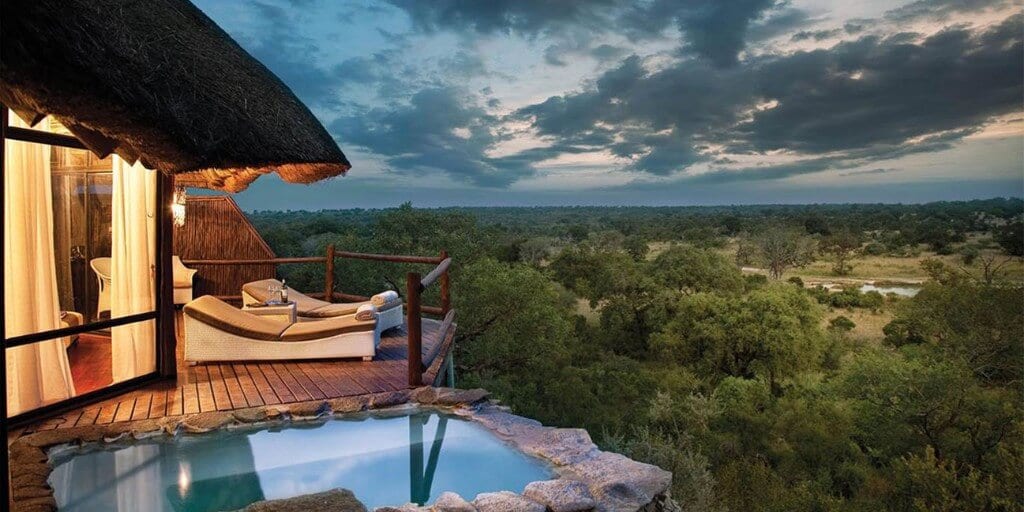
As a tourism-focussed country, Kenya has plenty of choice when it comes to safari accommodation. Lodge standards vary from rustic to modern, from the simple room to extreme luxury with en-suite private plunge pool. Search and book accommodation in Kenya .
For a trip to Kenya, travellers are required to apply for a visa. The easiest, most commonly used visa for going on a safari in Kenya, is the Kenya e-visa . It is valid for 90 days, and can even be extended once to 180 days once you arrive in Kenya. The visa can easily be applied for online and will save you the hassle of having to apply at an embassy or consulate.
Read safari guides to all countries
Botswana safaris , Namibia safaris , Rwanda safaris , South Africa safaris , Tanzania safaris , Uganda safaris , Zimbabwe safaris
Do you have any experience of planning or going on safari in Kenya?
We’d love to hear any feedback or tips you may have – please get in touch , or add to the comments below.
Top countries for safaris
- Botswana safaris
- Namibia safaris
- South Africa safaris
- Tanzania safaris
- Uganda safaris
Safari basics
- Safari animals
- How to find the right safari company
- When to go on safari
- What to take on safari
- Safari clothing – what to wear
- Safari rules & etiquette
- Wildlife spotting tips
Most read articles
- All about the ‘big five’ animals
- Collective nouns for animals
- Safari movies to watch before you go
- The world’s fastest land animals
- Apex predators
- 10 Fascinating African tribes
- The biggest animals in the world
- 17 Epic hybrid animals
- The world’s ugliest animals
- Why are flamingos pink?
Africa’s best game reserves
- Chobe National Park, Botswana
- Etosha National Park, Namibia
- Kruger National Park, South Africa
- Masai Mara National Reserve, Kenya
- Moremi Game Reserve, Botswana
- Okavango Delta, Botswana
- Serengeti National Park, Tanzania
Session expired
Please log in again. The login page will open in a new tab. After logging in you can close it and return to this page.
TOP DESTINATIONS
- Kruger Park
- Okavango Delta
- Serengeti National Park
- Victoria Falls
TOP COUNTRIES
- South Africa
TRAVEL DEALS
View All Travel Deals
SOUTHERN AFRICA
East africa, indian ocean islands, top experiences.
- Beach Holidays
- Family Safaris
- Honeymoon Safaris
- Desert Safaris
- Luxury Rail Safaris
- Multi-Generational Safaris
- Positive Impact Safaris
- Photographic Safaris
- Walking Safaris
WILDLIFE SAFARI
- Big Five Safaris
- Birding Safaris
- Gorilla Trekking Safaris
- Migration Safaris
- Mobile Camping Safaris
- Horseback Safaris
FEATURED EXPERIENCES
Comfort levels, property types.
- Tented Camps
- Boutique Hotels
Featured Safari Collections
- Red Carnation
- African Bush Camps
- Desert & Delta
- Natural Selection
- Extraordinary
GET TO KNOW US
- Meet The Team
- Pricing Explained
- Traveller Reviews
- Traveller Stories
- Why Book With Us?
- HerdTracker
- Safari Cost Calculator
- South Africa In 360
- Trusted Safari Partners
What are you looking for?
- Safaris & Tours
- Destinations
- Experiences
- Accommodations
- Why book with us?
Hello traveller!
It's in Cape Town now.
We're sorry. Our safari planners aren't available now. Our office hours are 08:00 - 19:00 (GMT+2).
Call us to speak to an experienced safari planner.
Alternatively, we recommend...
Schedule a phone or Zoom call with one of our safari planners
Complete our travel enquiry form to connect with a safari planner

- Kenya in November
Africa's best authentic tailor-made safaris

By Matthys van Aswegen
Safari Travel Planner
Nairobi and the central highlands are hot by day, cool by night and receive a high rainfall.

Mombasa and the coast is very hot by day, rather hot at night, and receives a moderate to high rainfall. The Rift Valley and western interior are hot by day, cool at night and receive a moderate rainfall.
- November isn’t the best time for beach holidays on the Kenyan coast, since it is quite wet and daytime temperatures can get very high. Game viewing in most safari destinations is good in November, though there is a risk of it being interrupted by storms during the short rains. This transitional month also usually heralds the arrival of large numbers of intra-African and Palaearctic migrant birds.
- For divers and snorkelers, November is a good month to see larger marine creatures such as whale shark, manta ray, and various sharks, dolphins and turtles.
- The multicultural Mombasa Carnival, Kenya’s most colourful street festival, is held in the eponymous port city every November.
How it Works
View our recommended safaris for inspiration and get ready to plan your dream safari
Contact us or fill out an enquiry form and one of our travel experts will help you tailor make your perfect safari
Enjoy an authentic African experience, with peace of mind
Travel with Confidence
With over 20 years of experience, our team will help you tailor your itinerary to your perfect adventure., 24/7 support, personalized, popular kenya safaris, these recommended tours for kenya can be tailor-made to match your budget..
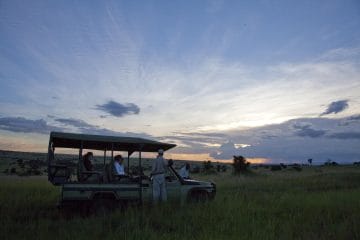
Best of Africa Safari
Botswana Okavango Delta South Africa Johannesburg Kenya Nairobi
From $ 19690 /USD
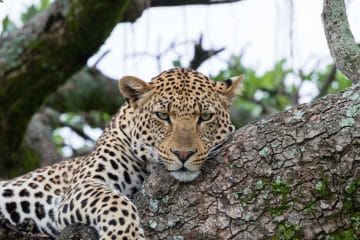
Governors Camp Collection Safari
East Africa Kenya Lake Naivasha Lake Nakuru National Park Laikipia, Lewa and Ol Pejeta Conservancy Maasai Mara
From $ 11800 /USD
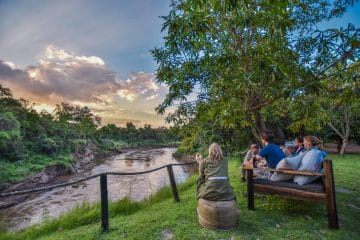
Amboseli Masai Mara and Victoria Falls Adventure
East Africa Kenya Maasai Mara Zimbabwe Victoria Falls
From $ 7100 /USD
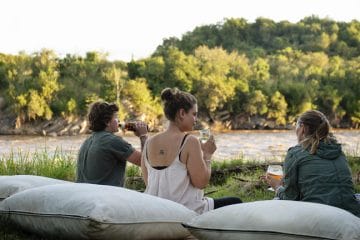
Unplugged Safari in the Mara
East Africa Kenya Maasai Mara
From $ 7880 /USD

Affordable Masai Mara Safari
From $ 3050 /USD
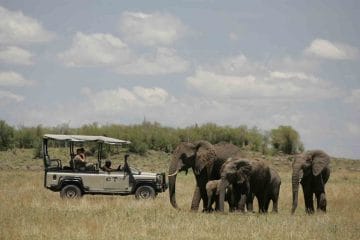
Samburu, Rhinos and Mara Safari
East Africa Kenya Samburu Buffalo Springs
From $ 5880 /USD
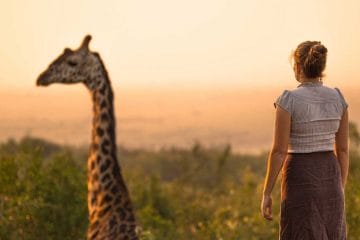
21 Kenya Safaris to choose from
Stay for 4 - 17 days
Experience our Tailor-made Tours in Kenya
Our recommended tours in kenya.
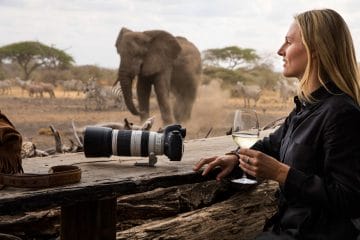
Enchanted Kenyan Safari
East Africa Kenya Chyulu Hills Maasai Mara
From $ 8900 /USD
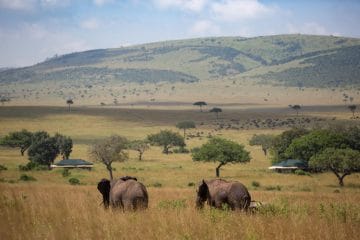
Highlights of Kenya Luxury Fly-In Safari
East Africa Kenya Nairobi Chyulu Hills Maasai Mara
From $ 10068 /USD
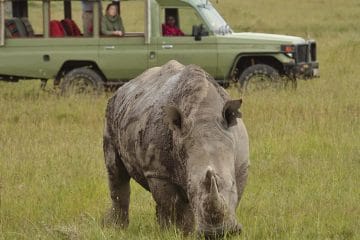
- Family Safari in Kenya
East Africa Kenya Laikipia, Lewa and Ol Pejeta Conservancy Maasai Mara
From $ 15300 /USD
Why travel with us?
Recent reviews from travellers who planned and booked their africa trips with discover africa safaris, an easy, transparent and responsive booking service.
4 Day Kruger Safari Review
Chris, United States 12 Jul 2023
Memorable trip.
Kenya and Tanzania Safari Review
Robbyne, United States 26 Oct 2022
Fabulous experience.
Kruger Park Safari and Golf Journey Review
Michelle, United Kingdom 04 Oct 2022
Very professional..
Zambezi River Safari Review
The Jackson’s, United States 17 Jun 2022
Very efficient service to get us on safari in a wonderful reserve..
Eastern Cape Safari Review
David, United Kingdom 16 Mar 2018
Excellent company and staff..
A Safari in Africa Review
Terry Knott, United Kingdom 20 Jan 2017
Ready to plan your tailor-made safari.

Andre Van Kets, Co-founder, Discover Africa
Free safari planning advice from destination experts
- Kenya in January
- Kenya in February
- Kenya in March
- Kenya in April
- Kenya in May
- Kenya in June
- Kenya in July
- Kenya in August
- Kenya in September
- Kenya in October
- Kenya in December
- Amboseli National Park
- Laikipia Plateau
- Masai Mara National Reserve
- Mombasa and Surrounds
- Mount Kenya and Aberdares
- Northwest Safari Circuit
- Rift Valley Lakes
- Samburu Springs and Mount Meru National Park
- Southern Safari Circuit in Kenya
- The Coastal Belt
- Tsavo East and West
- Watamu and Malinda
- Camel safaris
- Walking safaris – short walks, 2 – 3 hours
- A Relaxed Safari Holiday in Kenya
- Adventure Holidays in Kenya
- An Active Holiday in Kenya
- Beach and Bush Safari Holidays in Kenya
- Big Five Safari Holidays in Kenya
- Birding Safari Holidays in Kenya
- Foodie Holidays in Kenya
- Kenya Honeymoon Safari
- Kenya Photographic Safari
- Malaria Free Holidays in Kenya
- Walking Safari Holidays in Kenya
- Couple Holiday in Kenya
- Solo Travelling Through Kenya
- Affordable Safari Holiday in Kenya
- Budget Safari Holiday in Kenya
- Luxury Safari Kenya
- Changing Money in Kenya
- Cultural Practices of Kenya
- Getting Around in Kenya
- Health Care in Kenya
- Highlights of Kenya
- Is Kenya Safe?
- Kenya Food and Tipping
- Kenya Visa Requirements and Fees
- Kenya vs South Africa
- Kenya vs Uganda
- Languages in Kenya
- Lodges in Kenya: The Do’s and Don’ts
- Medical Emergencies in Kenya
- Medical Insurance in Kenya
- Medical Requirements for Kenya
- Packing List for a Kenya Holiday
- Shopping in Kenya
- Travelling to Kenya
- Welcome to Kenya
- What Vaccinations do I Need for Kenya?
- Wildlife in Kenya
- Kenya Safari
Registered Members of these Organizations
USEFUL LINKS
- Safari Tours
- Accommodation
- Why Book with us?
- Content Collaborations
- Safari Cost Estimator Tool
- Wildebeest Migration
- Privacy Policy
- Website Terms of Use
POPULAR COUNTRIES
- View All Countries
POPULAR DESTINATIONS
- View All Destinations
- Cape Town Holidays
- Kruger National Park
- Etosha National Park
- Chobe National Park
TRAVEL BLOGS
- The Best of Kenyan Cuisine: 10 Dishes to Savour on your next Safari
- Norse Atlantic Adds New Direct Flight to Cape Town
- Travel News Digest, 19 April: SA Airports Celebrated, Rhino Poaching Concerns, Cape Town ‘Big Six’ Appeal
- FastJet Adds Surcharge to Vic Falls Route
- A Seasonal Guide to Honeymoon Safaris in Africa
DISCOVER AFRICA SAFARIS
2nd floor, Tygervalley Chambers One, 27 Willie van Schoor Avenue, Bellville, Cape Town , 7530
- Central African Republic
- Democratic Republic Of Congo
- Indian Ocean
- Republic Of Congo
- South Africa
- Latin America
- Galapagos Islands
- North America
- Polar regions
- Arctic Canada
- Australasia
- Gorilla Tracking
- Grizzly Bears
- Polar Bears
- Puma Tracking
- Snow Leopards
- Blue Whales
- Bengal Tigers
- Siberian Tigers
- African Lions
- Spirit Bears
- Lowland Gorillas
- Experiences
- Jungle Holidays
- Bush and Beach Combinations
- Conservation Travel
- Natural World Heroes
- Work with Us
- Consumer Protection Overview
- Privacy Policy
- Press and Awards
- Client Reviews
- Expedition Leaders
- Specialist Leaders
- Expeditions for Change
- Journey to Natures Edge
- Country: Settings: Country:
- Currency: Currency:
- Call Us 01273 691642
- Destinations
- Gorilla Trekking
- EXPERIENCES
- Journey to Nature's Edge
When to visit Kenya
The best time to visit Kenya is between June and October. Due to Kenya’s equatorial setting, the country enjoys year-round warm weather and relatively low annual rainfall. However, with a range of altitudes and the country’s two rainy seasons, it is possible you will experience some variation depending on when and where you visit. The temperatures vary greatly from Nairobi to Laikipia, and from Nakuru to the coastal regions.
Kenya's best time to see wildlife coincides with the dry months of June through October. During this time, there are fantastic possibilities to see the Great Migration, when millions of wildebeests and zebras travel over the savannah, in national parks like the Maasai Mara and Amboseli. The combination of this show with the open skies and lush surroundings creates an outstanding safari experience. Additionally, viewing the Big Five and a variety of other African species in their natural habitats is perfect during the dry season.

Talk to a Kenya Destination Specialist
The best time to visit kenya.
January is generally a warm and dry month in Kenya, with hot temperatures and low humidity. The weather is ideal for outdoor activities and wildlife viewing, making it a popular time to visit the country. The average temperature in Kenya during January is around 25°C (77°F), with average highs of 29°C (84°F) and lows of 21°C (70°F). In terms of rainfall, most parts of Kenya experience little to no rain in January, making it a great time to visit for those who want to enjoy the outdoors without being hampered by wet weather. However, some areas along the coast may experience occasional brief showers. January is a great time to go on safari in Kenya, as wildlife is abundant and easily visible in the dry, open plains. It's also a great time to visit Kenya's beaches and coastal areas, as the weather is sunny and warm, and the sea is calm. It's important to note that January is peak tourist season in Kenya, so prices for accommodations and tours may be higher, and popular destinations can be crowded. It's advisable to book in advance to secure preferred accommodations and activities.
June to October in Kenya
This long dry season coincides with the Great Migration of wildebeest and zebra, a great time to visit Kenya.
November to May in Kenya
Known as the low season, this period of rain brings about beautiful green scenery, ideal for wildlife photography. This can be one of our favourite times due to the quieter parks, the green back drop and plentiful game.
Experience Kenyan Culture
There are many cultural events throughout the year that ignite the whole country. Visitors are welcome to join in with festivities but should always observe religious and private gatherings from a respectful distance, unless otherwise invited of course! Of particular note, are the Mombasa Carnival in November and the Ramadan celebrations of May/June.
Experience the Great Migration
The exact timing of this renowned natural event can never be guaranteed, as it is ultimately up to the whims of the wildebeest, but it goes without saying that this is one of the best times to visit Kenya if you are wanting impactful wildlife events! The animals' movements can be estimated to a fair degree of accuracy, however: they can arrive in the Masai Mara as early as July, but as a general rule they can be found in abundance between August and September, beginning their journey back to the Serengeti around October. This is a spectacular event where you can witness river crossings and predator-prey interactions.
Safaris & Planning

Short Big Cats & Game Safari
Enjoy a tailor-made safari to Kenya taking in the big cats and game of the Masai Mara and the private Olare Motorgori Conservancy. After catching a flight to the Masai Mara Reserve, you will be able to spot game en route during your transfer to Naibor Camp. Due to the stunning location of the camp there may even be a number of resident game wandering through the grounds as you arrive.

Luxury Kenya Safari
Take in the best of Kenya in ultimate luxury. Starting in Nairobi where you can stay in one of the most exclusive properties in town, before heading out to the Chyulu hills located between Kenyas Tsavo and Amboseli parks, take part in some unique safari experiences such as on horseback or by mountain bike and spot elephants and big cats.

Masai Mara Kenya Safari
A memorable safari, exploring the Masai Mara and Ol Pejeta Conservancy before relaxing on the Kenyan coast, surrounded by the beautiful Indian Ocean. Spend some quality time with your family within idyllic private camps.
Kenya climate guide
Additional kenya information, visit a national park.
Kenya boasts a remarkable array of national parks and reserves, each with its own unique ecosystem and wildlife population. These protected national parks are at the heart of Kenya's incredible commitment to wildlife conservation and offer some of the most spectacular and well-known safari experiences in Africa.
National parks include:
- The Maasai Mara National Reserve
- Amboseli National Park
- Tsavo National Park
- Samburu National Reserve
- Lake Nakuru National Park
- Aberdare National Park
- Meru National Park
- Mount Kenya National Park
- Nairobi National Park
- Hell's Gate National Park
Discover more on where to go in Kenya in our detailed guide.
Take a Hot Air Balloon Safari
A hot air balloon safari in Kenya offers a truly unique way to experience Kenya's wildlife and landscapes. It can provide an opportunity to see African wilderness from a new perspective, high above the savannah, and offers a serene and magical experience. Trips are typically offered in several Kenyan wildlife reserves and parks, with the Maasai Mara National Reserve being one of the most popular due to its abundant wildlife and stunning vistas. Flights typically occur as the sun because to rise over the African plains where the stillness of the early morning make for a breathtaking and peaceful experience. Witness animals in their natural habitat without disturbing them with opportunities to spot elephants, giraffe, antelopes and even big cats like lions and cheetahs.
Explore the Great Rift Valley
The Great Rift Valley is a journey through one of the most geologically significant and visually stunning regions on Earth. The massive geological trench, often referred to as the "Cradle of Mankind", stretches from the Middle East down through East Africa. Your visit to the Great Rift Valley could include wildlife viewing, hiking and trekking, exploring the many lakes and cultural encounters with the various ethnic communities.
What to expect from a trip to Kenya

- Celebrities
- Relationships & Dating
- Culture & Religion
- Facts & Life Hacks

November is one of the months with the highest observances and holidays in the world.
Actually, almost every day of this month has a holiday, celebration, or awareness in different countries across the globe.
It is also the month with Veteran’s Day, Thanksgiving, and Black Friday. Surely, it is a month close to many hearts.
Today, we look at another reason as to why November is a great month: the perfect time to take a vacation to the best safari destination in the world, Kenya.
Let’s start with the weather factor.
What’s The Weather Like In Kenya In November?
Kenya experiences an average temperature ranging from highs of 27°C to lows of 14°C. However, these numbers vary from month to month.
The month of November falls under one of Kenya’s rainy seasons, commonly referred to as ‘Vuli,’ which is characterized by short rains.
The table below is a detailed summary of each of the weather elements.
Why Visit Kenya in November
November is the best time to visit Kenya before all the holiday craziness starts.
Soon all the beaches and parks will be filled with students and families, making November the perfect time to end your year in style. You’ll have an opportunity to enjoy a peaceful and quiet vacation.
Though close to the end of the year, this month only has a handful of tourists coming in. This is because with Thanksgiving coming up, people opt to stay back home and celebrate the holiday with their families and loved ones.
This also means that the last week of November is quite busy and crowded in countries that uphold this tradition.
And since Thanksgiving is not celebrated in Kenya, taking a vacation is the best getaway from all the chaos in terms of traffic and crowds.
There are also two events that take place in Kenya in November to look forward to, ones that I will discuss later in this article.
What of the weather?
The short rains in November in Kenya really are not a cause for concern. It rains a few days of the month and lasts for a short while.
November is relatively warm, so the clouds clear up and the sun dries the water pretty fast.
The mornings are usually bright and sunny, providing the perfect time to juice up on some vitamin D.
In most cases, we only experience the rains anywhere from late in the afternoon to late nights.
And since the sky is mostly clear, it’s quite easy to know when it’s going to rain in advance.
What to Do and Places to Visit
Kenya is one country where you can never run short of things to do.
The wet season might hinder you from enjoying nature walks, hiking, and game viewing, but you can still enjoy visiting our national reserves and conservancies.
The best park to visit is the Maasai Mara National Reserve to catch the end of the wildebeest migration as they cross the River Mara.
You can also extend your visit and enjoy a game safari and catch a glimpse of a less busy park full of green vegetation.
The coastal region is another great place to be in November.
If you visit early enough, you can participate in Kenya’s grandest and most colorful event, the Mombasa Carnival .
Late in the month, you can also partake in the Lamu Cultural Festival. Both of these events are packed with physical activities that you can engage in, from dancing to donkey races.
Being close to the beach also has the advantage of enjoying marine life.
For divers, this month offers the prime opportunity to encounter various shark species, including the majestic whale shark, swift shortfin mako, and awe-inspiring blue whale, alongside playful dolphins and graceful turtles.
Major Events in November
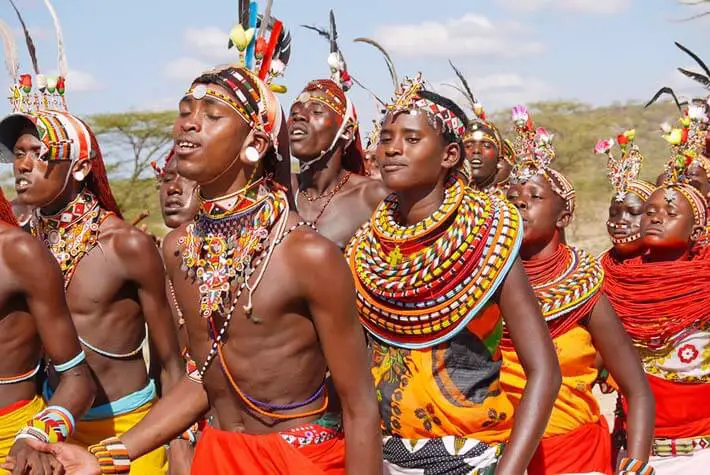
Notable November Festivals and Events in Kenya include:
I. Mombasa Carnival Festival
This is the largest celebrated festival in Kenya, held annually at the beginning of the month of November.
It is the only carnival in the world that is celebrated at the end of the year.
This is an action-packed event that engages people from all over the world.
Visit Kenya in November to enjoy the most colorful celebration and learn a bit about our history.
Learn more here: Mombasa Carnival: Ultimate Guide to Kenya Coast’s Largest Party
II. Lamu Cultural Festival
This annual festival takes place in Lamu in the last week of November, sometimes crossing over to a day or two in December.
The people of Lamu together with Kenyans at large join in celebrating the Swahili heritage and share in the Swahili cultural richness.
A variety of activities and games are prepared to make the festival an unforgettable experience.
III. Wildebeest Migration
This is yet another event that takes place in late October to early November at the Maasai Mara National Reserve.
Over 1.5 million wildebeests are seen crossing the Mara River on their way back to the Serengeti National Park.
This cycle happens several times a year and is often regarded as one of the wonders of the world.
It is the greatest migration in the world that you wouldn’t want to miss.
This is the biggest holiday for Indians in Kenya. The dates vary from year to year, but it mostly plays between October to mid-November.
Indians in Kenya celebrate this holiday by setting up streets and malls with their culinary skills.
Even non-Indians participate in this festival by enjoying Indian food tasting sessions.
What to Pack & Wear
Though November is a warm month, I would suggest you come prepared for a few rainy days. Have some fleece jackets, a small umbrella and maybe a light hooded rain coat just in case.
But overall you can pack light, depending on the activities you intend to participate in.
Carry some sundresses, shorts, and light tops or blouses.
For men, t-shirts, shorts, and light pants will do. Don’t worry, you’ll have the raincoat or umbrella as a backup in case it rains.
Again, November is warm. So be sure to carry a hat, a sombrero/cap, and sunglasses. Don’t forget to pack some sunscreen since the UV index can be a bit high at times.
If you are afraid of the violent UV rays like me, you can carry long-sleeved shirts or blouses and pants to wear when it gets too hot. Make sure they are light though.
If you will be spending some time in the water, be it at the beach or swimming pool, carry your bikini set and swimming costumes.
You can choose what type of footwear to pack, but to be safe, carry at least one pair that can serve you in the rain or mud.
Crowds: How Busy Is November in Kenya
November is a relatively busy month in Kenya, considering that it is close to the end of the year.
Places where the above-mentioned events are held tend to be extremely crowded during the occasions, especially in Mombasa and Lamu.
Once the festivals end, everything goes back to normal and the streets are much quieter.
In other parts, however, people are mostly preoccupied with their day-to-day routines, preparing to take their breaks in December.
November has no shortage of tourists on average. Some prefer to enjoy their vacations right before the peak season that starts in December.
Still, hotels and resorts only start to crowd up towards the end of the month, but you can still enjoy your vacation peacefully without any crowd inconveniences.
Final Verdict: Is November Good To Visit Kenya?
Even though the month falls in one of Kenya’s wet seasons, it is still a great month to visit Kenya.
You can participate in the most joyous festivals of our country, and maybe stand a chance to see the great wildebeest migration.
The month also lies in the low seasons of Kenyan tourism, so you can enjoy great deals at almost everything, from flights to accommodation, and park visits to game safaris.
Top 10 Best Restaurants in Village Market, Nairobi (Joints for the Foodies)
Weather in kenya in may +travel tips, weather in kenya in june + travel tips (by a local), most popular, 8 famous people with astigmatism, malcom x’s role in the formation of the de mau mau, top 12 models with bad side profiles, 11 most famous people who are living with bicuspid aortic valve, recent comments, editor picks, popular posts, popular category.
- Celebrities 112
- Culture & Religion 99
- Relationships & Dating 67
- Facts & Life Hacks 50

- ~ mins read
Kenya bids farewell to the dry winter season in November. As the country transitions into summer, sporadic rainfall is common during this time of year. But holidaymakers can take heart, for rain showers usually occur in the afternoon or evening, which means that morning safaris and tours are rarely affected. Plus, the country is brimming with adventures of all kinds this month.
Visiting Kenya in November is also a good idea for those travelers who wish to avoid large tourist crowds. The month falls in the shoulder season, so there are fewer visitors to the country. Besides relatively crowd-free attractions, travelers can also find good deals on flights and accommodations during this month. Take this opportunity to spot the Big Five during an African safari experience in Maasai Mara National Reserve , or swim among the marine life in the Indian Ocean.
- Mark Bromley
Kenya Weather in November

Kenya is an equatorial country and sports only two seasons: wet and dry. November marks the start of the wet season. So expect overcast skies and torrential thundershowers, particularly during afternoons and evenings. It is best to head towards the coastal areas of the country for relatively drier and warmer conditions. Temperature-wise, Nairobi, the country’s capital, scores a daily high of 25ºC and a low of 14ºC. In Mombasa, on the Kenyan coast, day temperatures could hit 30ºC. The water temperature in the Indian Ocean off the country’s coast hovers at around 27°C during this month.
For a seasonal overview, check out our travel guide on the best time to visit Kenya .
Weather in Kenya in November - Rainfall and Temperatures
Why visit kenya in november.

As November falls in the shoulder season of the tourism calendar, this is the perfect month for budget travelers to explore Kenya . Below are some of the perks visitors can enjoy in Kenya in November.
- Better rates: Low tourist footfall means the travel and accommodation rates fall down during this time of year. Enjoy a luxury holiday at an affordable rate during your stay in the country in November.
- Fewer crowds: Experience the rare pleasure of relatively crowd-free safaris and sightseeing tours while you are in Kenya in November and take in the country’s top wilderness destinations at your own pace.
- Diving season: With lower waves and optimal visibility, November is a great month to see marine life in the Indian Ocean. This is the best chance to spot whale sharks and manta rays.
- Enjoy safari and bird-watching: Rains not only make the vegetation lush but also settle the ambient dust, improving visibility and your chance of spotting wildlife during safaris. Besides being one of the best times for safari tours, November is also perfect for bird-watching.
- Mombasa Carnival: Visit Mombasa to dance to the traditional tunes of Africa and revel in the colorful parade that takes place during the carnival.
Where to go and what to do

Kenya tops the list when it comes to wildlife safaris. Pick any national park or wildlife reserve in the country and you are sure to be stunned by the sheer variety of animals. Enjoy a crowd-free game drive in Maasai Mara and spot a variety of creatures like giraffes, elephants, and big cats. Go for a guided bush walk or book a hot air balloon safari over the Masai Mara plains. You can also head to Amboseli to see elephants and other wild animals grazing in the grasslands with Mount Kilimanjaro looming in the background.
Make sure that you add Lake Nakuru to your itinerary if you wish to see pink flamingos. For maritime fun, Watamu Marine Reserve and Kisite are great destinations. Here you can spot whale sharks, humpback whales, manta rays, and many other exotic marine life.
What to Bring

Pack judiciously before catching your flight and you should be sorted. If your itinerary includes destinations in higher altitudes and early morning game drives, you will need warm clothes. Rainproof gear will come in handy if you encounter sudden showers. If you are visiting coastal areas, a light, airy garment and a rain jacket will suffice. Make sure that you also carry mosquito repellent and sunscreen with you.
The weather in Kenya in November is extremely tricky. But with proper planning, you can have a memorable holiday experience. This is the time when the country is less crowded, so take this opportunity to get to know its highlights more intimately. Travel and hotel rates are also relatively cheaper during this time of year, allowing you to pack more tours and holiday activities in your itinerary.
Not sure how many days to spend in Kenya? Plan a customized trip to Kenya with the support of our local travel specialists for an itinerary that best suits your requirements. For more information, check out our tours to Kenya in November .
Related Articles
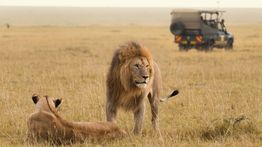
Best Time to Visit Kenya
Kenya is a popular East African destination k... read more
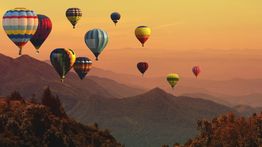
Kenya in January: Weather, Tips and More
In January, Kenya offers excellent conditions... read more
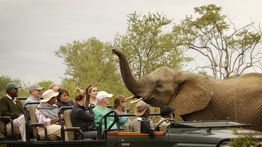
Kenya in February: High Season Travel Guide
If you are traveling to Kenya in February, br... read more

Kenya in March: All You Need to Know
Monsoon gradually settles across Kenya in Mar... read more
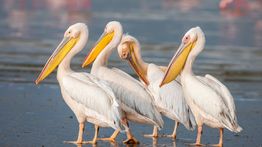
Kenya in April: Wet Season Travel Tips
April lies in the middle of the wet season in... read more
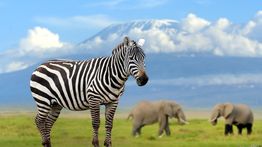
Kenya in May: Low Season Travel Tips
May is a quiet month in Kenya. The tourist se... read more
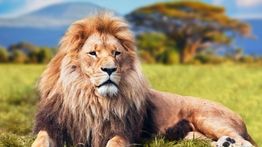
Kenya in July: Safari Underneath Clear Weather
July is part of the dry season in Kenya and o... read more
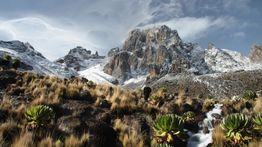
Kenya in August: Cool Weather Travel Tips
Vast, open savannah teeming with wildlife, re... read more
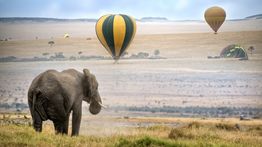
Kenya in September: Mild Weather and Clear Skies
Mild weather and clear skies await you on you... read more
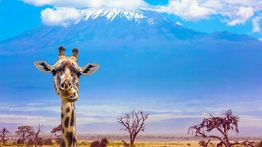
Kenya in October: Transitional Period Travel Tips
Kenya in October is a month of seasonal chang... read more
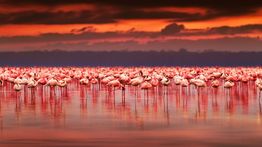
Kenya in December: Weather, Tips & Festivals
From pleasant river valleys and exotic mounta... read more
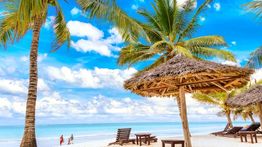
Summer in Kenya: Weather and Top Destinations
Kenya in summer promises a complete holiday e... read more
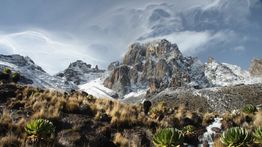
Winter in Kenya: Weather and Must-Visit Destinations
Iconic savannah wildlife, stunning views of M... read more
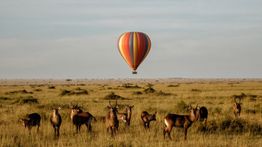
Kenya in June: Weather, Tips and More
June marks the transition from rainy to dry s... read more
Related Categories
- How Long To Stay In Kenya
- Kenya Travel Advice
- Kenya Wildlife
- What To Do In Kenya
- When To Visit Kenya
- Previous Post

Popular Destinations
- Europe Tours
- Everest Base Camp Trek
- Italy Tours
- Spain Tours
- Argentina Tours
- Canada Tours
- Sri Lanka Tours
- Chile Tours
- Antarctica Tours


- South Korea
- Indonesia (Bali)
- Central Asia
- African Safari
- South Africa
- Itinerary Ideas
The Best Times(Worst Time) to Visit Kenya 2024/2025 for Safari /Beach
Kenya will abolish visa requirements for global visitors starting in January 2024, guaranteeing a smooth and expedited entry process.
The best times to visit Kenya for a safari are from July to September or January to February during the country's dry seasons, however, these are also the most crowded travel times.
The best time for you to visit Kenya largely depends on what you want to see and your personal preferences. Read our article to find out the best times to visit Kenya based on different factors
Kenya Weather and Climate in Brief
Kenya is located on the equator and temperatures there are similar all year round , but it does have different climate zones: mild/warm in the highlands, warm/hot on the coast, and hot/scorching in the northern desert. There are major two seasons in the country: the rainy season and the dry season.
- Dry season : January to February, July to September
- Rainy seasons : October to December (short rainy season), March to May (long rainy season)
- Wettest month : April
- Hottest month : March, 21°C (70°F)
The Best Time to Visit Maasai Mara for the Great Migration
The best time to see the wildebeest migration in Maasai Mara is from July to September . During this period, you would see enormous herds of wildebeest and zebra in Maasai Mara. If you want to see the animals cross the Mara River, the best times are July and August.
This is also the dry season and, apart from the spectacle of the migration, you would have the best chance to see much more wildlife than usual as they gather around the water holes.
This is also the summer vacation season, so it is a great opportunity to see this impressive occasion with your family.
- Weather : sunny and dry
- Temperature : min: 10°C (50°F), max: 25°C (77°F)
- Travel conditions : high travel season, most crowded, most expensive; good lodges and camps are hard to book.
The Best Times to Visit Kenya for Wildlife and Safari
The best times to go to Kenya for a safari are from June to October and January to February. These are the dry seasons. The weather is comfortable with sunny days and cool evenings. Animals are easy to spot as they gather around the water holes. As a bonus, there are fewer mosquitoes.
The period from January to February is relatively quieter compared to the migration period from July to September. Moreover, it is the optimal time to witness the presence of baby wildlife. Fortunately, in Maasai Mara and Amboseli National Reserves, you can encounter adorable baby elephants, lion cubs, baby zebra, and more.
- Temperature : June to October: 10–25°C (50–77°F), January to February: 9–28°C (48–82°F)
- Travel conditions : It's the high travel season, which is crowded and expensive. Lodges and camps are in huge demand.
However, the best time for weather does not always mean the best experience. The smart arrangement and flexible schedule even matter more . Contact us to tailor a tour that offers the best possible experience by carefully arranging and maintaining a flexible schedule.
The Best Time to Visit Mombasa for Beach in Kenya
The best time to go to Kenya's pristine coastline for a beach vacation is from October to early March due to the comfortable weather conditions. If you prefer water activities, such as diving and snorkeling, the best time for you to visit Kenya's beaches is in November. Kenya boasts some of the best beaches, including Diani Beach in Mombasa and Lamu Island.
- Weather : Kenya's coast is humid all year round and rain could occur at any time, but it is pleasantly warm/hot.
- Temperature : 24–30°C (75–86°F)
- Travel conditions : high travel month
The Cheapest Times to Visit Kenya
The cheapest times to visit Kenya are during its rainy seasons . The short rainy season is from November to December and the long rainy season is from late March to May. March to May is definitely the cheapest time for a safari . But your travel experience may not be as good as hoped as the rain may interrupt your visit.
- Weather : wet, cloudy
- Animals : Animals are not easy to see as they tend to scatter around the park, but they may be very active.
- Travel conditions : It's the low travel season, with cheaper prices and fewer crowds. Good discounts for lodges are easy to get.
The Worst Months to Visit Kenya
The worst time to go to Kenya for a safari and beach vacation is from late March to May, which is the long rainy season in Kenya. Kenya's beaches around the Indian Ocean coastline are very hot and wet with tropical storms.
- Weather : Very wet — there are usually frequent storms and showers during this period
- Road conditions : The paths in the parks could turn pretty muddy and some roads may not be accessible because of the floods.
- Animals : You might also see fewer animals as they tend to spread out when it's wet rather than gathering around water holes.
- Travel conditions : Some camps may close because of the bad road conditions. It is the cheapest time of the year to travel.
Benefits of Traveling during the Worst Months
However, the worst period is not too bad to travel, as the rain doesn't usually last all day and it often happens in the mornings or evenings. The sun also usually comes out quickly after a shower. There are some benefits to visiting Kenya aside from the weather.
- Cheap prices : You could enjoy very reasonable prices. Safari lodges even offer discounted rates that are 30–50% lower than usual.
- Very quiet : There are fewer travelers and you don't have to wait your turn to see the animals.
- Animals are active : Some animals, such as lions, leopards, cheetahs, and hippos, are more active.
Don't let the weather stop your Kenya travel plans. If these months are your only opportunity, seize the chance ! A flexible itinerary and being accompanied by an experienced guide could truly elevate your experience. Let's customize a private trip exclusively for you .
The Rainy Seasons in Kenya
There are two rainy seasons in Kenya: the short rainy season from late October to December and the long rainy season from mid-March to May. The long rainy season sees a higher amount of rainfall than the short rainy season.
The short rainy season : This period has lower rainfall than the long rainy season and lasts from mid-March to May. You could expect brief but intense showers, usually in the afternoons or evenings. The sky is often overcast and temperatures are relatively cool. Due to the lower amount of rainfall, this season does not see much flooding, which the main rainy season does.
The long rainy season : This is the wettest period in Kenya. There are many heavy showers or downpours, which mainly occur in the evenings or at night. They usually last for about half an hour to an hour. The rain may cause floods and roads inside the wild animal reserves may become inaccessible.
Weather and Climate in Kenya
The temperature in Kenya is quite similar all year round . It has two types of seasons: rainy and dry seasons. It is dry with almost no rain in the dry seasons while the wet seasons are very humid.
The dry seasons typically occur from January to March and from July to October. During these periods, there is almost no rain. The weather is sunny, clear, and dry. The temperature is very comfortable. For example, Nairobi has average temperatures ranging between 20°C (68°F) and 28°C (82°F) during the day but is cooler at night at about 10°C (50°F) to 15°C (59°F).
The dry season is the best time for a safari trip in terms of the weather. It is also the busiest time to travel there.
Month-by-Month Guidance for Traveling in Kenya
Visiting kenya in january.
It is one of the high travel months in Kenya. It is the dry season. It is a great time to see wildlife in Maasai Mara and to get stunning views of Mount Kilimanjaro in Amboseli National Park. The land is green after the short rainy season and the animals are very active. You can also have the chance to see newborn animal babies.
The weather is very comfortable. In Nairobi, it stays around 24°C (75°F) going down to 13°C (55°F) sometimes. Over at Maasai Mara, the temperature swings between 12°C and 30°C (54°F and 86°F) on average. And if you decide to visit the coastal towns and resorts around Mombasa, expect it to be warmer at about 32°C (90°F) in the afternoon.
It is a great time to go on a safari and go hiking, diving, and snorkeling. However, it becomes crowded during this month, especially around New Year when prices and visitor numbers are highest.
Visiting Kenya in February
February is one of the best seasons for safari trips. It is the dry season. The tracks inside the park are dry, making it easy to drive along. Animals in Samburu National Reserve and Maasai Mara are very active. You will spot elephants, zebras, and giraffes in the park in large numbers.
The weather is very comfortable and similar to that in January. February is also the best month for bird-watching.
Visiting Kenya in March
The rainy season arrives in this month. Animal-view this month is a bit challenging, but you can still do it. The rains may make the tracks through the park full of mud, making them inaccessible. It is challenging for game viewing as animals may be dispersed from water sources and the thick vegetation may make it harder to spot them. However, your skillful driver would know where to find them.
It is the low travel season. There are fewer travelers in the national parks and on wildlife safaris. You may have the chance to get a better view of the animals if you're well-guided. You can travel at a very competitive price. Hotels offer great discounts and airfares are much cheaper.
Visiting Kenya in April
April is the wettest month in Kenya. If April is the only time you can visit Kenya, don't hesitate. Just go for it! And if you are after a bargain trip, April could be a top pick. You can get a great discount on lodges this month and the airlines may also offer great discounts.
In April, you may expect storms and showers but the rain doesn't usually stick around for too long. It often comes in the evening or as a quick shower, so it probably won't mess up your safari plans for the next day.
Animals are not easy to spot but our experienced drivers and guides still know where to find them. And you will see many hippo calves in Maasai Mara this month.
Be aware that some camps may close this month and the coast is wet and hot.
Visiting Kenya in May
Most travel guides suggest that you don't go during this month because of the rainy season. However, it is not actually that bad.
It is true that it's the rainy season, but the rains often come in the late afternoon or at night and don't last long. Sometimes there are short showers.
The rain brings inconvenience to a game drive, but you can still do one with an experienced driver. The roads through the park may be muddy and certain routes may be blocked, but our drivers can often take a detour.
Visiting Amboseli National Park in May can be an amazing experience — you'll see cloudy skies and huge herds of elephants enjoying the lush green vegetation in the swamps. If you're heading to Maasai Mara, just make sure to pick a camp or lodge that stays open in all weather conditions. Some camps close during the wet season because some roads can get too tricky to travel on.

Visiting Kenya in June
June is a good time to travel with children as you do not need to worry about the heat from the sun and the humidity . The large numbers of travelers are yet to arrive so you will have a bit of time to see the sights with fewer travelers in the park.
The rainy season ends this month, although there are occasional showers. June marks the beginning of the high travel season. The weather is comfortable, being warm by day and cool at night in the highlands/savanna. Although dry, it may be cloudy on most days.
June is not a good time for a beach vacation and underwater activities as it is hot and wet on the coast.
Visiting Kenya in July
From July to September, Maasai Mara and other parts of Kenya have the most traveler numbers. The Great Migration of Wildebeest in Maasai Mara attracts large numbers of travelers from all over the world.
July is one of the best times to travel, both for a safari tour and a beach vacation in Kenya. The weather is dry with almost no rain (except for on Mount Kenya and in Hell's Gate). Animals are easier to spot as the vegetation is less dense. The weather is sunny on the coast, so it is a good season for underwater activities.
If you're worried about travel costs, July might not be the best fit for you. Accommodation can get pricier — sometimes even double compared to the low travel season. And finding a place to stay could be a challenge due to high demand. But, on the upside, the experiences you'll have in Kenya are surely worth it.
Visiting Kenya in August
The Great Migration of Wildebeest in Maasai Mara is in full swing this month. You will have the chance to witness countless wildebeest and zebras crossing the Mara River. The weather is warm in the day and dry. This is the best month to go weather-wise.
August is also the best month to watch humpback whales off the coast of Kenya, breaching the surface of the water and displaying their might.
But be warned of the high travel season. It is the most crowded month of the year. You might see rows of vehicles lining up by the river banks, all there to witness the awe-inspiring river crossings of wildebeest. But the incredible views are absolutely worth it.
Be aware that the exact timing of the animal river crossings can't be predicted. But don't worry! Choosing a skillful travel guide and driver can definitely boost your chances of catching this unforgettable sight.
Visiting Kenya in September
September is a good time for an exciting safari trip without many crowds. You may see the last wave of wildebeests cross the Mara River. As the vegetation has dried out, animals tend to cluster around the water holes in the parks. So, it is easy to see them and also a good photo opportunity as there is no grass or other vegetation blocking your view.
Although it is still the high season, there are fewer travelers than in August. The chance to see humpback whales off the coast is also high this month.
Visiting Kenya in October
The early part of October can still be an excellent time for game viewing: it's the dry season without many travelers. The weather changes from the dry season to the wet season during this month. Rain usually arrives late in the month. You may still have the chance to see the migration out of Maasai Mara, depending on the weather.
Visiting Kenya in November
November is the shoulder season in Kenya. It is the short rainy season, which means that you may have short periods of rain or occasional showers during this period. The grassland is beautiful with lots of greenery and the sky is clear. If you are not worried about the haze and pollen in the air, this is a good time to go.
The animals may not be in large herds and are more dispersed across the parks, but tourist numbers are moderate.
Visiting Kenya in December
The rain in December should not affect your safari too much as it often falls in the afternoon and rarely lasts long. This is the shoulder travel season so you may enjoy a very reasonable travel price (but not as good as the low season from March to May). There are not as many travelers so you may find some beautiful quiet areas, where you can enjoy watching a cheetah or a herd of elephants all to yourself.
Although it gets busier in the latter part of the month, as the Christmas holidays come along, it is still much quieter than in the high travel season from July to October.
It's also a fantastic time of year to take a wildlife safari into any of the many national parks. In Samburu National Reserve, for example, you'll see zebras, giraffes, elephants, cheetahs, and all manner of African animals. Amboseli National Park has stunning views of Mount Kilimanjaro and December is one of the best times to visit because the lack of haze affords better views of the giant mountain.
Visit Kenya with Us
A safari trip to Kenya can be a memorable adventure. But without proper planning, it might not go as you hope. You wouldn't want to travel all the way there and not spot any animals or have to deal with unwanted large crowds, would you? So, let's turn this around. We will tailor-made a thrilling safari trip to ensure that you'll have a fantastic time in Kenya.
Why Global Highlights (10,000+ reviews & 98.8% 5-star rating)
- Save Your Time:
- Less research, more enjoyment!
- Real-time 1V1 expert planning
- Maximize Your Flexibility:
- Personal local guide and ride
- Explore at your own pace
- Celebrate Your Journeys:
- Specially-crafted family adventures
- Celebrate milestones with style!
Get Inspired with Some Popular Itineraries
More travel ideas and inspiration, sign up to our newsletter.
Be the first to receive exciting updates, exclusive promotions, and valuable travel tips from our team of experts.
Why Global Highlights
Where can we take you today.
- Southeast Asia
- Japan, South Korea
- India, Nepal, Bhutan, and Sri lanka
- Travel Agents
- Loyalty Program
- Privacy Policy
Address: Building 6, Chuangyi Business Park, 70 Qilidian Road, Guilin, Guangxi, 541004, China
Kenya From Within
Showcasing Kenya to the World
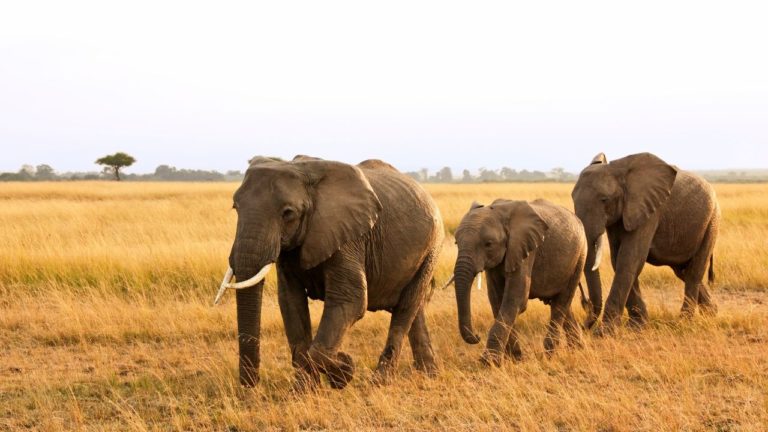
Kenya Safari Destinations – 10 Must Visit National Parks and Reserves
Kenya , known as the jewel of East Africa, is a country blessed with diverse landscapes and abundant wildlife, making it a premier destination for safari enthusiasts. From vast savannahs to lush forests, Kenya offers a captivating array of safari experiences.
Kenya Safari Destinations
1. maasai mara national reserve, 2. amboseli national park, 3. samburu national reserve, 4. tsavo east and west national parks, 5. lake nakuru national park, 6. aberdare national park, 7. mount kenya national park, 8. hell’s gate national park, 9. meru national park, 10. chyulu hills national park.
In this article, we’ll explore 10 must-visit safari destinations that showcase the rich biodiversity and natural beauty of this African gem.
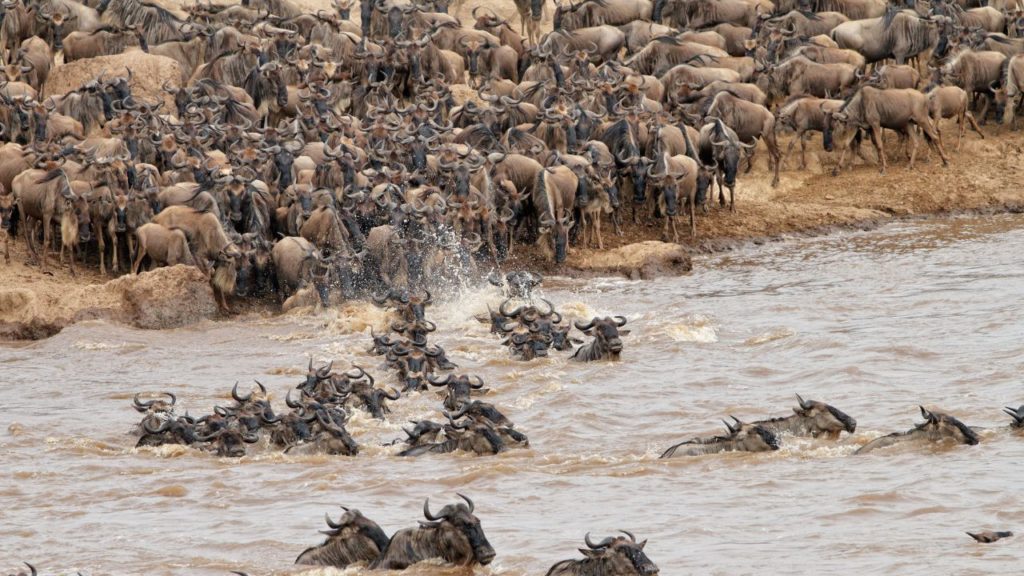
The Maasai Mara is perhaps the most iconic safari destination in Kenya, renowned for its breathtaking annual wildebeest migration. This vast expanse of savannah is home to the Big Five (lion, elephant, buffalo, leopard, and rhinoceros) and offers exceptional opportunities for game viewing. The Mara River, cutting through the reserve, is a spectacle of drama during the Wildebeest migration season .
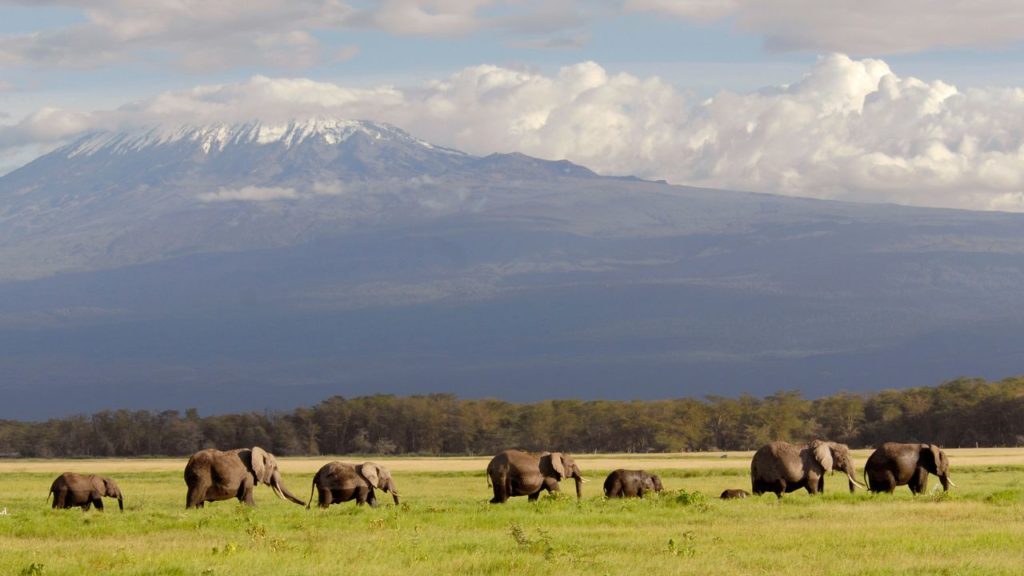
Located at the foot of Mount Kilimanjaro, Amboseli National Park provides a unique safari experience with the stunning backdrop of Africa’s highest peak. Famous for its large elephant herds, the park offers fantastic views of wildlife against the backdrop of Kilimanjaro. The swamps and lakes within the park attract a variety of bird species, adding to the overall charm.
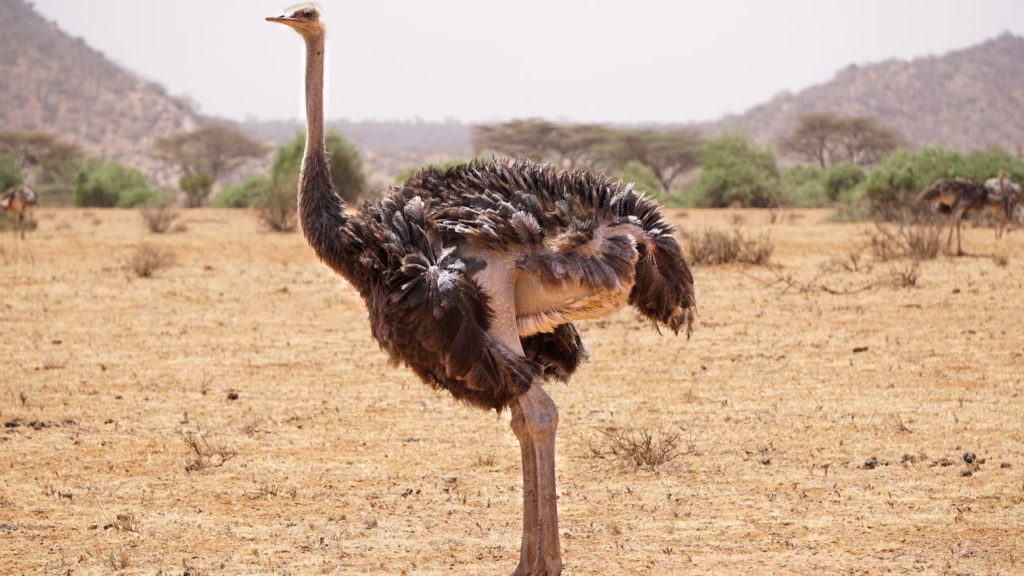
For a taste of Kenya’s northern frontier, Samburu National Reserve is a must-visit. This arid landscape is home to unique wildlife such as the Grevy’s zebra, Somali ostrich, and the reticulated giraffe. The Ewaso Ng’iro River flowing through the reserve sustains diverse flora and fauna, creating a striking contrast to the surrounding aridity.

Known for their sheer size, Tsavo East and West National Parks collectively form one of the largest wildlife conservation areas in the world. Tsavo East is characterized by vast plains and the iconic Yatta Plateau, while Tsavo West boasts diverse landscapes including volcanic craters and Mzima Springs, a freshwater oasis that attracts a variety of animals.
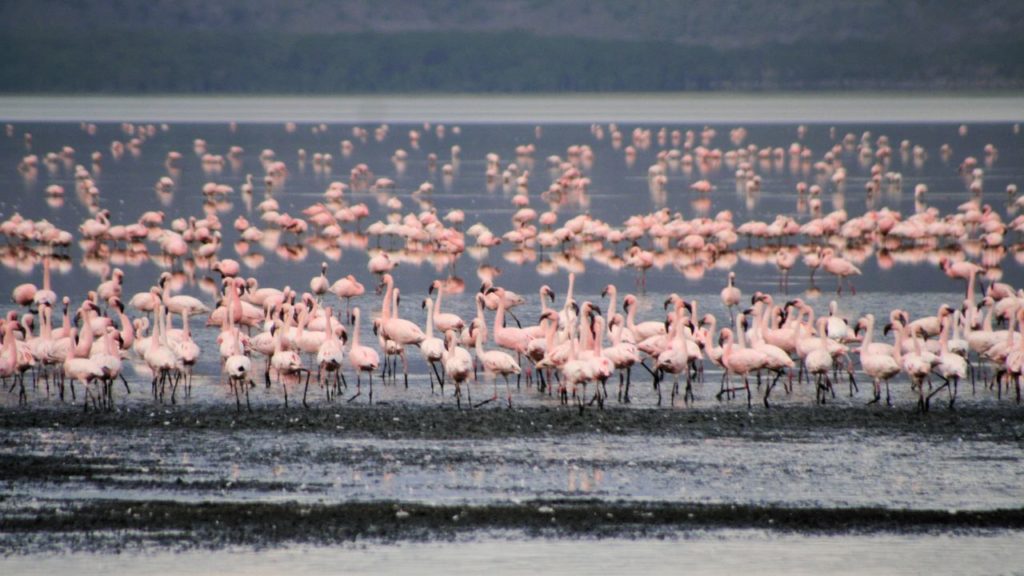
This compact yet remarkable park is famous for the vast flocks of flamingos that transform the shores of Lake Nakuru into a sea of pink. Beyond flamingos, the park is a haven for rhinos, both black and white, as well as lions, leopards, and a myriad of bird species. The picturesque landscapes surrounding the lake provide a serene setting for safari adventures.
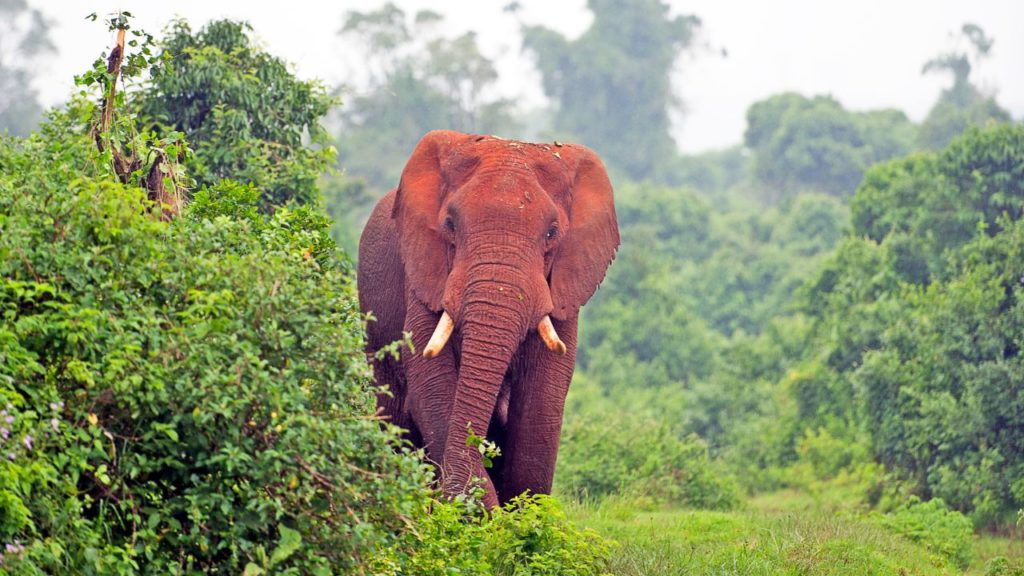
For a safari experience in the highlands, Aberdare National Park offers lush forests, waterfalls, and diverse wildlife. The park is renowned for its tree lodges, providing a unique opportunity to observe animals at close range from elevated vantage points. Elephants, buffaloes, and various primates are among the inhabitants of this scenic park.
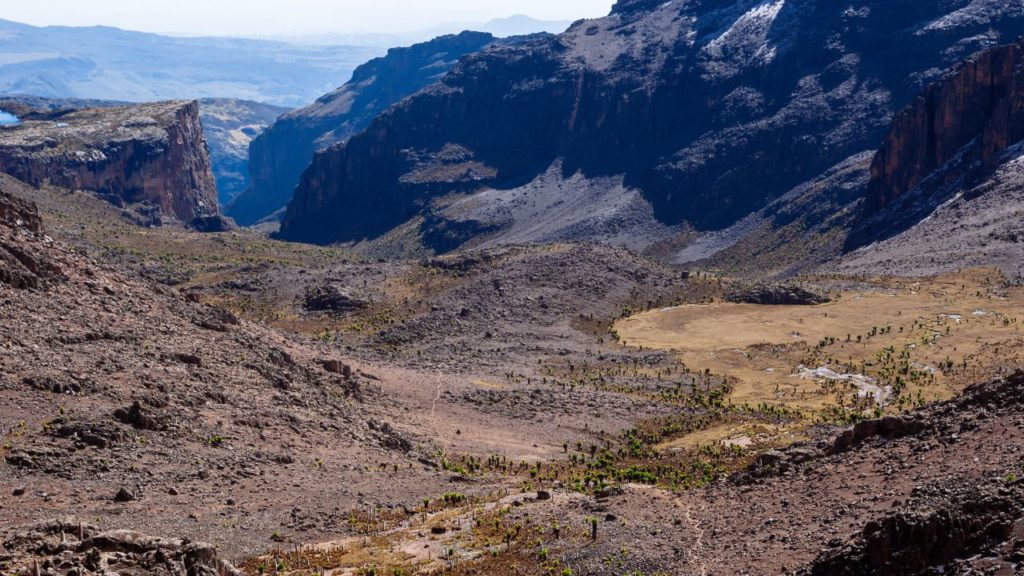
A UNESCO World Heritage Site, Mount Kenya National Park is centered around Africa’s second-highest peak. The park is a haven for hikers and climbers, but it also offers an opportunity for a unique safari experience in the foothills. The lower slopes are home to a variety of wildlife, including elephants, buffaloes, and the elusive bongo antelope.
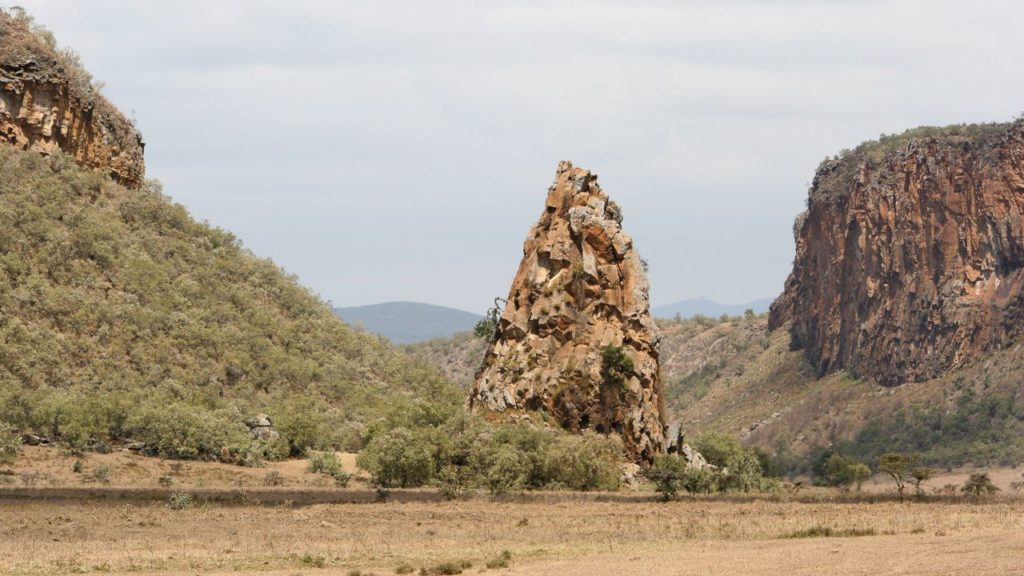
For a change of scenery, Hell’s Gate National Park is a geothermal wonderland featuring hot springs, geysers, and towering cliffs. This unique park allows visitors to hike and cycle amidst the wildlife, including zebras, giraffes, and baboons. The dramatic landscapes served as the inspiration for Disney’s “The Lion King.”
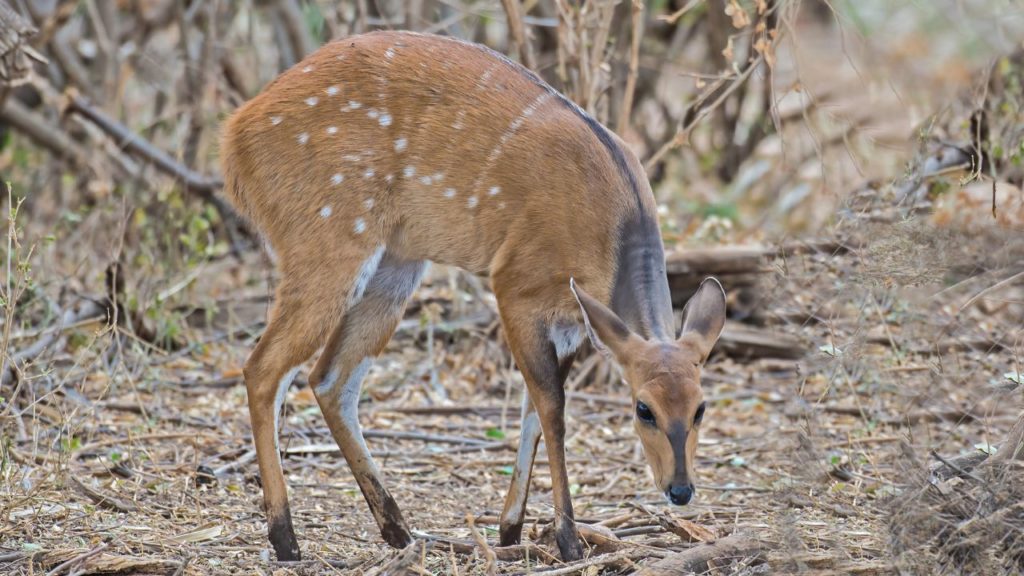
Immortalized in Joy Adamson’s “Born Free,” Meru National Park offers a quieter, off-the-beaten-path safari experience. The park is known for its diverse habitats, including riverine forests, grasslands, and swamps. Visitors can explore the park’s hidden gems, such as the Elsa’s Kopje, named after the famous lioness from “Born Free.”
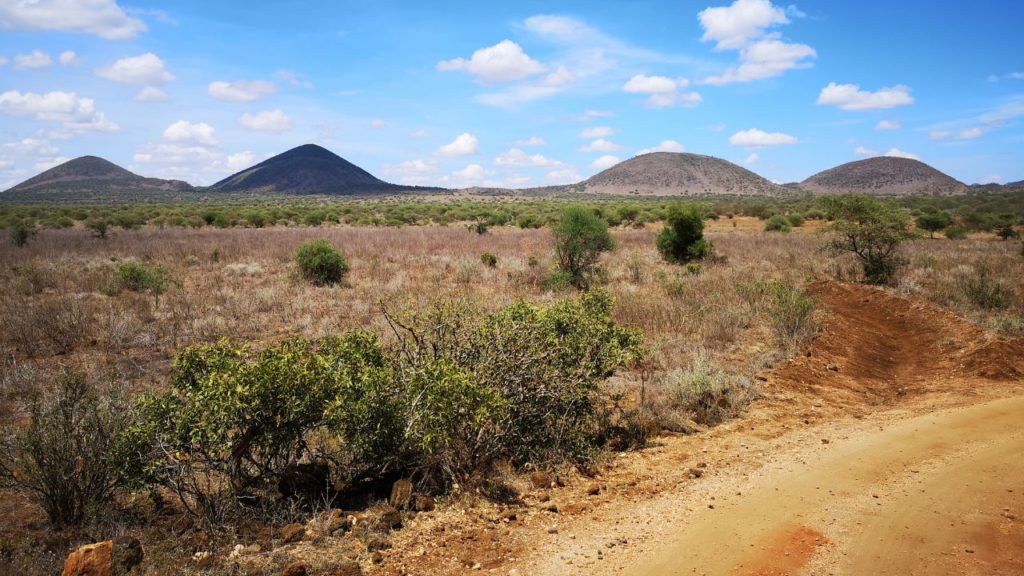
Tucked between Amboseli and Tsavo West, Chyulu Hills National Park is a hidden gem known for its rolling green hills and ancient lava tubes. The park provides a serene setting for walking safaris, offering a chance to spot a variety of wildlife, including elephants, giraffes, and a range of bird species.
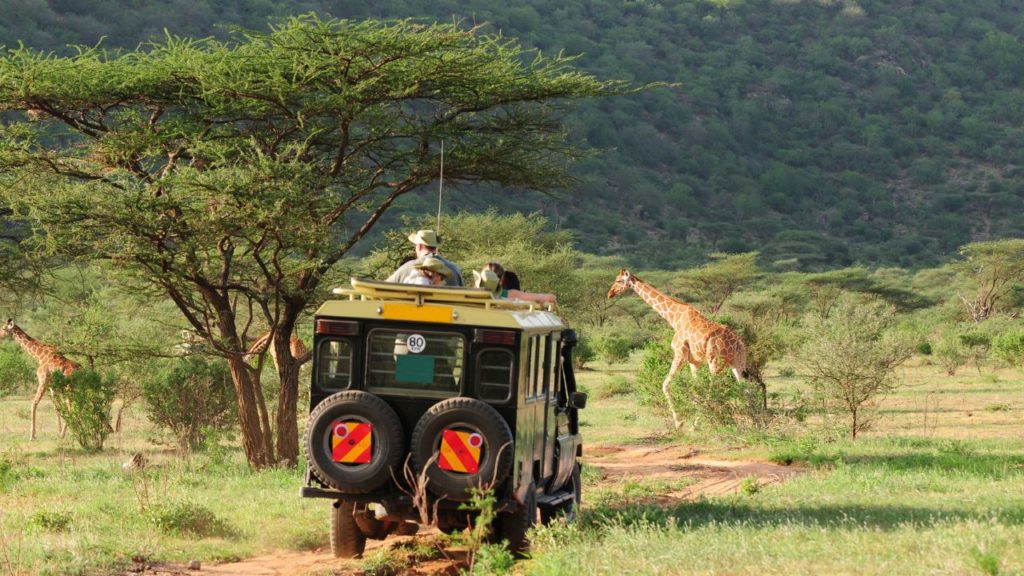
Kenya’s safari destinations offer a tapestry of landscapes and wildlife experiences that make it a dream destination for nature lovers and adventure seekers. Whether witnessing the Great Migration in the Maasai Mara or exploring the geothermal wonders of Hell’s Gate, each destination contributes to Kenya’s reputation as a safari paradise. Go on a journey through these 10 must-visit Safari destinations and immerse yourself in the raw beauty of Kenya’s wilderness.
Related posts:
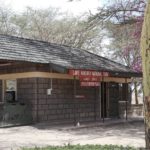
Leave a Comment Cancel reply
Save my name, email, and website in this browser for the next time I comment.
APRIL SALE: Discover and book at up to 60% off!
Kenya Safari Tours and Holiday Packages
Find and book your dream safari in magical Kenya. There are 865 Kenya safari adventures to choose from, that range in length from 1 days up to 21 days. The most popular month for these tours is October.
Best Kenya safari tours based on 1,359 reviews

- Christmas & New Year
7 Days 6 Nights Kenya luxury Safari
I enjoyed the tour The good was good and the guide was sharp
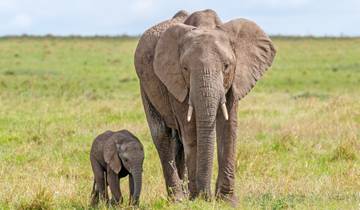
Kenya Wildlife Safari
Phoebe here... My experience together with my guy Jean was awesome.. No words can describe that feeling ..
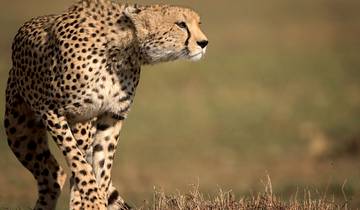
Kenya Camping Safari
It was more than what I expected. Every thing was well organised. The guide/tour leader is a important part of tour and I found the guide/ tour leader of both my trip with g adventure was good.

6 Days Kenya Budget Tours (with FREE NIGHT at Nairobi Hotel)
Our tour guide was excellent..He made every effort to make this a wonderful experience for everyone .. and he succeeded. Breath taking animals .. an amazing experience
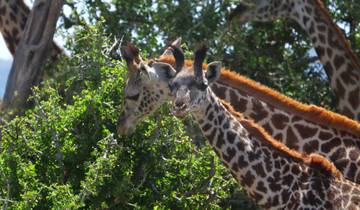
Kenya Family Safari
Your staff did an excellent job. We had a great time and I would recommend this trip for my friends.

Premium Kenya
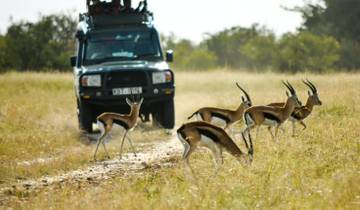
Amboseli & Masai Mara Budget Safari By 4x4 Jeep
We wanted to make ours 3days Masai Mara private tour with limitless wildlife adventures, Bon Voyage kenya safaris, gave us all, inclusive of a sizzling 3-day pocket friendly Masai Mara budget tours for our 6 people group in a lovely 4x4 jeep with private driver guide...Bravo!

Masai Mara Camping Safari
Our guide was great and interacted well with the group. He had lots of animal knowledge and found us some great animals. Our transport was a van but it made it there and back and wasn't too bad for game viewing. Plenty of space for the 6 of us. Accommodation is a basic tent with bed and mossie net but was all we really needed. Meals were good and there was always plenty. While the trip is advertised as 4 days, it's only 3. I would have enjoyed having an extra day to spend in the Mara.
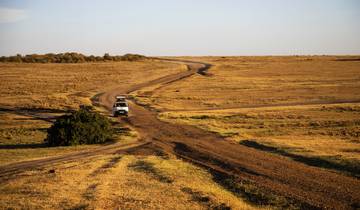
Kenya Safari Experience National Geographic Journeys
It is Tim and I first time at a safari and we had a fantastic experience because Lilian and Vincent the driver from G-adventure was knowledgeable in their work. We very much enjoy it and is looking forward for the next trip. Thanks.

5 Days Masai Mara and Amboseli Wildlife Safari
Our 5 day Kenya Masai Mara safari was fantastic. Everything was very good. Martin our driver guide, extremely hard-working, knowledgeable and helpful. From airport reception to on time performance all very good. Good company I can recommend.

7 Days, 6 Nights Safari To Masai Mara, Lake Nakuru, Lake Naivasha And Amboseli With Complimentary First Night Accommodation at After 40 Hotel and free airport pickup.
We loved the variety of this tour - safari by vehicle, hot air balloon, bike, boat, and foot. The accommodations ranged from basic to good, so this tour is best for those who don’t need luxury accommodations, which we did not. The food was always very good and plentiful. We had 2 guides - Nathan and Tony, and both were excellent. They were friendly, knowledgeable, patient, and good drivers. The optional tours need to be updated on the description of the tour, as inflation has caused an increase in prices. The hot air balloon safari was $450/pp (a wonderful experience with a nice champagne picnic breakfast afterwards). The Massai village visit was $25/pp. We recommend both. Bring lots of cash for drinks, souvenirs, and tipping. We underestimated and ran out, but our guide made a stop at a bank for us to get more. Good communication and customer service from the tour company as well. Overall an incredible vacation. We will be back in Kenya in the future and would definitely use this company again.
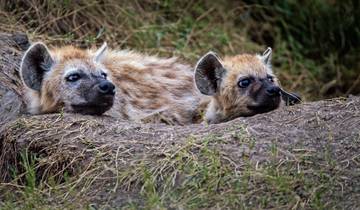
7 Days Taylor -Made Kenya Luxury Safari
This is one of the best tours ever just loved the experience
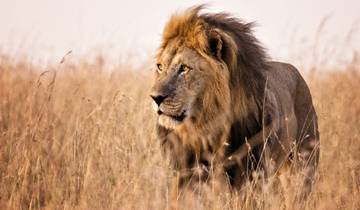
7 Days Kenya mid range Joining Safari
I found john via internet. At first I am a little bit nerveus about orginizing the tour. However, we meet on Kenya, I am glad that we work together. We were very lucky on the Safari. We can saw big 5 on 4 days trip. We can also see sitting graffe. Our hotels, game drives everything was great. Thank you John. I hope we can see each other again.
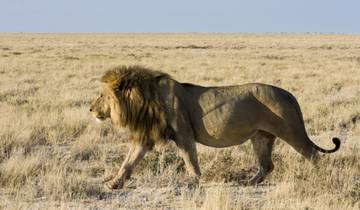
5 Days Kenya medium range safari for Amboseli and Tsavo Parks from Nairobi to Mombasa
I would highly recommend CKC Tours. John responded to all our queries promptly and went back and forth until we had an itinerary we were happy with. We were then met by John at the airport and given all the documentation for our trip which included lodges at Masai Mara and Amboseli and internal flights. It was all very easy and well organised. I also found it to be very competitively priced considering the service we received and the standard of accommodation.
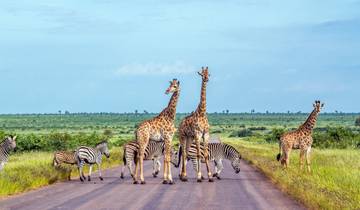
Kenya Private Safari
Kenya safari tour reviews.
Everything was Amazing
My first time camping and I had a blast! David was a fantastic CEO: helpful, patient, informative and good natured. The people, places and animals I’ve seen will stay will me for a long time.
Safari Tours
- Wildlife (267)
- Big Five (107)
- Great Migration (52)
- Flying Safari (13)
National Park
- Masai Mara National Reserve (127)
- Lake Nakuru National Park (81)
- Amboseli National Park (56)
- Amboseli National Park (35)
- Tsavo National Park (31)
- Samburu National Park (11)
- Lake Nakuru National Park (7)
Regions in Kenya
- Masai Mara National Reserve (137)
- Masai Mara (121)
- Lake Nakuru National Park (83)
- Amboseli National Park (57)
- Amboseli National Park (37)
- Mount Kenya (21)
- Central Kenya (16)
- Lake Nakuru National Park (9)
Travel Styles
- 10 Best Safaris in December 2024/2025
- 10 Best Safaris in August 2024/2025
- 10 Best Safaris in January 2024/2025
- 10 Best Safaris in November 2024/2025
- 10 Best Safaris in October 2024/2025
- 10 Best Safaris in September 2024/2025
- 10 Best Safaris in July 2024/2025
- 10 Best Safaris in June 2024/2025
- 10 Best Safaris in May 2024/2025
- 10 Best Safaris in April 2024/2025
- 10 Best Safaris in March 2024/2025
- 10 Best Safaris in February 2024/2025
- 10 Best Luxury African Safari Tours 2024/2025
- Kenya Travel Guide | All You Need to Know
- Best Time to Visit Kenya for a Ultimate Safari Experience
L O A D I N G .
An African Safari in November
Where to Go

Where to Go on an African Safari in November
An African safari in November with Ker & Downey is a rewarding experience with lower rates, fewer crowds, and excellent game viewing.
While high season is high for a reason, low season has merits of its own. For many countries in Africa, November is shoulder season or low season. There are fewer crowds and lower rates, making it a great time to travel.
For parts of southern Africa, it’s the start of green season . Photographers can’t ask for a better time to capture the African landscapes and wildlife in the bush. Green season signals the start of the rains. These refreshing rains breathe life into a dry land, turning the dry plains to a vibrant green. Set against a blue sky after an afternoon shower, the colors pop. In East Africa, the green season usually starts around December and runs through May.
To take advantage of the green season, fewer crowds, and lower rates, we’ve gathered up our top six places for an African safari in November.
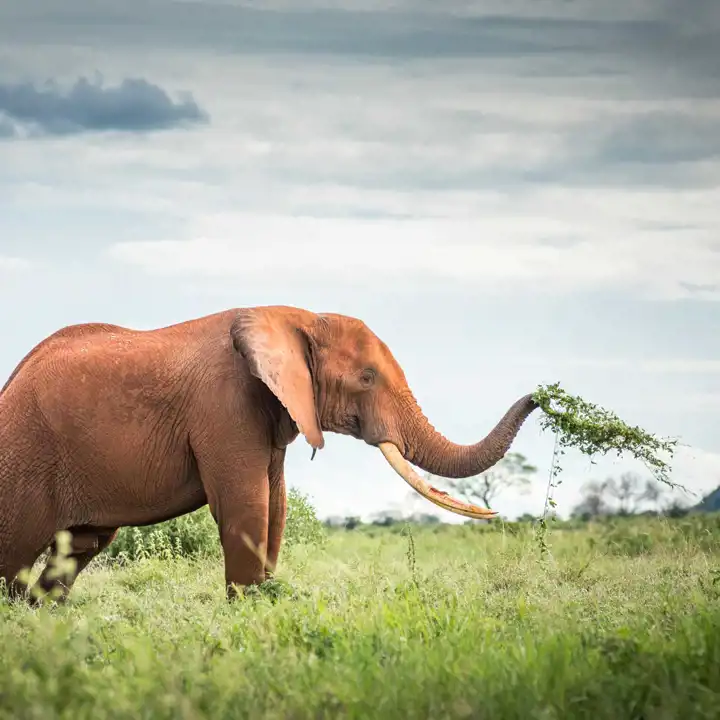
The weather in Kenya is pretty temperate year-round. From October to November, there is a short rainy season resulting in short afternoon showers, but the crowds that were in the Masai Mara in August and September have dispersed. The grass is still relatively short, and the migration is still in the area, so it’s a great time for game viewing. It’s also high season for bird watching with migratory birds in the area until April.
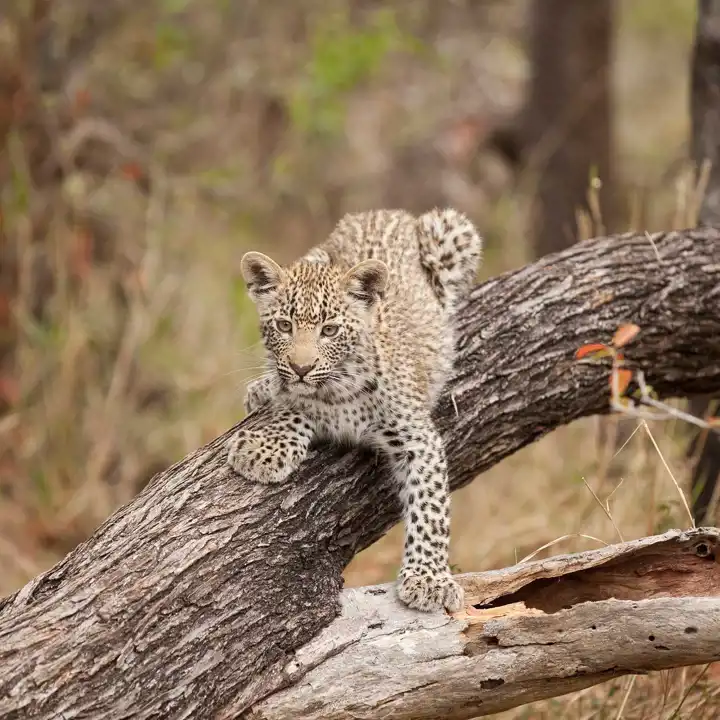
Botswana Safari
November is the start of the summer season in Botswana. You’ll see short, heavy showers during the day, but it isn’t peak rainy season. November is a great time to spot big cats in the early mornings or when the temperatures drop slightly in the evenings. Keep your eyes on the trees too, as leopards tend to lounge in the trees seeking respite from the heat. You’ll get great value for your money in November as rates drop significantly in Botswana in November.
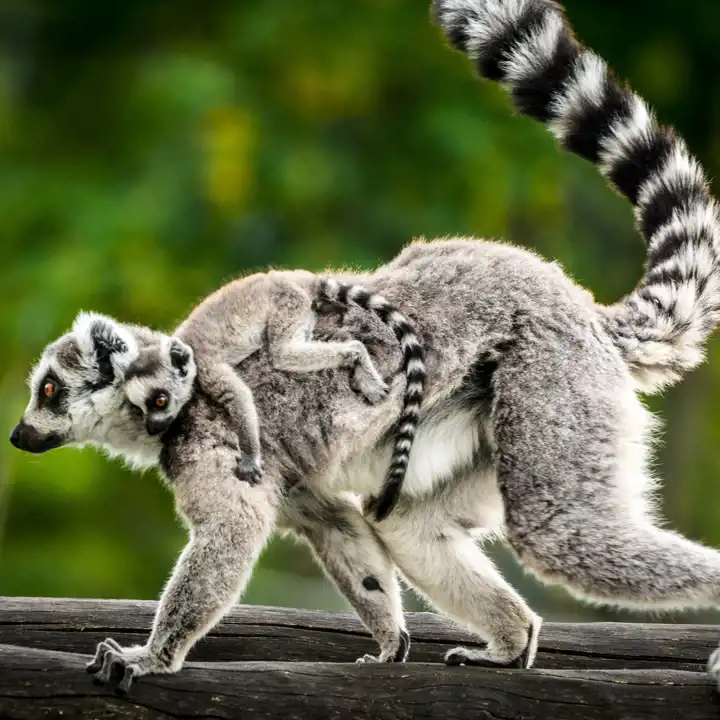
You can travel to Madagascar year-round to see lemurs, but if you want to see baby lemurs (and who doesn’t?), then make plans to head there in November. It’s shoulder season in Madagascar, with warm temperatures and few visitors. Wildlife is active and birds are in their breeding season. You can expect excellent sightings of lemurs, chameleons, frogs, and various birds, as well as endemic plant life on treks through Andasibe National Park. It’s also a great time to visit Tsarabanjina to soak up some sun and snorkel to see the tropical marine life.
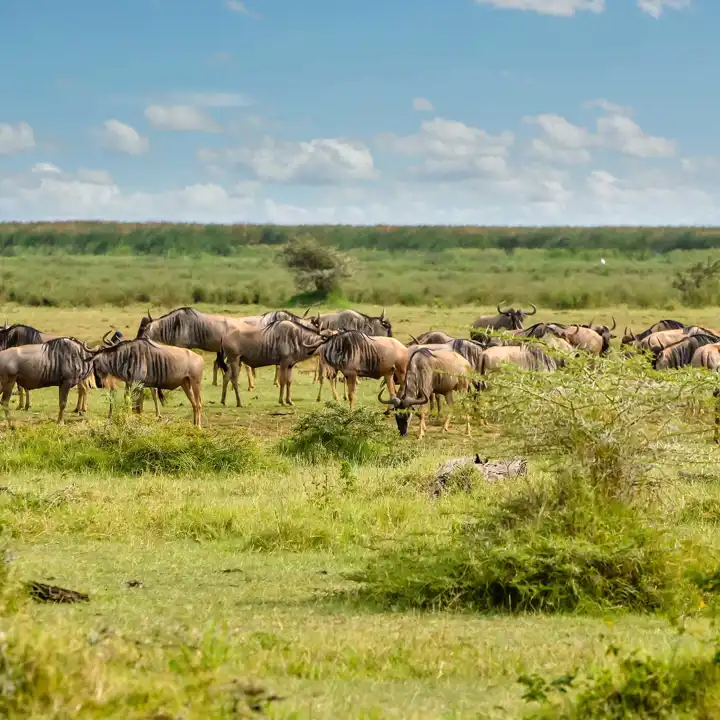
Safari in Tanzania
Storm clouds start rolling into the Serengeti in November, but so do the wildebeest. With the arrival of the wildebeest, you’ll start seeing excellent game viewing in Tanzania as predators have their pick among the plains game. There are significantly fewer safari-goers in November, so you’ll have some of the country’s best game viewing all to yourself. Bird watching is also at its best in November. There are short afternoon showers, but it shouldn’t negatively impact your trip.
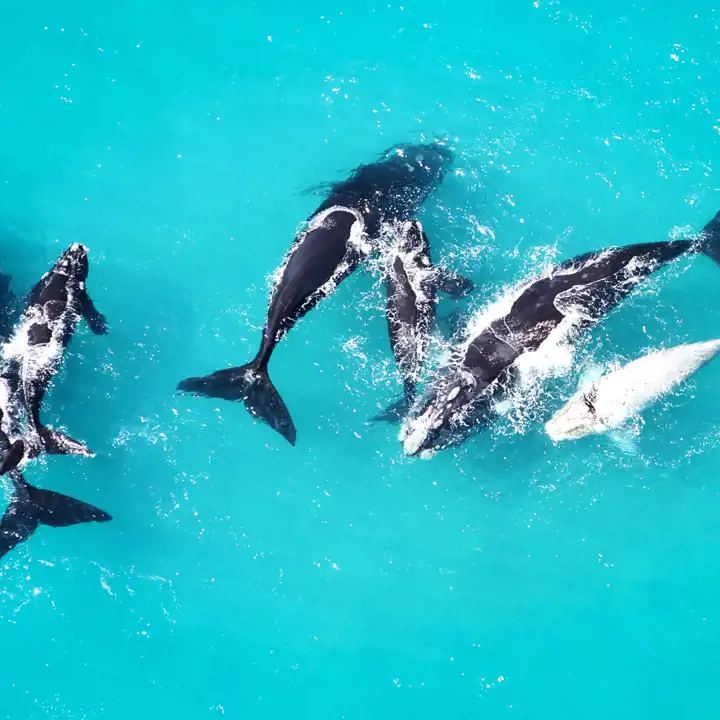
South Africa
The weather in South Africa is nice year-round. The Cape’s popular sights – Table Mountain, Cape Point, and Boulder’s Beach – are less crowded. And if you’re lucky, you can catch a few remaining southern right whales along the coast before they migrate to Antarctica . If you’re a keen birder, it’s a great time to travel to South Africa. In the bush, the safari wildlife will be harder to spot as they’ve left the waterholes with the rains, but if you’re patient, you’ll be rewarded.
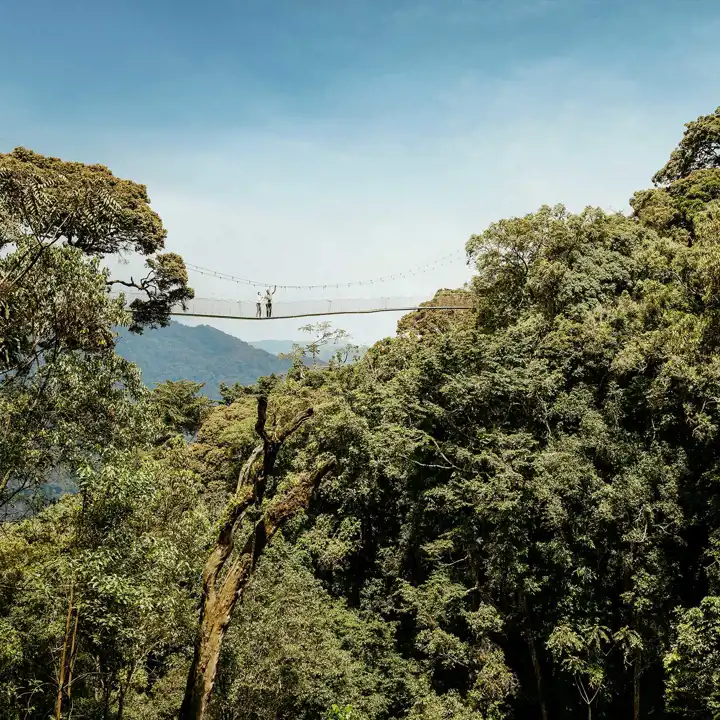
November is considered the rainy season for this East African country. But don’t expect rain all day. The short rains in the morning make way for clear blue skies in the afternoon. While this may make walking trails a bit muddier, with the right gear you’ll be in search of gorillas or chimpanzees in no time. With fewer people traveling to Rwanda at this time of year, permits to see the gorillas in Volcanoes National Park may be more available. While you are here, don’t forget to head south to Nyungwe National Park, home to 13 different species of primate . Expect to see very few people, if any at all, as you head into the park in search of chimpanzee. While you are here, make sure to do a canopy walk, a suspended bridge hanging from the trees, for a chance to see primates from above.
Start Planning Your African Safari in November
For more information about an African safari in November Contact your Luxury Travel Designer. To stay up to date on all our online content, follow us on Facebook and Instagram .
Back to the Blog
- Travel Guides Plan your adventure
- Destinations Our favourite places
- Tours Book a trip
- Travel Companies Independent specialists
- Travel Guides
- Destinations
- Travel Companies
Safari in Kenya
Kenya's best safari reserves and camps.
Stuart Butler
- In this guide
- Samburu, Buffalo Springs & Shaba
Meru National Park
Lake nakuru national park, amboseli national park.
- Nairobi National Park
- Off the beaten track
Kenya besides safari
- Where to go
- Need to know
- Itinerary planning
- Hidden gems
- Conservancies
- How to plan & book
Kenya is the original home of the safari and it’s still one of the finest safari destinations in Africa . I've been going on safari in Kenya for decades, as a travel journalist and guidebook author writing about safari, conservation and life among the Maasai tribes.
The main thing I've learned: there's so much more to Kenya than the mainstream safari industry of luxury camps and the famed “big five” (so named because they were the prize targets of colonial–era hunters).
The country proudly boasts of an impressive network of protected spaces made up of 65 national parks and reserves as well as dozens of private and community conservancies. Together these cover a huge proportion of Kenya’s diverse landscapes and provide a home for animals as large as an elephant and as tiny as an elephant shrew.
Some parks, such as the Masai Mara and Amboseli , are rightly world famous. Other parks, such as Meru National Park or Kakamega Forest Reserve, barely make a blip on the mainstream safari circuit but are every bit as rewarding (and much quieter!) then the big name parks and reserves.
Kenya has a world class safari tourism industry with excellent safari operators catering to all budgets and a diverse portfolio of safari lodges and camps. All you need to decide is when and where to go – and that's where my guide comes in. Dig in and Safari njema! – (Have a nice trip!)
featured kenya safaris
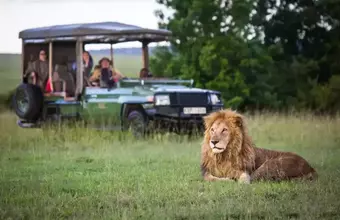
Enchanted Kenyan Safari
Samburu, Rhinos and Mara Safari
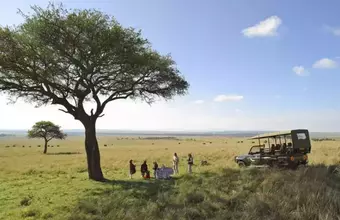
Affordable Masai Mara Safari
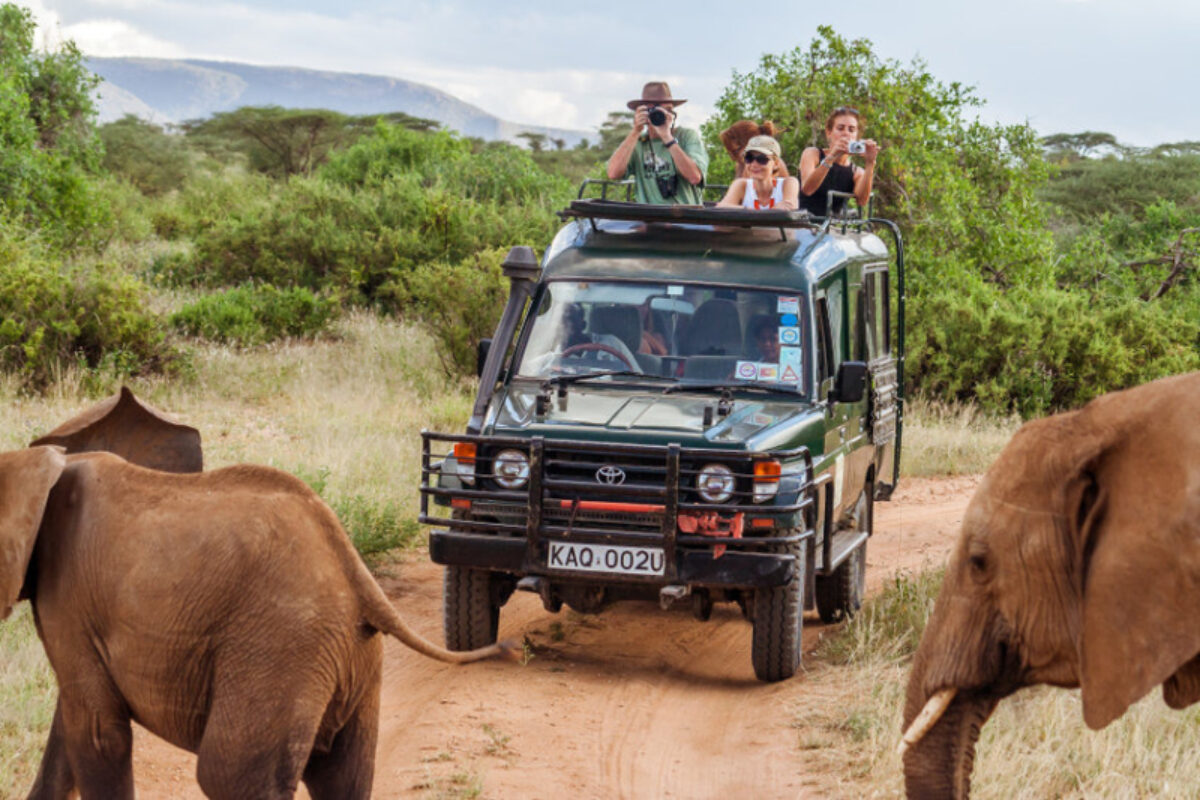
Close encounters with a herd of elephants in Kenya's Masai Mara
The best safaris in Kenya
Kenya’s most popular – and some underrated – safari highlights.
Don't be swayed by the Masai Mara's magnetic pull. There are many hidden gems to be discovered in Kenya: here are a few of my top recommendations.
Masai Mara National Reserve
Mara north conservancy, ol pejeta conservancy, samburu game reserve, tsavo east & west national parks, loita hills, kakamega forest reserve, aberdare national park, lamu island.
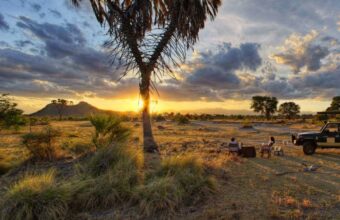
Elsa’s Kopje
This is the best lodge in what is, for me, one of the best safari parks in Kenya. Named after Elsa the lion, of Born Free Fame, the lodge sits on an outcrop with simply incredible views over Meru. Owned by Kenya-based Elewana Collection, it’s undeniably pricey – rooms start at around USD $950 per night and climb steeply from there – but worth a night or two if your budget can stretch that far. If that’s beyond your means I can also recommend Meru Camp and there are cheaper options in the nearby town of Maua.
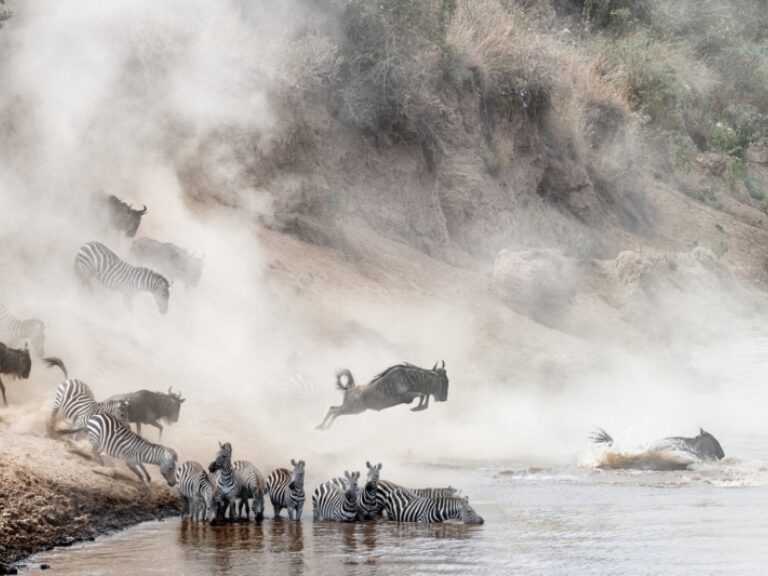
Witness the migration river crossings – but expect crowds!
The wildebeest migration is one of the world’s greatest natural phenomena, and watching the herds dodge hungry crocodiles as they surge across the Mara River is a staple of Kenya safari. The migration moves into the Masai Mara from Tanzania’s Serengeti between June and October. This is by far the busiest time and place of the year, so expect crowds. If you’d rather see the migration untroubled by crowds, I recommend you look at Tanzania instead.
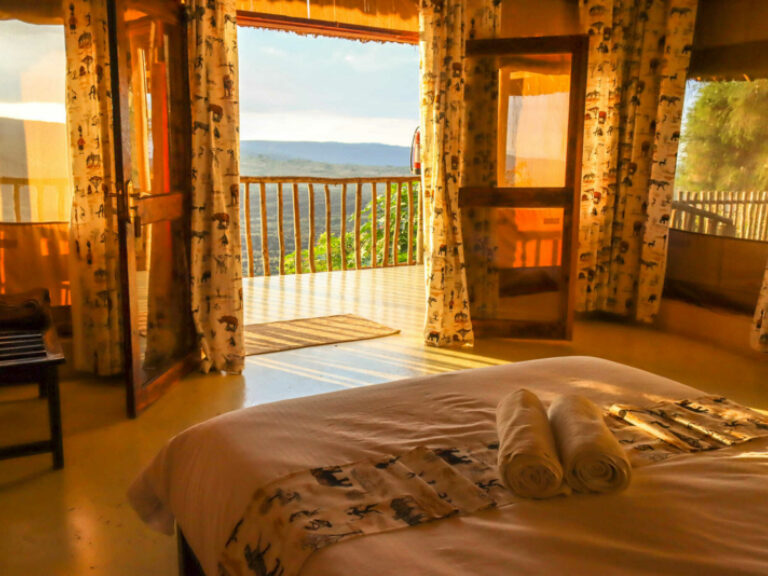
Denise Carnihan
I can highly recommend Maili Saba. It has a picturesque location overlooking the Great Rift Valley and volcano region, with lovely permanent tents each with en-suites and balcony, and all very nicely decorated. There is a communal pool and outside gazebos for relaxing. The main dining room and lounging area is stunning with striking cathedral ceiling and beautiful decor. The food is absolutely outstanding and the staff are warm, friendly and go out of their way to assist their guests. The first time I visited was a complete surprise organised by my Kenyan partner, and I've included it in our tour itineraries ever since.
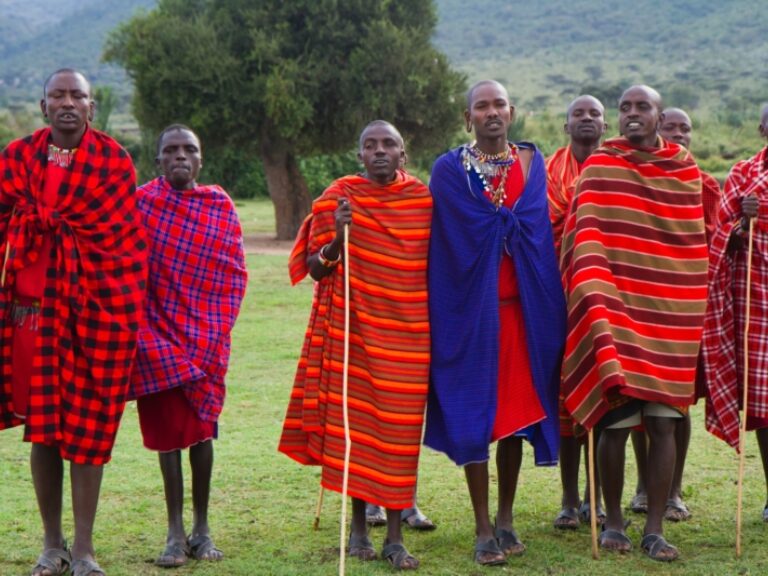
Nashulai Maasai Conservancy
One of the great success stories of Kenya safari has been the emergence of networks of conservancies, usually adjacent to the better known national parks. These are community-run or privately-operated protected areas, run for the benefit of wildlife and local communities. In the Masai Mara, the Nashulai Maasai Conservancy is particularly interesting, as it’s the only one that was 100% established by local Maasai and the only one where the Maasai remain in their homes within the conservancy. I can also highly recommend Mara North, Naboisho, and Ol Dereski; you’ll likely have an amazing time in any of them.
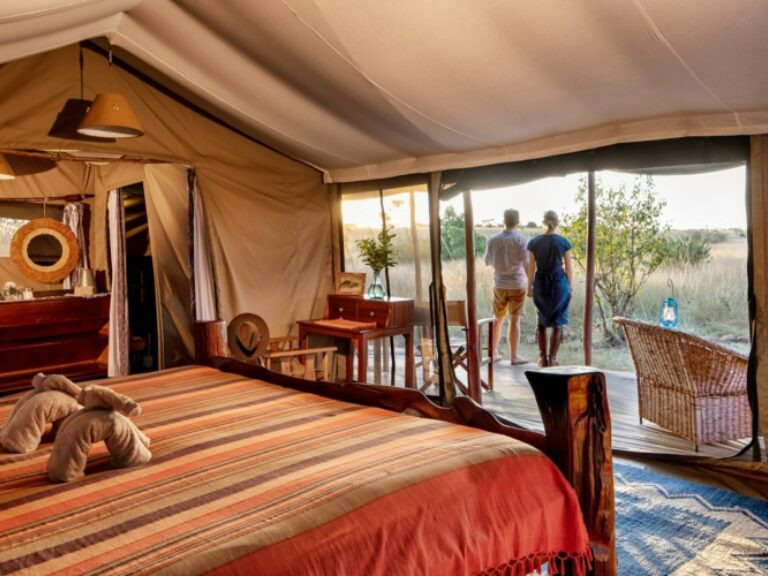
Offbeat Mara
Mara North is perhaps the best known conservancy in the Masai Mara, and Offbeat Mara is one of my favourite camps in the entire place. It's a small, un-showy camp of just seven tents including two family tents. In addition to the standard game drives you can do night drives, guided bush walks, horse riding, hot air balloon flights and even do some Maasai running coaching!
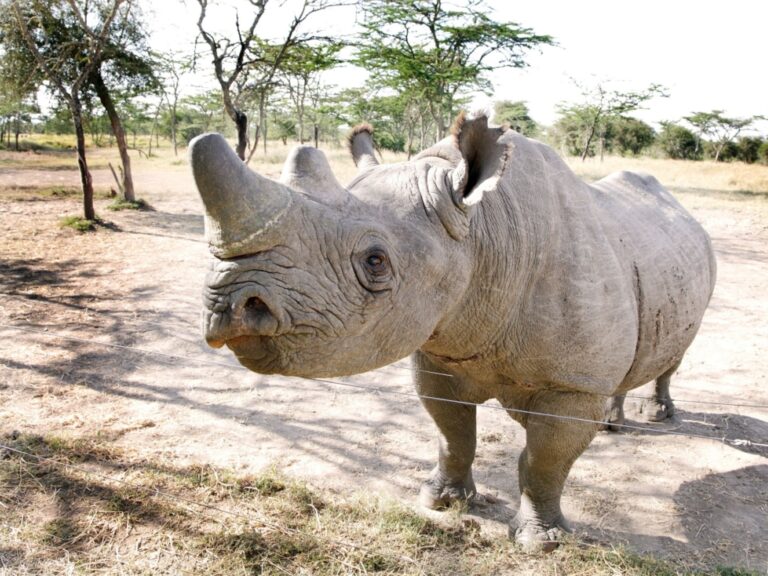
If you’ve ever wondered what the hide of a rhino feels like, wanted to experience a safari at night or dreamed of running (or riding) in the wild, open air of a safari reserve, head to Ol Pejeta Conservancy. The conservancy is in the Laikipia region, at the foothills of Mount Kenya. The sanctuary is the largest in East Africa to host black rhino, as well as the world’s last two remaining white northern rhino. Ol Pejeta is also the only place in Kenya where you can see chimpanzees. Conservation is at its core, with several experiences available for intrepid safari-goers who want to do more than just watch the animals.
Those looking to get their hands dirty can join one of the one or two-week volunteer programmes and learn wildlife research and tracking, veterinary care and more of what goes on behind the scenes. The conservancy has several accommodation options from simple cottages to basic campsites and luxury tented eco-camps.
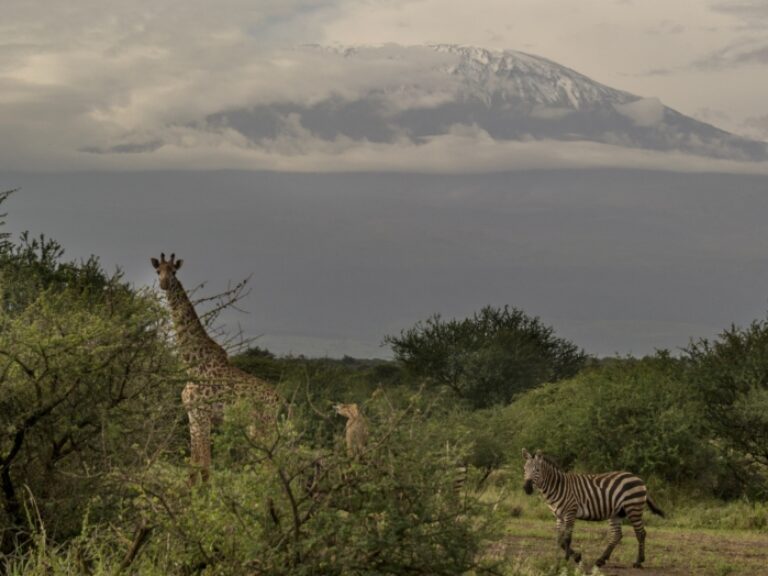
Campi ya Kanzi
If elephants are your thing, you can’t do much better than Amboseli where herds of these magnificent beasts graze in the shadow of the equally magnificent Mt. Kilimanjaro. By far the best place to stay is not in the park itself but 30km away at Campi ya Kanzi in the Kimana Community Wildlife Sanctuary, situated between Amboseli and Chyulu Hills. It’s a very high-end Maasai-run camp that was set up to aid the local community and conservation projects. Its excellent location means you can see wildlife in the conservancy, Amboseli and Chyulu all from one base.
Saruni Rhino Camp
This camp in the Sera Conservancy, just north of the Samburu Reserve in northern Kenya occupies a stunning location in the semi-desert. Their specialism is a thrilling rhino tracking walking safari, probably my favourite place to see rhinos in all Kenya. I spent five days here and by the end still couldn’t decide if coming within ten metres of the steamroller-like rhinos was thrilling or simply terrifying!
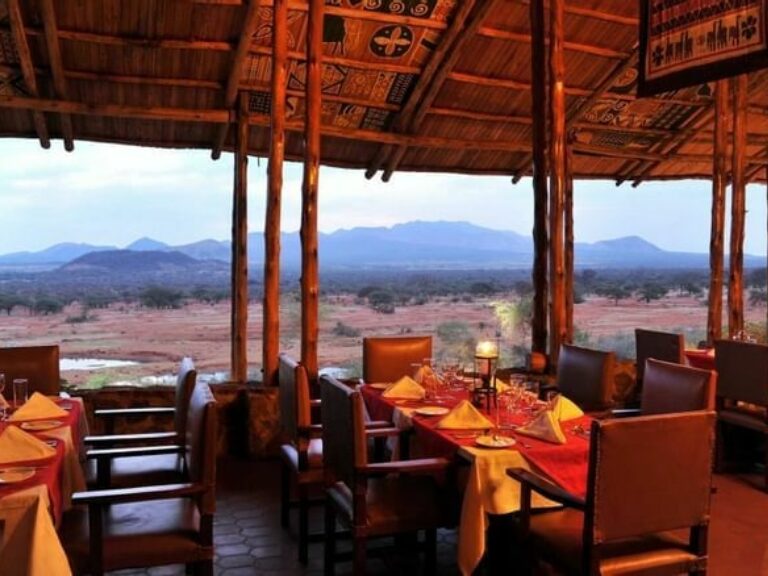
Kilaguni Serena Lodge
In Tsavo West most of the accommodation is fairly expensive (unless you have your own camping gear in which case there are three spartan public campgrounds). A reasonably-priced option is the Kilaguni Serena Lodge – it’s far from a budget offering but the Serena collection is generally pretty good value. If you have the budget to blow, Finch Hattons is the most exclusive camp in the park, with an eye watering price tag to match.
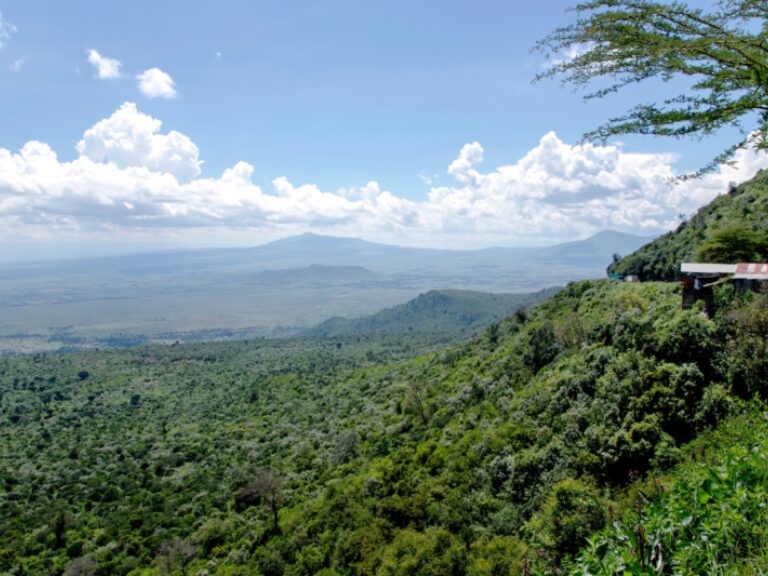
Best walking safari
In my opinion the best way to experience a safari is to ditch the 4X4 and explore on foot. With a good tracker-guide you’ll see all the little things you’d otherwise miss if you’re stuck in a vehicle all day. Walking is often forbidden within state-run national parks but is usually allowed, even encouraged, in conservancies. If I had to pick a favourite place for a walking safari in Kenya it’d be Loita Hills without question. Although not far from the Masai Mara, Loita Hills is barely visited by tourists despite boasting superb and varied scenery, a lovely climate, very different wildlife to the lower savannah plains, and fascinating interactions with very traditional Maasai culture.
Also, while Kenya doesn’t really compete with the multi-day Tanzania trekking scene, some organised trekking may be found here, as well as in the Aberdares and around Mt. Kenya.
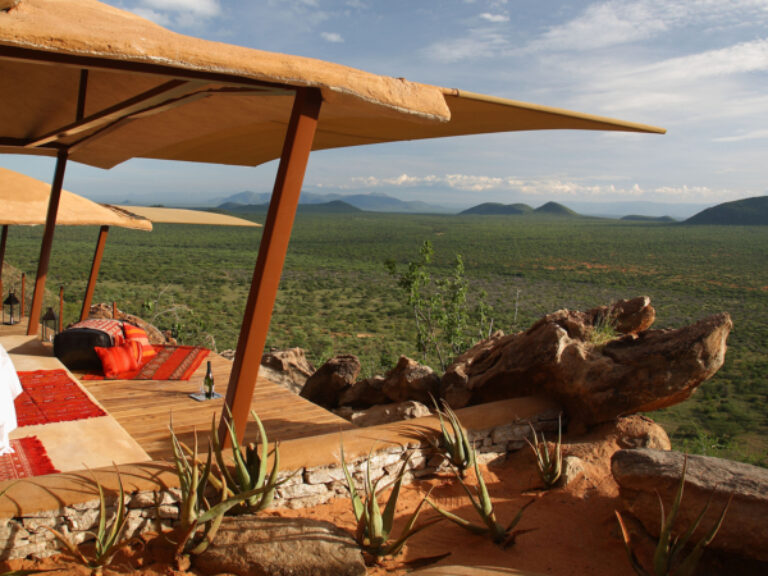
Saruni Samburu
There’s only one lodge within the Kalama conservancy, immediately to the north of Samburu Reserve, and it’s likely going to be one of the most spectacular places you’ll ever stay. Built into, around and onto a huge granite outcrop, Saruni Samburu is almost invisible from a distance but the stunningly turned out rooms offer a cliff side view over what feels like half of northern Kenya.
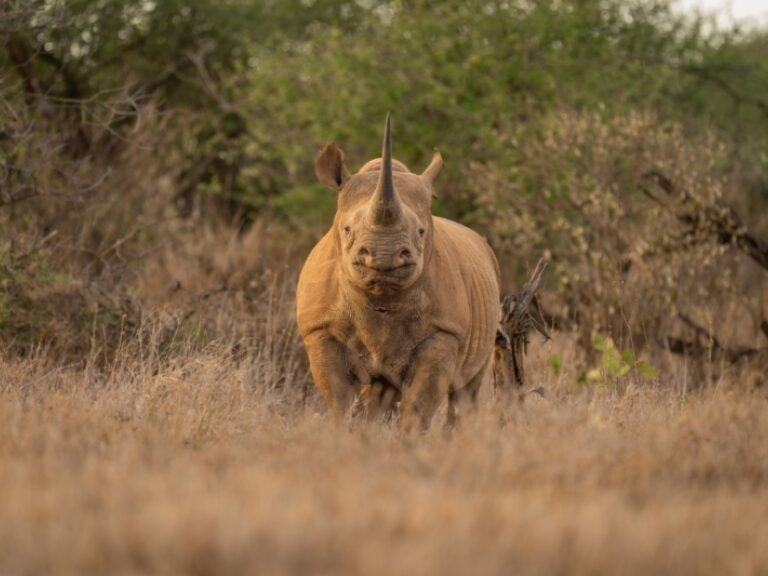
Lewa Conservancy
Lewa, in the Laikipia plateau area, is perhaps the most famous of all Kenya’s conservancies. And for good reason: this is safari to order. Want to see a black rhino? No problem. One of the superb guides will manage to find one. Lions, cheetah, elephant. They are all found here in abundance.
And it’s not just the wildlife that’s outstanding. The landscape is cinematic in its scope. Rolling sun bleached grasslands, table flat acacia trees, meandering rivers and a backdrop of the glinting glaciers of Mt Kenya.
The other great thing about Lewa (and this is common to all the Laikipia area conservancies) is exclusivity. If you’re not a guest of one of the handful of lodges then you can’t go on a safari here.
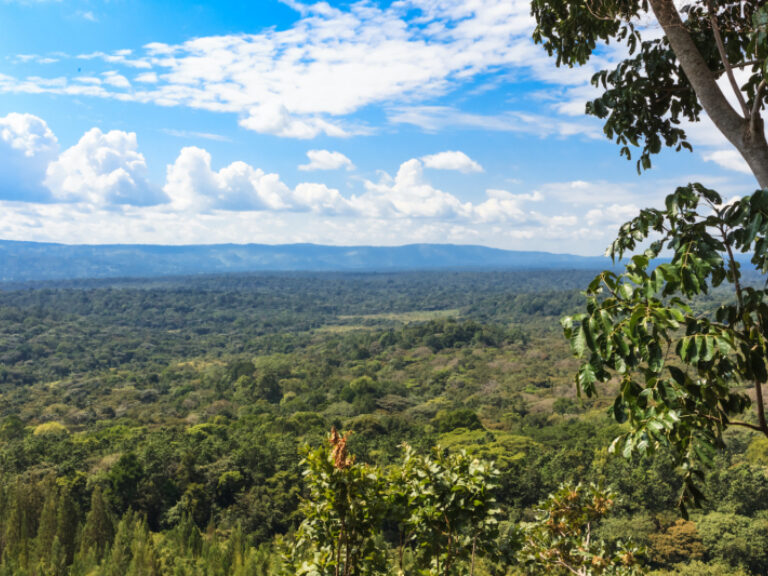
Kenya’s safari hidden gem
Just north of the equator in far western Kenya, is Kakamega Forest — Kenya’s only tropical rainforest. The land here is wet, green and intensely cultivated with a mix of subsistence farming and large tea estates. In amongst all this though are a few pockets of the dense rainforests that once covered large parts of western Kenya.
The Kakamega Forest Reserve is a fine example of this kind of forest and interesting walking safaris here reveal bird and primate life that has more in common with the forests of Uganda and the Congo than anything you’ll see on safari in Kenya. Wander the forest’s network of trails and take in the huge variety of flora and fauna it supports, including hundreds of bird species, some of which are not found anywhere else.
In my opinion, Kakamega is one of the most delightful places in Kenya, but yet hardly any tourists know of its existence. It should be a must visit for any ornithologist or herpetologist. As well as birds, reptiles and primates, I found the visit to the old mine shaft to look for bats especially memorable.
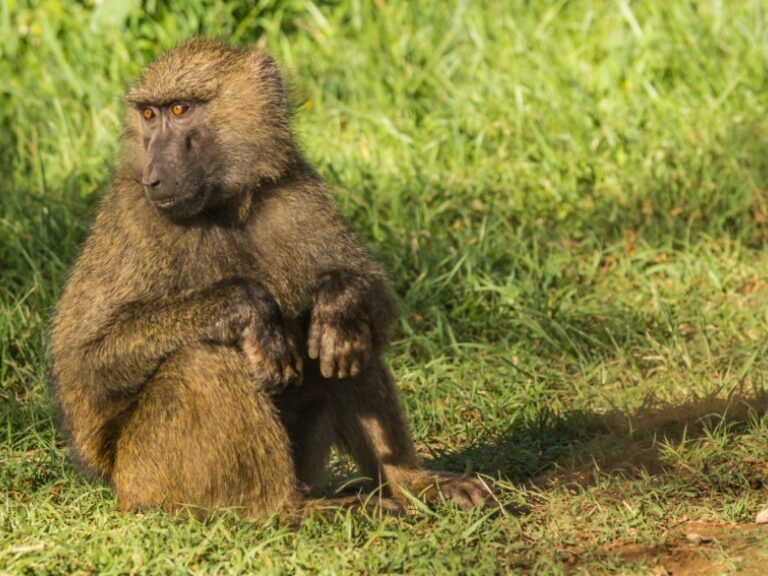
Up close and personal with baboons
Laikipia is known for its rhino conservation, but my own personal highlight in this area wasn’t the rhinos. Rather it was the day I spent with a biologist in very close proximity to around 200 habituated baboons. Having a huge male baboon shove its way past you as it bares its teeth was an experience easily on a par with gorilla and chimpanzee encounters in East Africa. The other nice thing about this particular experience is that it doesn’t involve staying inside an expensive conservancy but rather you are hosted by a grassroots Maasai womens’ project. And hardly anyone – even other Kenyans – know about it!
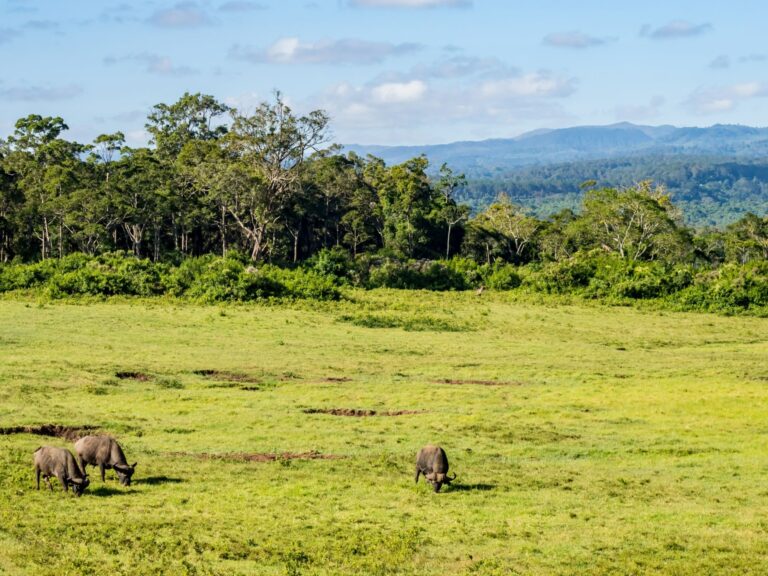
Hiking in Aberdare National Park
A world away from the African safari image of savannah grasses and drooling sunsets, the Aberdares consists of two different ecosystems. A high, cold and often bleak moorland and, below that, dense tangled montane jungle.
The wildlife here is a little different and a little harder to spot. But elephants are very common as are big grumpy buffalo. There are also montane species you won’t see anywhere else including bongo antelope, bush pigs and melanistic leopard and serval.
Unusually among Kenyan national parks, you can also get out of the vehicle here and enjoy long, lonely hikes over the moorlands: I have really enjoyed the sensation of trudging across the bleak moorlands in cold afternoon drizzle while always keeping a beady eye out for roaming buffalo.
The park also has some history. In 1952, a young English lady named Elizabeth was staying at the famed Treetops Lodge here (today’s version is actually a reconstruction of the original) when it was announced that her father had died. And so it was, that on a remote Kenyan mountain slope, that young lady became Queen Elizabeth II. Many years later her eldest grandson, and future king, proposed to Kate Middleton in a small wooden fishing cabin in a spot not so far away from where his grandmother became Queen.
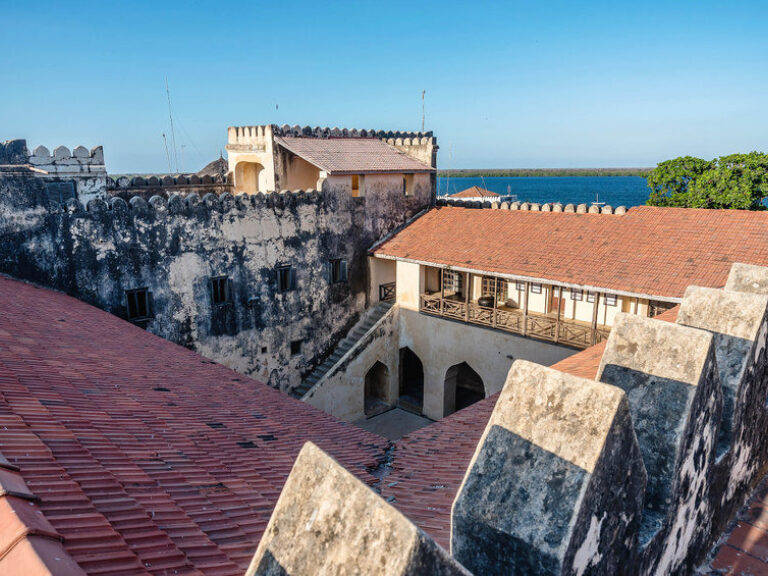
Post-safari beach time
If time allows I highly recommend you find a couple of days to wash away the safari dust on Kenya’s palm-fringed coastline. The country has many beautiful beach destinations but the standard itineraries tend to focus on Diani, south of Mombasa. My vote goes for the underrated Lamu archipelago, and in particular the old Swahili trading town of Lamu, which always leaves me enchanted.
Featured kenya safaris
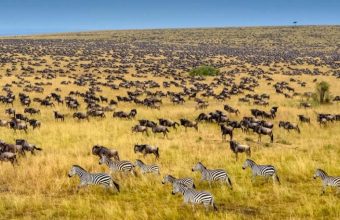
Tanzania and Kenya Safari
The greatest safari on earth, kenya's best safari parks, kenya’s most popular safari parks and lesser-known hidden gems.
In a standard two week safari it’s perfectly possible — in fact I'd highly recommend — to explore three or four different protected areas. Ideally with each one offering a totally different habitat and set of wildlife inhabitants. If I had to pick a favourite, I'd probably vote for Meru National Park, but any of the following could feature on a Kenya safari.
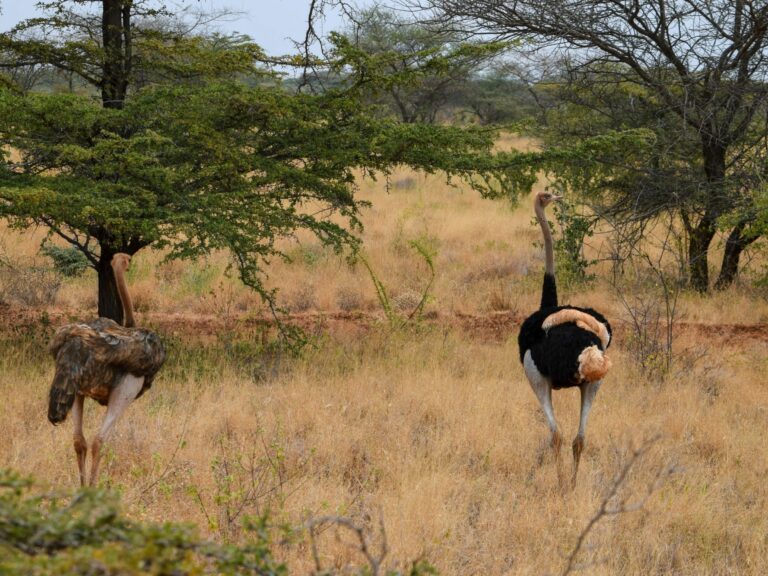
Best for tranquil, crowd-free safaris
Meru, the country’s forgotten national park, is easily one of my favourite of all Kenya’s safari parks. This was once one of the most popular parks in the country but during the 1980s, when Kenya was going through a rough political patch and instability overwhelmed some parts of the country, Meru turned into a hotbed of poaching.
Security and stability have long since returned, yet somehow this park never returned to its former fame. But for those in the know – and that now includes you – Meru National Park is safari gold.

For the classic – if busy – Kenya safari
The very essence of an African safari landscape, the Masai Mara stretches along the Kenya-Tanzania border and forms the northern fringe of the greater Serengeti ecosystem (most of which is in Tanzania ).
This is the part of Kenya in which I have spent the most time (months and months if I added it all up), and was the scene of one of my best ever travel experiences. Some years ago a Maasai friend and I set out on a five week hike that took us across the entire Mara ecosystem. By day we walked alongside the wildlife and Maasai herders. By night we camped out under the stars and slept in traditional Maasai villages. An unforgettable adventure!
This is the place to see large prides of black-manned lions, bellowing elephants, grumpy buffalo and a pick ‘n’ mix box of antelope and gazelles. And that’s before we even touch on the smaller creatures and huge array of birds. But, above and beyond all else, the Mara is renowned for the spectacular wildebeest migration .
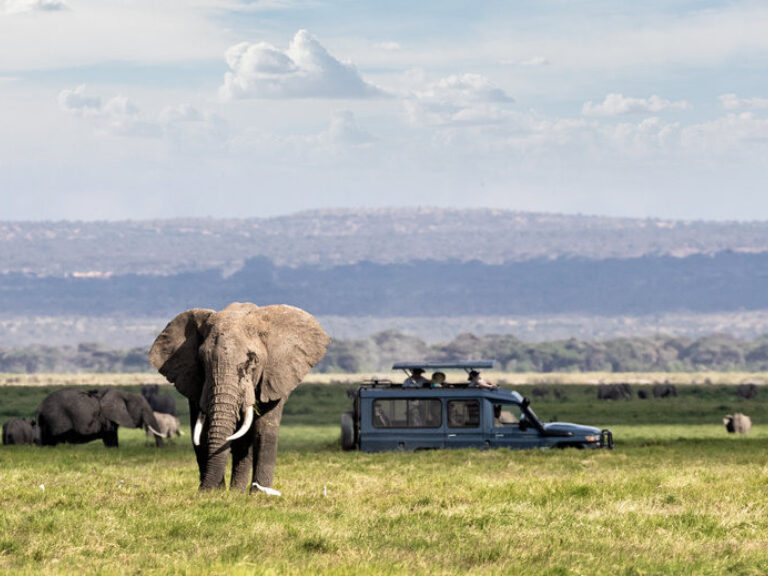
For elephants & Kilimanjaro views
Amboseli National Park is the postcard park of Kenya. This is where those photographs are taken of elephants with a backdrop of the (fast melting!) glaciers of Mt Kilimanjaro. I have spent many dreamy mornings parked under an acacia tree, a thermos of coffee in hand watching the rising sun tinge the snows of Kilimanjaro a pinky-red.
The elephants and the scenery are the real highlights of this park. In dry periods they flock here from miles around to quench their thirst in the swamps and pools that splash the dusty landscape in greens.
Another big reason to visit Amboseli is the chance to see conservation in action in the conservancies and other environmental and community projects surrounding the park.
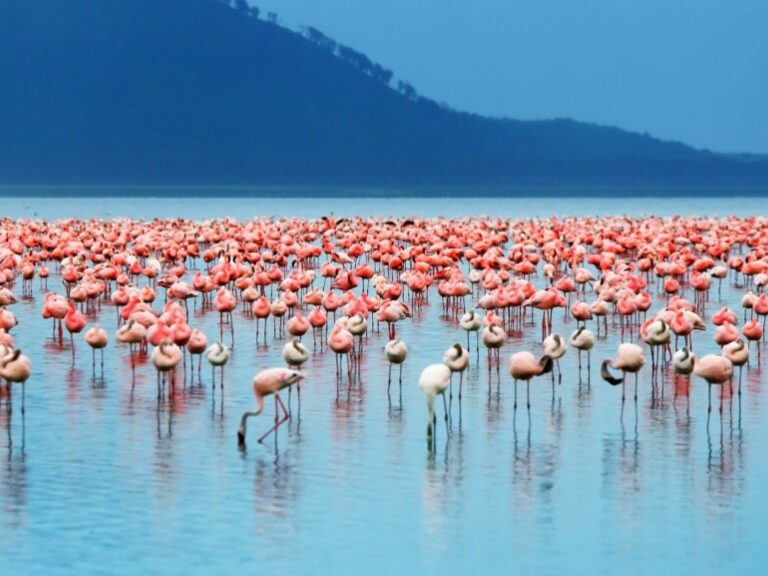
For wetland safari & birdwatching
Just 5 kilometres from the big city of Nakaru, Lake Nakuru National Park’s accessibility makes it one of the most popular Kenya safari hotspots. It’s centred on the large Rift Valley soda lake of the same name, but also encompasses fringing grasslands, acacia woodlands and rocky escarpments.
The park is best known for its sometimes huge flocks of flamingos and a large rhino population. Back in the 1990’s, Lake Nakuru was the first place where I saw a really huge flock of flamingos. I’d seen the odd handful before, but the thousands upon thousands I saw here on that day sticks in my memory. The smell (ah yes the smell!), the noise, and of course the searing pink colours; It was one of the moments that made me fall in love with Kenya.
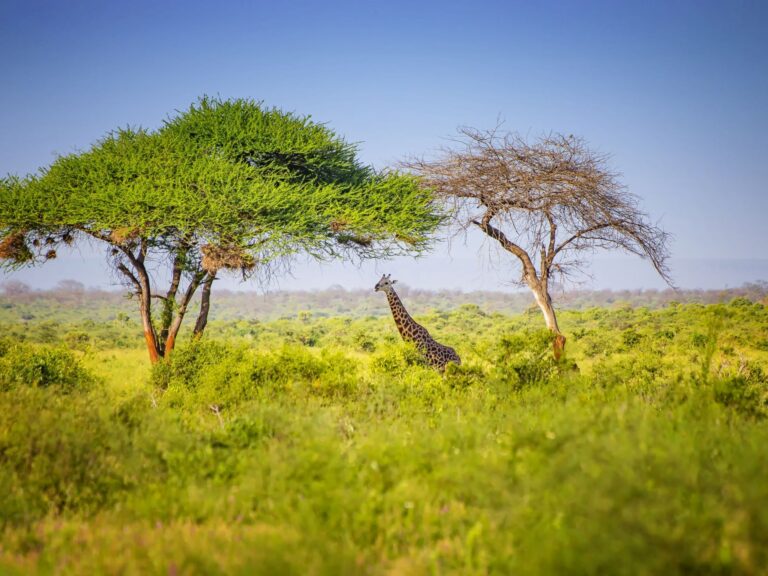
Best for wide open spaces
Combined, Tsavo East and West National Parks cover an enormous swathe of acacia scrub Kenyan wilderness. Tsavo West alone (the bigger of the two parks) covers an area greater in size than Wales, or two and half times the size of Yellowstone National Park.
The two parks are separated from each other by the Nairobi-Mombasa highway and are easy to reach from either city.
Despite being directly adjacent, the two parks are radically different from one another with the green hills of Tsavo East a marked contrast to the red soil and volcanic landscapes of Tsavo West. Because of their diversity and sheer size, I strongly recommend you devote enough time to the parks if you’re going to visit them. The rushed two-day safaris from Mombasa (or Nairobi) simply don’t allow enough time to get much out of a visit.

For world-leading conservation
The Laikipia plateau area in central Kenya is one of the most exciting places in African conservation. This isn’t a single national park or reserve, but rather a network of interlocking private and community-run conservancies where people, livestock and wildlife live together to the benefit of all.
Laikipia hosts all the classic East African safari mammals but is best known for its rhinos, including the critically endangered northern white rhino, only two of which are left alive. Both are female and so, tragically, this is a species awaiting extinction. They can be seen at the Ol Pejeta conservancy.
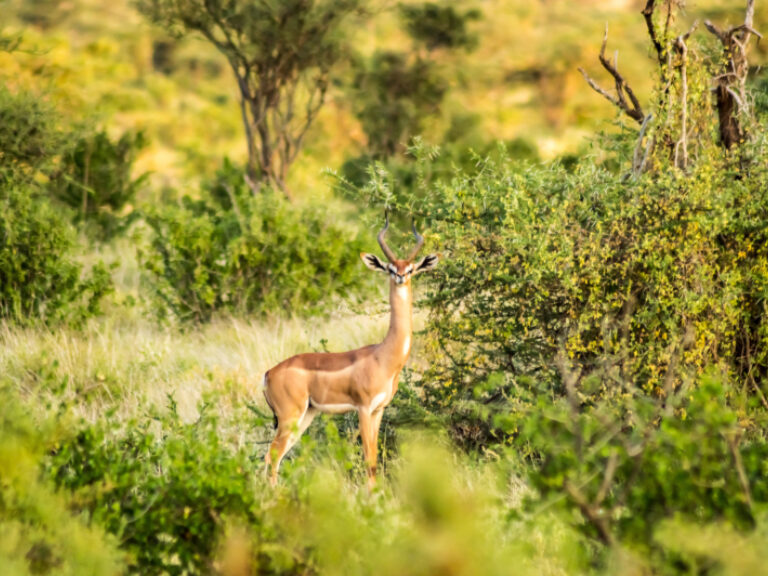
Kenya’s remote far north
Samburu, Buffalo Springs and Shaba National Reserves are three interconnected reserves on the edge of northern Kenya’s vast semi-desert wilderness.
Far removed from mainstream Kenyan life, these northern regions have a wild reputation. The landscape is harsh with endless sunburnt plains of acacia thornbush out of which rise the occasional fertile and densely forested mountain peaks, ranges, table lands and volcanic plugs.
Elephants, in particular, are the main event here. There are large herds who can migrate huge distances in search of water.
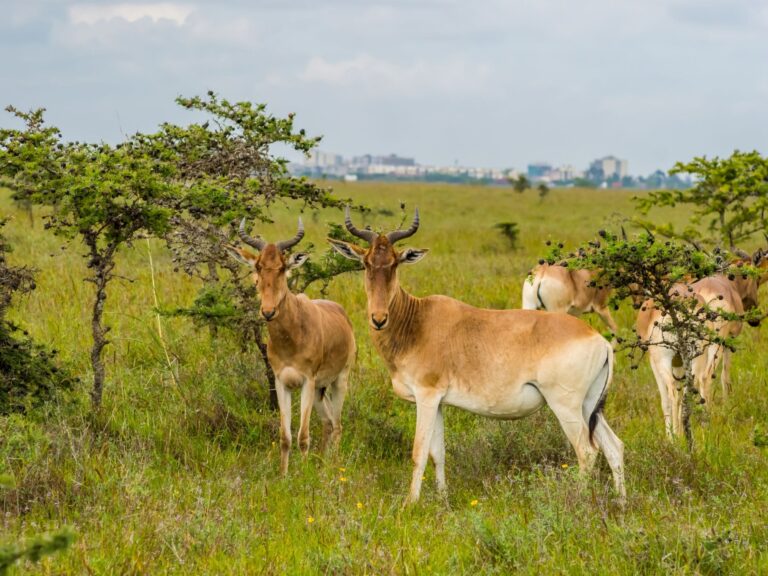
Safari in the big city
While most capital cities have their collection of ornate parks filled with neatly cut lawns, manicured flower beds and perhaps a boating lake, Nairobi has gone one step further.
Its biggest ‘park’ is in fact a 117 square kilometre swathe of undulating savannah grassland and acacia woodland. And while it doesn’t have a boating lake, it does have lions. And buffalo. And rhinos. All of which means that it’s probably not such a sensible place for an after work stroll.
It’s a fabulous safari destination but is woefully overlooked by international visitors to Kenya. This is a shame, because Nairobi National Park is an excellent safari location in its own right. I have been many times, often just for a quick half-day drive from the city. This was the place I first witnessed the thrill of a hunt: a cheetah racing, but failing, to grab dinner for her cubs.

A pair of ostrich in Meru National Park
Kenya safaris: Need to know
Everything you wish you'd known before you booked.
My first Kenya safari was in 1994 and I’ve been coming back pretty much every year since. Here’s what I’ve learned over the years about the best way to plan and book a safari in Kenya.
Mix up your itinerary
My single most important tip for Kenya safari first-timers is to avoid the mistake of non-stop game drives. Standard tour operator itineraries shuttle you from park to park with a gruelling schedule of game drives. Yes, this is the best way of seeing large mammals up close, but the bumpy tracks, early starts and long hours quickly exhaust even the most ardent wildlife-watcher. And there is so much more to safari in Kenya that you’ll miss from racing around in a jeep. Break it up. Look for operators who offer bush walks, village visits, and conservation projects. Or simply take an afternoon or two to sit back under a tree enjoying the sights, sounds and smells.
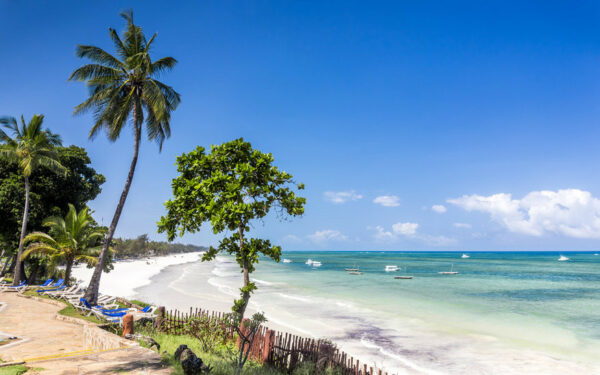
Many visitors to Kenya devote their entire trip to going on safari…
Don’t miss Kenya’s many hidden gems
Most standardised Kenya safari itineraries reduce the entire country to the blockbuster highlights: the Mara, Amboseli, Lake Nakuru… maybe Tsavo and Samburu if they’re feeling adventurous. This does a great disservice to the country’s true diversity. There’s so much more to a Kenya safari than racing around the savannah chasing the big five and I’d strongly advise you find time to visit some of Kenya’s numerous hidden gems.
For instance, out in the far west is Kakamega Forest Reserve which has more in common with the rainforests of Uganda and the Congo than the classic Kenya landscape. In my opinion this is one of the most delightful places in Kenya, yet hardly any tourists know of its existence.
Another personal favourite that’s a world away from the classic Kenya savannah is Aberdare National Park where dense tangled montane jungle gives way to a high, cold and often bleak moorland. Unusually among Kenyan national parks, you can also get out of the vehicle here and enjoy long, lonely hikes over the moorlands.
But that’s not it: Saiwa Swamp, the Chyulu Hills, Hells Gate, Ruma National Park, and many more that rarely feature on the mainstream Kenya safari circuit but are usually accessible on a self-drive safari, or with more specialist safari operators.
Get out of the safari bubble
Many safari goers, especially those on a high end tour just bounce from one heavenly safari camp to another. Sure, you live the Hollywood Africa dream but you’ve not really experienced real Kenya. Instead, hop on a bus and head out to one of the numerous small market towns where most Kenyans live. You’ll experience a totally different side of the country and it’s one that will stay with you long after the sundowner safari drinks fade from memory.
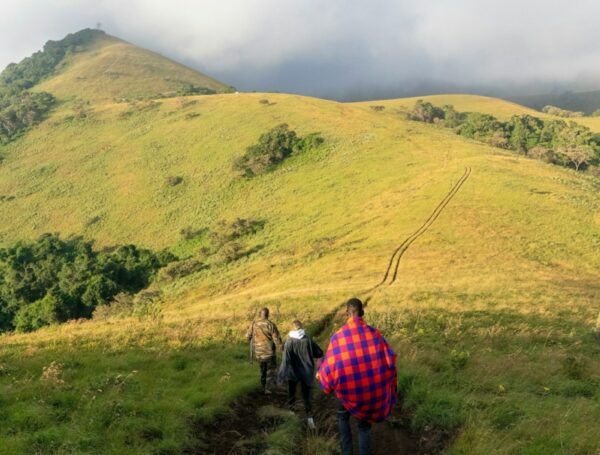
Kenya off the beaten track
The parks and reserves covered in my Kenya safari guide are only the best-known and most visited of the country's numerous protected and other natural areas…
Stay in at least one conservancy
National parks, reserves and conservancies are mentioned a lot in this guide, but just what is the difference and why does it matter?
A national park or reserve is a government or local council run protected area. Most of the best-known protected areas in Kenya fall into this category.
These areas are run solely for the benefit of wildlife and tourism, sometimes at the expense of local people. Tourism in these areas creates jobs, but locals are often forbidden from entering these protected areas other than for work reasons and communities were often (but not always) removed from their land when the parks and reserves were created. Corruption can be a problem with the money generated by these parks not always going where it should.
A conservancy is a different affair. A conservancy is normally located on either communal land owned by the community as a whole or on private ranch land and has no official government status. On a community conservancy the tourism stakeholders (i.e. the safari camps) lease the land from the local communities on the condition that the land is managed in a manner that is of benefit to both people and animals. The (normally very high) fees you pay to stay in a conservancy go toward paying the land leasing fees as well as various community and environmental projects.
Other conservancies may be located on private ranchland, in which case they have to make enough money for the landowner to financially justify turning his land over to wildlife conservation over cattle ranching.
In other words, a conservancy is run for the benefit of both wildlife conservation, tourism and the needs of local communities (in many cases local people are allowed to continue to graze their cattle on a conservancy but in a controlled and sustainable manner).
All of this means that staying in a conservancy is not just a great safari experience but it’s also very good news for conservation!
Do a homestay
For a cultural experience you’ll never forget, try spending a night at a Maasai homestay near the Masai Mara. Finding authentic, community-run homestays can be a bit of a minefield. I can recommend Sekenani Maasai Development Project (Semadep) but there are others – make sure you book with a community owned and operated outfit, and check reviews carefully.
Caution needed: "Human safaris"
In my opinion, one of the big problems with the safari industry is the way it prioritises seeing wildlife over having meaningful connections with local people. In fact, other than being served by their guides, drivers and camp employees, a typical safari-goer might not have any interaction with a local at all. To me, this is the exact opposite of how it should be done! In my experience, a good trip to Kenya isn't just about seeing wildlife: it should put intimate, authentic interactions with local people at the heart of the whole experience. You can make genuine connections and real friendships as you sit around, sharing stories, laughing and learning from each other.
On the other hand, mainstream Kenya safaris are often sold with "village tour" or even "slum tour" add-ons. These "goldfish bowl safaris" as I call them are unethical and nothing short of exploitation. They violate the privacy, integrity and dignity of local communities and undermine sustainable development by perpetuating a myth of backward, poverty-stricken people. The traveller thinks they're doing the right thing by getting some cultural interaction, but in reality it's deeply damaging. I strongly encourage visitors to avoid anything that feels contrived, and look for trips that put real people at the heart of the experience, rather than an afterthought.
How to plan & book a Kenya safari
There are three broad categories of safaris in Kenya.
The first and easiest option is to book a week(s)-long, multi-stop itinerary through a tour operator, either locally-based or international. This provides the most hand-holding and support for cautious visitors, plus more protection should things go wrong. The potential downside is getting shunted onto one of the more formulaic itineraries and simply following the crowds around the most popular parks. If you book a full tour with an operator, try to find a genuine specialist and ask about visiting some of the lesser-known locations mentioned in this guide.
Secondly you can simply show up and book a safari tour once in-country from the hundreds of operators in Nairobi. There’s nothing inherently wrong with doing it this way but I strongly advise you don’t just book something in the street. Do your homework first and find a reputable, responsible operator. Things to double check include whether park entry fees are included in the price, vehicle type (avoid cramped minibuses), and accommodation type.
Thirdly, and probably my recommendation for all but the most cautious of visitors, is to book the accommodation yourself, rent a car (or a car plus driver), and head out solo. You can take your own camping gear or book into lodges or camps (booking ahead is essential!), or mix camping with more comfortable nights in lodges. I strongly advise renting a vehicle plus driver. It’s often cheaper plus you get an unofficial local guide who knows the ropes. A good driver will become a cultural and language translator, wildlife guide, fixer, and general guardian angel.
Aim for shoulder season if possible
High season in Kenya is the peak summer months of July to September, before the rains begin. In my experience the best time to visit – especially in the busier parks – is either June before the crowds arrive or September-October as the crowds are thinning out, wildlife viewing is excellent and temperatures are ideal.
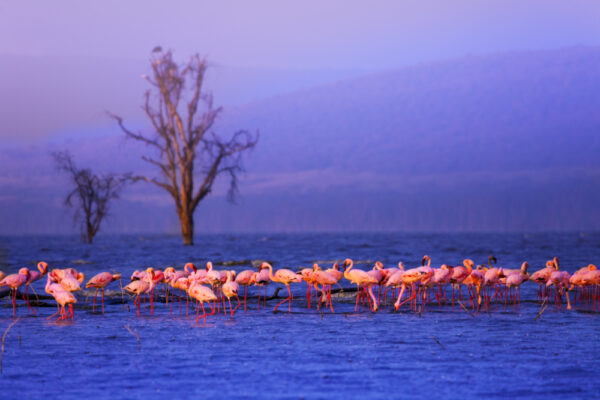
The best time to visit Kenya for safari
January & FebruaryThis is a hot and dry period…
Be prepared to splash out!
There are almost as many different ways of doing a safari as there are stripes on a zebra and how, when and where you safari makes a huge difference to what you pay. Expect to pay anything from $150 to $1,000+ per person per day.
You can find very low budget two or three day safaris to the Mara from around $250 all in, but these are generally rushed, crowded and uncomfortable. If you’re looking to shave off some costs without compromising on the experience, consider doing a DIY camping safari with your own vehicle and driver.
My other big Keny safari tip is to spend as much as your budget allows on fewer nights in better conservancies and camps. Packing more into fewer days gives you much greater bang for your buck.

Kenya safari costs
For a multi-day, mid-range safari visiting some of the big name parks and reserves then you’re looking at around USD $300-600 per person, per day…
Kenya safari FAQs
Your questions, our expert answers, is it safe / a good idea to rent a car in kenya and drive yourself around, or is it better to join a tour.
Yes, it's perfectly easy to do a self-drive Kenya safari . When you ask if it's "safe" that depends a little on what you mean. If you mean are there bandits, car jackings, dangers from wildlife, etc, then no you are quite safe. Instead the danger is from other drivers, as the driving conditions can be a little 'hectic' in places and accidents are common.
I'd recommend hiring a car with a driver, which can be a cheaper and, in my opinion, a much better option. A good driver will know the lay of the land, the driving conditions, best places to stop for lunch, etc. And they are often knowledgeable of the wildlife. A good driver will be both your driver and guide, and probably become your friend!
Almost any tour company in Nairobi or Mombasa can organise a private vehicle with a driver. Standards and prices vary hugely, so explain to the tour company exactly where you want to go and get in writing exactly what is and isn't included. Pay particular attention as to whether fuel, and the drivers food and accommodation is included in the rates. Also make sure you're booking the right vehicle: a 4WD may be needed for more remote areas.
Where’s the best place to see the big five in Kenya?
Seeing all the big five (lion, leopard, elephant, buffalo & rhino) in one park is hard. Only Lewa and some of the conservancies in Laikipia can honestly claim to offer easy sightings of all five. But, who cares! This fixation on racing around to tick off just five species is an anachronism from colonial-era big game hunting days. There’s so much more to Kenya’s wildlife and the modern safari experience.
We're visiting the Masai Mara but would like to visit another area on safari in Kenya. Can you recommend anywhere very different to the Masai Mara to see different wildlife and landscapes?
The most common combinations for a short add-on to the Masai Mara are Amboseli , Laikipia or the Samburu area.
For your requirements of a different habitat and wildlife then without doubt I would suggest Samburu National Reserve. This is a much drier and hotter area than the Mara with different vegetation and animals. And, even the animals you might have seen in the Mara are different up here with different species of giraffe, zebra and ostrich all present (and in my opinion all more beautiful than the kinds in the Mara). The park is also superb for elephants.
Samburu, though still popular, is notably quieter than the Mara and, once away from the river, it's easy to feel you have the place all to yourself (and especially if you go into the co-joined Buffalo Springs and Shaba reserves). Depending on when you are there you will find direct flights from the Mara, but otherwise will have to go via Nairobi. If you're driving it's a long way – a 10 hour non-stop drive, so flying is the better option.
Would you recommend staying at Elephant Bedroom Camp in Samburu Reserve, or at Sarara Camp in Namyunak Conservancy?
The quantity and ease of seeing the wildlife is better in Samburu Reserve than in the neighbouring Namyunak Conservancy (because the wildlife is drawn to the river running through the reserve). But there's not a huge difference in habitats or species between the two.
Elephant Bedroom Camp, in Samburu, is a fabulous, small camp. You'll see a lot of elephants and the owners are some of the worlds foremost elephant experts.
In Namyunak Conservancy, Sarara Camp is one of the most exclusive – yet low-key – camps in Kenya. There's slightly less wildlife than in the reserve but it's very close to the reserve and safaris from Sarara often enter the reserve.
The bonus with Sarara is exclusivity. You and the other camp guests will have the entire place to yourself meaning no crowding around animals (though that's rarely a problem in Samburu).
Unlike in the reserve itself you can do walking safaris in the conservancy and there will be more interaction with local people. The final plus is that by staying on a conservancy you will be actively helping to fund private/community conservation initiatives, which isn't always the case when staying only in a reserve or national park.
Overall then, I would opt for Sarara Camp, but I suspect it does cost more, so it might come down to budget!
We are travelling with a large group of 5 families with 3-4 kids per family. What are the best budget friendly safaris in Kenya in July?
If most of the children in your group are very young, your options are fairly limited as the reality is that a longer, multi-day safari can be a bit much with very young kids. I first did a safari with my kids when they were five and two years old and although it was good I probably wouldn't do it again! Past the age of about eight or nine the safari experience gets much easier, as they'll will tolerate sitting in a jeep on a bumpy road for longer.
Do be aware that some safari camps don't accept children below the age of 12. These are normally the unfenced camps and it's done for safety reasons.
You will also need to keep in mind that you will either need several safari jeeps and to travel in convoy or a bus (and these aren't always allowed in some parks). Because you will be travelling with so many children I would suggest small safari camps which you can book out for your group alone. Some of these are more child friendly than others. Some possibiltles that I believe might work well for your group are: Maji Moto Eco Camp, Loita Hills Basecamp, and if you are interested in a Maasai homestay style experience then I'd suggest Semadep Camp, who can arrange homestays around the Masai Mara.
As for specific parks and reserves the Masai Mara area is good because there's a lot of animals to see everywhere you look which keeps children interested. Also good are Nairobi and Narok national parks because of easy access and good roads. Lake Naivasha is good for families too.
It would be easy to combine all these places into a 10 day safari and then you could maybe finish up on the beach (Lamu and Watamu are both superb for families).
Can you recommend any family-friendly camps/lodges in the Masai Mara?
I would suggest rather than staying within Masai Mara proper, stay in one of the conservancies that now fringe the Mara.
In the most basic of terms these are like private, community-run wildlife reserves. Conservancy operators lease the land from local people and each local family receives a guaranteed monthly payment. The conservancy also provides employment and sets up development projects. People continue to graze their cattle but in a more controlled manner. And in return, fences are removed and the wildlife encouraged to return to the lands they were once driven out of. The conservancies have been a great success both for wildlife and local people. And, for tourists, they offer a very exclusive experience and the world's finest safaris.
Each conservancy has only a handful of very discreet high end camps and only guests of those camps can go on a safari in the conservancy, which means crowds of vehicles around a lion are non-existent.
The conservancies also allow activities not permitted within the reserve such as walking (highly recommended), bush camping, night safaris, etc. This makes them ideal for kids because it breaks up the routine and allows a little more freedom.
The safari vehicles and guides used in the conservancies are absolutely the best in the game and the wildlife populations are the equal of the actual reserve. However, there's a catch (of course...), conservation like this doesn't come cheap. All of the conservancies are superb but some names are Naboisho, Mara North and Nashulai Maasai Conservancy (this last one being slightly cheaper than the others and lots of focus on meeting local people). As for actual camps you cannot go wrong with any of them. All the conservancy camps are superb. I'm a big fan of the Basecamp offerings, Off-Beat and Kicheche. All are a little less extravagant than some of the other camps.
If you want to only visit the reserve and not a conservancy then I suggest either Basecamp Mara, Oldarpoi or you could go for a Maasai homestay in Sekenani village. Expect basic but perfectly comfortable rooms but an amazing experience. Your kids would really enjoy this.
Is February a good time to visit the Masai Mara, or would June-July be better? What would be the differences?
February is a very good time for safari in the Masai Mara , but also very different to the experience in June and July.
It's hotter and drier in February and generally there are fewer other tourists. There will still be plenty of zebra and wildebeest around but these are the non-migrating resident herds, so they don't form the massive iconic herds that you might see on TV.
July is good because the migrant wildebeest are all normally in the Mara by then, but its also absolute peak high season so can be busy and expensive. June is perhaps my overall favourite month. Everything is green after the rains and it's nice and cool with far fewer tourists than July, but the first migrant wildebeest might start to arrive (it all depends on rains and the state of the grass).
In short, all three months are excellent but each is different so it might be best to go with whatever just suits your timings better.
I will be in Kenya in early March and am looking for a five day safari for wildlife photography and birdwatching. Where would you recommend for me noting it is the start of the rainy season?
Early March is still a bit early for the rainy season so you might just get the odd thunderstorm. If birds are your real interest and you only have five days then probably the easiest is to go down to the Masai Mara via the Rift Valley lakes of Naivasha and Elementia or Nakuru. This would give you a good range of avian habitats and species in a short space of time. Don't forget as well that Nairobi itself has some excellent birding in the various forests and parklands in and around the city. Plus of course, there's the superb Nairobi National Park where you will see a lot of wildlife and birds.
We can't travel during the migration river crossings, are there other impressive spectacles at other times of year?
Yes! I think calving season during the wildebeest migration is just as spectacular as the more famous river crossing period.
This period runs from December to March around the Ndutu Plains to the south of Serengeti. During this time the wildebeest and zebra stampede over the plains preparing to give birth to thousands of calves. At the same time the big cats are on the lookout for an easy snack. With vast numbers of animals, their sounds and smells, all of the little calves, and the big cats on the lookout... it's theatre on an epic scale and you cannot be disappointed. And the extra benefit is that it's a much shorter drive here than to see the river crossings.
Robbin Meulemans
In this guide:, typical prices for a safari in kenya, when to go on safari in kenya, things to do in kenya other than safari, best safari camps and lodges in the masai mara, about the author.
Stuart is an award-winning travel journalist covering safari, trekking and conservation in Africa for the Lonely Planet, Rough Guides, BBC, Bradt Travel Guides, amongst many others. He is the author of Walking With The Maasai , a journey through some of Kenya's lesser-visited Maasai lands.
Featured tours

Kenya & Tanzania East African Adventure
21 day small group tour, other guides you might like, gorilla safaris, an expert guide to seeing gorillas in the wild.
Philip Briggs
South africa safari, an expert guide to safaris in south africa.
Anthony Ham
Wildebeest migration safaris, an essential guide to planning a migration safari in tanzania and kenya.
Hans Cosmas Ngoteya
Safari in zambia, an expert guide to zambia's best safari parks, camps & lodges.
Sarah Kingdom
Safari in tanzania, an expert guide to tanzania's best safari parks & camps, safari in botswana, an expert guide to botswana's best safari reserves, camps and experiences, where and how to see the big 5 on safari in africa, safari in africa, our travel writers' top africa safari picks, zimbabwe safaris, an expert guide to the best safari camps in zimbabwe, chimpanzee trekking, an expert guide to seeing chimpanzees in the wild, namibia safari, an expert guide to the best safaris in namibia.
Melanie van Zyl
Featured tours view all.

Why Horizon Guides?

Impartial travel guides
Our guides are written by the leading experts in their destinations. We never take payment for positive coverage so you can count on us for impartial travel advice.

Expert itineraries
Suggested itineraries and routes to help you scratch beneath the surface, avoid the tourist traps, and plan an authentic, responsible and enjoyable journey.

Specialist advice
Get friendly, expert travel advice and custom itineraries from some of the world's best tour operators, with no spam, pressure or commitment to book.
Our guides are 100% impartial and are written by independent, professional travel journalists. We make money by charging carefully-screened travel companies to list their business on our website. Our advertisers have no influence on our editorial content and we never accept payment for positive coverage.
Read more about how we work and what we believe in here .
- Travel guides
- Work with us
Sitemap , Privacy Copyright © 2024 Horizon Guides
Detailed Kenya Safari Packing List (+ Free NO BS PDF)
An African Safari is one of those things that is in many peoples bucket list. Kenya, being one of the most popular safari destinations, may be the destination you have settled on for your African safari and you may be asking yourself what you should take with you.
Having lived in Kenya all my life and visited all of the most popular national parks in Kenya, I thought it would be helpful to write a comprehensive Kenya Safari Packing list that has packing suggestions broken down by month. This guide will help you plan what you should carry when coming to Kenya for your Safari.
In addition to this, I have also prepared a free printable packing list in a PDF with all of the items I have indicated below. Download it for FREE below
This post is long so here is a summary to help you jump to the parts of the article that interest you:
Clothing General Clothes for Adults Beachwear Shoes Clothing Tips Gadgets Gadget Tips Accessories & Miscellaneous items Toiletries Packing Suggestions Month By Month Plastic Bags are Banned
General Clothes for Adults
Pants (4 pieces ).
Your best option when choosing trousers for your Kenya Safari is either brown, green or grey khaki pants. The reason why these colors are the best because they are neutral and do not attract animals attention.
Avoid black, and blue trousers. They attract tsetse flies and also can easily draw the attention of the wild animals you will be viewing.
You can reduce your load if find pants whose legs can be unzipped into a short.
Shorts (3 pieces)
You are likely to visit the beach as you conclude your safari and Mombasa is unbearably hot and humid for most of the year. Shorts will help you stay cool there. Please read about some of the places that it’s inappropriate to wear shorts in Kenya in this article I wrote .
Underwear (Enough for the length of your Stay)
Kenyan laundry services do not wash underwear. It’s actually a cultural taboo to wash someone else’s undergarments. You will either have to wash it yourself or have enough to last you the entirety of your safari in Kenya.
Your underwear needs to be light and be able to breathe in hot and humid environments. They also need to absorb sweat well since you will be in the sun and hot environments for most of your day.
Sports Bras: Kenyan roads can get really bumpy and these will help you stay comfortable. All the roads on Kenyan Game parks are dirt roads and many get potholes in the rainy season.
Polo Shirts/ Tshirts (8 Pieces)
These need to be light and sweat absorbent due to the heat. You will also need to avoid choosing bright shouting colors like red, blue and black and white. Go for neutral colors that blend in with the environment you will be in. Those are Forest green, Gray, brown, etc.
Avoid wearing camouflage or military fatigue-like clothing. It might get you in trouble with the authorities. African governments have a phobia for anything that looks military being worn by the general public. To avoid getting harassed by the Kenyan Police, stay clear of any camo clothes
Socks (7 Pairs)
Get a good comfortable pair that you would wear during the summer. They need to breathe and absorb sweat well.
Fleece Jacket (1 Piece)
This will come in handy in the cold evenings and early mornings. With morning and night temperatures reaching in the 59°F range, you will need to keep warm for those few hours. The heat picks up quickly so make sure the jacket is light enough to carry around when you have removed it.
Instead of a jacket, the ladies can carry a shawl. It will be useful on many other occasions other than the cold mornings so this is the better option for the ladies.
Long Sleeve shirt/ blouse
This will be useful in the evenings when you are outside. Mosquito bites are really itchy and you can protect your arms by putting on a long sleeve shirt in the evenings.
Kenyans are generally more liberal than those of some of our neighbors like Tanzania but we still hold very conservative views towards dressing. You can wear your regular swimsuit to the beach but keep in mind that topless swimming is not allowed in any of the beaches in Kenya. So in choosing your beachwear, you will want to carry the following:
- Your swimsuit
- Swimwear coverup
- Flipflops that you’re ok with getting wet
Comfortable shoes (not Boots) plus Sandals (one pair of each)
Don’t carry boots.
You will spend a lot of time seated. Either in the car or at the hotel. You will occasionally be standing in your car to view the animals but the rest of the time will be spent on your seat. Therefore, when choosing your footwear, you will need to pick a comfortable flat pair of shoes.
Avoid carrying hiking boots unless you are going to be doing some outdoor adventure stuff like hiking in Hells Gate or climbing up Kilimanjaro . Its overkill and you will be really uncomfortable if this is the only pair of shoes you carried.
Pick a sturdy pair
One thing you will need to pay attention to is how well built your shoe is. When out on safari, the nearest place you can buy a quality pair of shoes if the ones you were wearing get torn may be several hundred miles away. You need to have a shoe that will be strong enough to endure several hard trippings on a rock .
Pair of sandals or flipflops
These will come in handy if your hotel or camp doesn’t provide any. You will need them when going to shower. Some camps have showers that separate from where you will be sleeping and it would not be advisable to go there barefoot.
Waterproof raincoat or umbrella
This can be a light jacket to cover you up on the off chance you might be caught in the rain. You might have to walk from your car to the hotel building with the rain pouring hard and you will want to keep yourself and your equipment dry.
Clothing Tips
Safari clothes.
- Choose neutral colors that blend in with the bush environment. This will allow you to come up close to the wild animals without spooking them.
- Wear full-length pants on a safari drive. This will help you keep mosquitoes and other bugs from biting your legs when out on a game drive.
- Temperatures change within minutes in the morning and evenings. Layer up your clothes to keep warm in the morning but stay cool when it gets hot.
Avoid revealing clothing
Kenyans are pretty liberal when it comes to dressing. However, these are usually city dwellers and you will find that the people in the villages are more conservative with what they wear. I would advise you to pack clothes that are not very revealing when going for your safari. It would also be a good idea for the ladies to pack one set of clothes that cover up your knees, shoulders, and torso for when you will be out and about in busy markets and the streets.
Laundry services in Kenya
- Leave an allowance: Most laundry in Kenya is sun-dried and so you need to have an allowance of extra clothes just in case the load you gave takes time to dry. This can happen in the colder months of June and July.
- Kenyan Laundry doesn’t wash underwear: Most of the hotel staff dealing with laundry are male and it’s considered a cultural taboo for a man to wash ladies undergarments. For this reason, almost all the hotels you will visit in Kenya do not wash undergarments.
Camera with Zoom Lens
Your camera needs to zoom in to animals that may be at a distance. Some animals are either shy or rare you may not be able to get a good shot if you have the regular kit lens. Shop around for a good lens for the safari.
Extra Memory cards
If you are anything like me, you get trigger happy with your camera when you see something you like. To make sure that you don’t run out of memory space, have a number of extra memory cards for your camera. Expect to take about 1000 photos per day if you are very trigger happy and this can add up if you are shooting at high resolutions.
If you decide to carry your cellphone with you, make sure it’s unlocked for international use. When you arrive in Kenya, you can get a Kenyan sim card and get connected.
The challenge with carrying your phone with you is that you will have signal issues when out in the bush and the phone might not serve its purpose.
This is one of the things that can easily get forgotten if you are carrying a large number of devices. One trick that I saw is plugging in all your chargers into an extension cable and packing the extension cable into your luggage. When charging your devices, you will just need to plug in that one extension cable and it will charge all your devices.
Power Adapter
Kenya uses 220-240 Volts electricity and this is different from the USA which uses 110V electricity. To ensure that you do not damage your devices, you need to use a power Adapter that converts the power to a voltage that is compatible with your devices.
Extension cable
Useful when you have a number of devices that need charging all together but only one power outlet.
When you have a number of devices, you may need to leave your things for safekeeping at the hotel reception. Having a lockable safety bag will help keep your things safe.
Gadget Tips
Carry old devices except camera.
To reduce the risk of losing a new device that you paid heftily for, carry an older phone and tablet. You will feel less afraid of losing your gadgets and
The phone needs to be unlocked
If you intend to use your phone or tablet to make a call or receive messages from home, you need to ensure that your phone is unlocked to be used internationally.
Accessories & Miscellaneous items
Bright sunny days can be a bit too much on your eyes and a good pair of sunglasses come in handy then. Sunglasses will especially be useful on the beach.
Notebook and pen
When going through immigration, you will need to write a number of things down and having your pen beats asking a fellow traveler for one. You may also occasionally need to write something like directions down and the notebook will help here.
Wide-brimmed Hat
You will, on several occasions, be out in the sun and there is no greater reprieve than getting your hat out. It will get really hot at midday and your hat will prove invaluable at that time.
Beanbag Cushion
As I mentioned earlier, the roads in the National Parks are not paved and are very bumpy. To get that crisp shot and reduce blurry photos, a beanbag will be of great use in keeping your camera steady.
First Aid Kit
You hope for the best but plan for the worst. Have a small first aid kit that has all the items that can help you in case of an incident when you’re out on safari.
Try to find a flashlight that you can strap on your head. You will find it useful when walking in the dark as you often will especially if you are in a camp that does not have indoor plumbing within your tent.
Portable Powerbank
When out on Safari, You will spend many hours away from a charging station and your power bank will be useful when you’re trying to keep that gadget running and you don’t have an immediate source of electricity.
Portable Packs Wet Wipes (1 for every day)
Sanitation is, at times is not taken as seriously as it should in some places in Kenya. You will need to take charge of your own hygiene by carrying a pack of kleenex that you will use whenever you are about to eat anything and after you leave a toilet.
You will find that some places do not have access to running water and this makes the hygiene issue much bigger.
You will be out in the sun a lot and you need to use a good sunscreen to keep you from getting sunburnt. I found the following article by WebMD on how to find a good brand of sunscreen. You might want to read it before making your purchase.
Bug Repellent
Africa has a lot of bugs. Some look scary and others are so small you might fail to notice them. The one insect you need to worry about is the Mosquito since it can give you malaria. Their bite is also really itchy and can a rash when scratched for long. Use bug repellent on your hands, feet and other exposed parts of your body when going outside at night and on your game drives.
Your full Prescription
If you are on any prescription medicine, make sure you carry enough to last you the entirety of your stay and a few additional days in case you have delays when going back home. I would also advisable for you to carry a written prescription from your doctor so that you can buy your medicine here in Kenya if you run out.
Toothbrush & toothpaste
Your hotel will not be providing these and you might not find your favorite brand if you plan on buying these over here. In addition to this, you might be several hours away from the nearest convenient shop when you are out on safari. For this reason, you will want to come prepared with everything you will need for the entirety of your stay.
Soap, Shampoo & conditioner
Your hotel will provide you with this but the brand and quality of soap may not be what you are used to.
Packing Suggestions Month By Month
The packing list I have described above would work for all parts of the year. However, below are suggestions of what you should pack if you are coming on any of the following months:
Kenya Safari Packing List January
January is sometimes a rainy month. If you will be coming in this month, carry a raincoat and a few sets of warm clothing in addition to the packing list I have described above. The shawl or fleece jacket will be important as well. Especially for the cold evenings. It doesn’t get very cold in the evenings so your fleece need not be very heavy.
Kenya Safari Packing List February
February is usually a dry month with hardly any rainfall in the whole month. The temperatures are usually high during the day and it will get slightly chilly in the evenings but not so so much that you would need a heavy fleece. You can probably survive on just a shirt in the evenings this month.
Kenya Safari Packing List March
The end of March is when the rains start in Kenya. This is the month you need a small portable umbrella and a raincoat. It does not get very cold during the day and the nights are also not very chilly. You will be ok if you carry a light fleece or shawl for the evenings but you may not need it since even the evenings are not very cold.
Kenya Safari Packing List April
This month is a lot like March in terms of rainfall. However, it starts getting colder in the evenings and this means that your shawl or fleece will be more important in this month. At the same time, mosquito populations are at their peak due to the puddles made by all the rain and the thick bushes where mosquito love to hide. Carry a lot of long-sleeved shirts and pants to keep your hands and feet from being bitten by the mosquitoes. Also, remember to carry your bug spray and ensure you have taken your anti-malarial medication before you come here.
Kenya Safari Packing List May
The month of experiences lower levels of rainfall compared to the previous months but the temperatures are now dropping. Your shawl and fleece will help with this. At the same time, there will be a lot of bugs, especially at night. If you can carry a can of bug spray, it will help clear them from your room. Sometimes, bugs enter your room if you leave the lights on in the evening and they can be difficult to remove if you don’t have bug spray.
The rainfall will not be high so you may not need to carry your umbrella if it’s too heavy but carry a light raincoat just in case it rains.
Kenya Safari Packing List June
June is the start of the cold season that lasts two months. You will typically need to wear something warm in most parts of the country both in the mornings and at night. The days are not typically sunny but the temperatures normally rise enough for you to be ok without a shawl or jacket.
In the month of June, you want to wear warm clothing in layers that you can take off as it gets warmer.
Kenya Safari Packing List July
July is the coldest month in Kenya. With temperatures going as low as 63 °F, you will need to carry heavier clothing and plan to dress in layers to allow you to shed off some of the clothing if it gets a bit warm. At the same time, have a fleece jacket or shawl for extra warmth in case it gets colder than you anticipated.
It does not usually rain but you can expect a drizzle that can get you wet if you are in it for a while. An umbrella will help with this.
Kenya Safari Packing List August
The month of August warms up and it gets dryer. Expect a lot of sun and mild to warm temperatures. You will not need to carry warm clothing but you can throw in a fleece jacket or shawl for the evenings and cold mornings that can get a bit chilly.
Kenya Safari Packing List September
September is also not a cold month. Apart from the evenings, and early mornings, you will be ok wearing light clothing. The day may get hot so carry light clothing so that you don’t get uncomfortable in the heat.
Kenya Safari Packing List October
We normally experience the short rainy season starting in the month of October. Carry something to protect you and your equipment from the rain like a light raincoat or small portable umbrella.
The rains are not accompanied by very low temperatures so all you need to keep you warm is your fleece jacket or shawl.
Kenya Safari Packing List November
The short rains end in November and the conditions are similar to those of October. Have your umbrella handy and your jacket or shawl to keep you warm in the evenings.
Kenya Safari Packing List December
We sometimes experience a few showers and thunderstorms in December so carrying your umbrella may be a good idea.
The nights will be chilly and there will be mosquito so plan to have something warm to cover yourself and pack some long sleeve shirts and pants to reduce the severity of the mosquito bites.
Plastic bags are banned
As a final word for this article, remember that plastic bags are illegal in Kenya and you will not be allowed to bring them with you on your safari. These include plastic zip-lock bags that might use to pack some of your toiletries. Use a different type of packagings like a cloth bag or plastic containers to avoid frustration at the airport.
Keep in mind that we may receive commissions when you click our links and make purchases. However, this does not impact our reviews and comparisons. We try our best to keep things fair and balanced, in order to help you make the best choice for you. As an Amazon Associate, I earn from qualifying purchases.
Antony Njoroge
Hi, I'm Antony & I'm from Kenya. I love traveling around Kenya when I get off from work and this website is a great way for me to share my local knowledge and tips that will help you travel well in East Africa. Having lived in East Africa my whole life, I share my personal experiences and knowledge with the goal of helping you optimize your East African Safari and make it an unforgettable expereince.
Recent Posts
Internet & WiFi in Kenya (A Complete Tourists' Guide)
If you are planning to visit Kenya any time soon, you might have wondered if Kenya has Internet and whether WIFI is easy to find. I have lived in Kenya all my life and I would love to answer this...
Is Mt Kilimanjaro Active? (And Should You Be Worried?)
If you are planning to visit Mt. Kilimanjaro like I am, you must have been doing a lot of research about your climb. During your research, you might have stumbled upon the fact that Kilimanjaro is a...
You are using an outdated browser. Please upgrade your browser to improve your experience.
Looking for a unique destination for your next holiday? Try St Helena!
Where to go on safari in november.
Some great suggestions where to have the best safari experiences in November
30 Sept 2020
13 feb 2023.
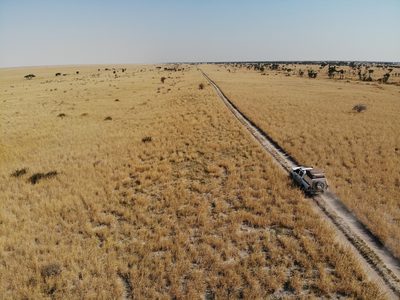
November needs some careful thought and planning when travelling to Africa. It is the start of the rains around mid-late November but it’s one of the best times to visit Botswana and Zimbabwe, especially Mana Pools in early November being a real hidden gem to travel to. November is a good time of year for those looking to save a little on their safari experiences as quite a few lodges and camps will reduce their rates to encourage more visitors during the start of the quiet safari season.
As you go through the dry seasons in Botswana - May-October the game viewing gets increasingly better as the water holes dry up and wildlife congregates. The rains often fall middle to end of November so the first two weeks of November can result in the best game viewing but shoulder season prices. Be wary it can be warm at this time of year, but you will be rewarded. November also combines well with Cape Town and the Garden route.
Zimbabwe, Zambia and the Zambezi River
Mid-November does see the coming of the rainy season in Zambia and Zimbabwe , but if you time it right and head earlier in the month, you could be rewarded with phenomenal sightings as the wildlife will be very much concentrated around the precious water sources and the Zambezi River itself. A trip to Victoria Falls is also rewarding at this time of year as the water levels are reasonably low meaning you can take a dip in the Devil’s Pool which is perched right on the very edge of the world-famous waterfall.
November is also when Zambia sees its famous bat migration happen, the largest mammal migration on the planet as 10 million straw-coloured fruit bats descend on the Kasanka National Park. A truly unique experience for those looking to combine their safari with something a little bit different.

South Africa
Coming into early summer with spectacular thunderstorms brewing, it brings relief to the dry African bushveld which has now started to lose its drab winter colour and a carpet of greenery begins to appear.
This also the start of the lambing season, where herds of impala give birth, gathering together to form large nursery herds for safety in numbers, as big cats and other predators make the most of an abundance of food to feed their own young families. The infamous Kruger National Park with its high wildlife populations make for a great safari destination, as well as the private concessions of the Sabi Sands. But, don’t discount Kwa Zulu Natal as there are some fantastic safari options here also.
As with the rest of Southern Africa, Malawi is playing host to a whole myriad of visiting migratory birds which have flown south from the northern hemisphere winter months. If you’re a keen birder than Malawi should be considered.
Not commonly considered as a diving destination, Malawi boasts some of the best fresh-water diving in the world. The calm, clear, shark-less and tide-less Lake Malawi is teeming with tropical fish with a population of over 1000 different species make for a great diving experience. In some areas night dives are a real highlight as Malawian dolphin fish take advantage of the torchlight and feed on the brightly coloured tropical fish.
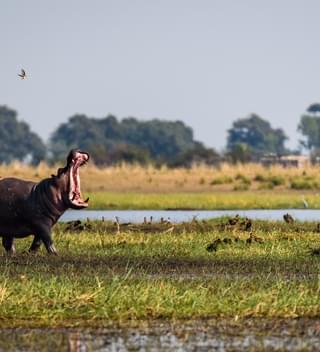
November sees the arrival of the short rains, but most camps remain open and you can benefit from lower rates. Rains tend to be short bursts so if you don't mind a little bit of mud as part of your adventure, it can be a wonderful time for game-viewing, especially in areas that can become very busy at other times of the year such as the Ngorongoro Crater and the Serengeti, which is also where the wildebeest migration is heading towards (away from the Mara) in hunt of fresh pastures brought by the rains. It is also peak bird-watching time in Mahle Mountains.
Beach add ons
If you are looking to combine beach and bush, then November can be a wonderful time to do this.
November is one of the best months to visit Seychelles, although it is also peak season. Stay on the east coast of the Islands to avoid the North West Trade winds and make the most of the chance to see Hawksbill turtles laying their eggs.
It is also peak time in Mauritius with warm temperatures and low rainfall making this a perfect time to visit these islands. Spend your days relaxing on the beach, snorkelling in the clear, warm waters and enjoying delicious freshly caught seafood.
For more inspiration, take a look at our 26 favourite safari holidays , our best African honeymoon ideas or our top family safari holidays.
Planning a safari holiday? Give our friendly experts a call on 01768 603 715 or fill in our enquiry form.
Check out these
Amazing safari holiday ideas for November

Classic Botswana Safari & Victoria Falls Honeymoon
- Okavango Delta
- £6705 PP
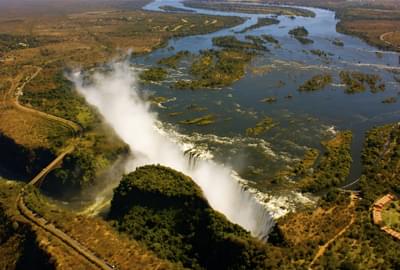
Victoria Falls & Hwange Explorer
- Victoria Falls
- £6450 PP
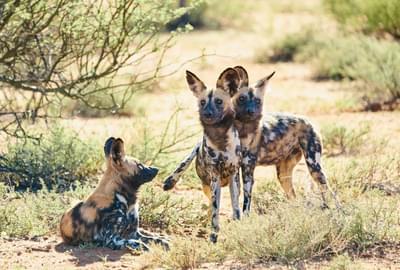
South Africa Safari Adventure
- Tswalu Kalahari
- £15050 PP

Majete Safari and Lake Malawi Adventure
- Majete Wildlife Reserve
- Lake Malawi
- £4285 PP
Speak with our safari experts today
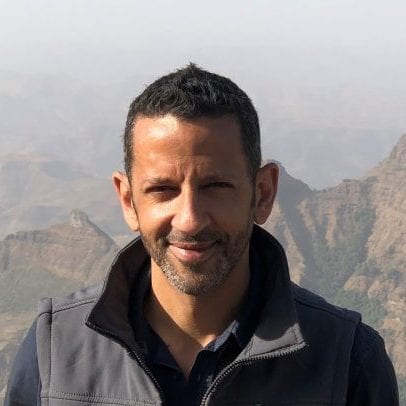
Africa Specialist

Call an expert on
01768 603 715
Plan with an expert
Have a look at our original holiday experiences and then contact us with your brief, or call 01768 603 715
A tailor-made itinerary just for you
Our experts will send you a detailed holiday itinerary specified to your desires. It's our service promise to you.
Value guarantee
Tailor-made doesn't mean expensive! Ask about our price promise and book with financial security.
Thank you for making an enquiry
Our travel experts will be in touch soon. Feel free to call us on 01768 603 715.
Start planning your next adventure
Give us a call on 01768 603 715 , chat with an expert instantly on WhatsApp or fill in the form below and we’ll be in touch.
Tell us about you...
Tell us about your trip….
Please enter your comments.

IMAGES
VIDEO
COMMENTS
November can be a fantastic time for a Kenya vacation—the weather is warm, the tourist numbers are moderate, and the Mombasa Carnival gets underway on the coast. That said, you'll need to prepare for some rain. ... Kenya Wildlife Safari - 10 Days: Highlights of this jam-packed tour of Kenya's most beautiful parks include Amboseli National ...
Weather is mixed with sun and rain, but November remains a good bet for safari. If you like your landscapes lush and abundant, December in Kenya is magical. The rains tend to stop around the middle of the month, and Kenya's parks take on a gorgeous green hue ahead of the upcoming second "high season" of January and February.
Fair. Poor. The best months for visiting Kenya (and the best time for wildlife viewing) are during the Dry season from June to October. The wildebeest migration usually reaches the Masai Mara in July or August and remains in Kenya throughout September. It starts moving back to Tanzania's Serengeti National Park around October.
Visiting Kenya between November & December November is the start of the short rainy season and most of the parks and camps remain open, while some camps close on the Laikipia Plateau . Despite the rain, this is a good time to take the opportunity to enjoy a less crowded Kenya safari at lower prices.
Compare 1,938 Kenya safari tours offered by 178 specialized tour operators. Find the best deals using the largest marketplace for African safaris. Best price guarantee! ... Visiting from November to February also has its devotees. At this time, migrating birds arrive, the rains rarely disrupt travel, and the country is transformed into a lovely ...
October: Hot, mostly dry and not too busy, this is many people's preferred month for a safari. November: The 'short rains' usually start in the second half, so this is low season. December: The short rains usually finish by mid-month, and landscapes often look their best. Month-by-month climate guide to Kenya explains the best times of year ...
The prime Kenya safari destinations are the Central Highlands and areas within the Rift Valley. The south of the country hosts the great migration of plains animals and their predators each year between June and November. In short, Kenya safaris are up there with the very best in terms of wildlife and scenery.
November isn't the best time for beach holidays on the Kenyan coast, since it is quite wet and daytime temperatures can get very high. Game viewing in most safari destinations is good in November, though there is a risk of it being interrupted by storms during the short rains. This transitional month also usually heralds the arrival of large ...
SEP. OCT. NOV. DEC. January is generally a warm and dry month in Kenya, with hot temperatures and low humidity. The weather is ideal for outdoor activities and wildlife viewing, making it a popular time to visit the country. The average temperature in Kenya during January is around 25°C (77°F), with average highs of 29°C (84°F) and lows of ...
Today, we look at another reason as to why November is a great month: the perfect time to take a vacation to the best safari destination in the world, Kenya. Let's start with the weather factor. What's The Weather Like In Kenya In November? Kenya experiences an average temperature ranging from highs of 27°C to lows of 14°C.
On the other hand, the worst month for safari in Kenya is probably April: the height of the wet season, with many camps closed and roads washed away. Overall best months: June & September-October. High season: July-September & Christmas-February. Low season: March-April & November.
Fewer crowds: Experience the rare pleasure of relatively crowd-free safaris and sightseeing tours while you are in Kenya in November and take in the country's top wilderness destinations at your own pace. Diving season: With lower waves and optimal visibility, November is a great month to see marine life in the Indian Ocean. This is the best ...
Kenya will abolish visa requirements for global visitors starting in January 2024, guaranteeing a smooth and expedited entry process. The best times to visit Kenya for a safari are from July to September or January to February during the country's dry seasons, however, these are also the most crowded travel times.
November 30, 2023 November 28, 2023 by kfw. Kenya, known as the jewel of East Africa, is a country blessed with diverse landscapes and abundant wildlife, making it a premier destination for safari enthusiasts. From vast savannahs to lush forests, Kenya offers a captivating array of safari experiences. ... Kenya's safari destinations offer a ...
Kenya Safari Tours and Holiday Packages. Find and book your dream safari in magical Kenya. There are 866 Kenya safari adventures to choose from, that range in length from 1 days up to 21 days. ... November 2024. 576. December 2024. 568. January 2025. 475. February 2025. 420. March 2025. 393. April 2025. 374. May 2025. 348. June 2025. 326. July ...
Together, these two contiguous protected areas host the great migration, an annual occurrence that spans July to November and sees millions of wildebeests, zebras, and gazelles migrate across the grassy plains. ... Map of Kenya Safari Highlights: Nakuru, Masai Mara, Naivasha, Amboseli & Tsavo — 14 Days. Written by Nicholas Mwangi, updated Apr ...
An African safari in November with Ker & Downey is a rewarding experience with lower rates, fewer crowds, and excellent game viewing. ... Kenya. The weather in Kenya is pretty temperate year-round. From October to November, there is a short rainy season resulting in short afternoon showers, but the crowds that were in the Masai Mara in August ...
By Stuart Butler. Meru, the country's forgotten national park, is easily one of my favourite of all Kenya's safari parks. This was once one of the most popular parks in the country but during the 1980s, when Kenya was going through a rough political patch and instability overwhelmed some parts of the country, Meru turned into a hotbed of ...
July is the best time to visit Kenya, as it's Great Migration time! The first herds of wildebeest, zebra, and gazelles enter the Maasai Mara for the thrilling river crossings. It's dry season, so the weather in Kenya in July is cooler and drier overall, and it is a superb month for safari everywhere. Properties tend to book up at record speed ...
With two wet seasons and two dry seasons, packing the right items for a safari in Kenya is vital for a fuss-free wildlife adventure and memorable holiday experience. Int Toll Free Numbers 1-866-438-8677. 1-888-360-2392; 1-800-619-441; ... and the 'short rains' taking place from November to December. A rainy season visit is well worth ...
Kenya Safari Packing List November. The short rains end in November and the conditions are similar to those of October. Have your umbrella handy and your jacket or shawl to keep you warm in the evenings. Kenya Safari Packing List December. We sometimes experience a few showers and thunderstorms in December so carrying your umbrella may be a ...
Kenya. Kenya's short rains usually start in mid to late November and last for a few weeks. However this does not detract much from a great game experience and Kenya still a good destination for safari. The rains tend to come in the late afternoon and evening and day time temperatures range between 24 and 30 degress, with cooler mornings and ...
Botswana. As you go through the dry seasons in Botswana - May-October the game viewing gets increasingly better as the water holes dry up and wildlife congregates. The rains often fall middle to end of November so the first two weeks of November can result in the best game viewing but shoulder season prices. Be wary it can be warm at this time ...